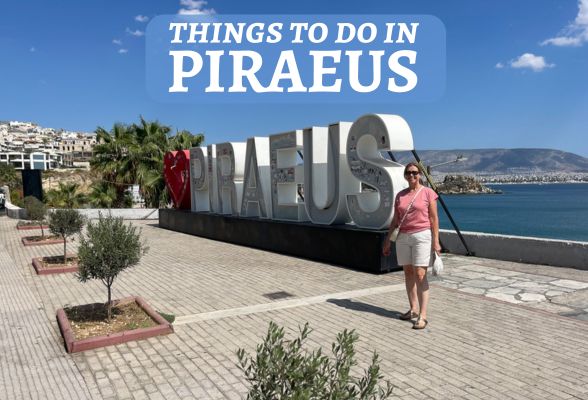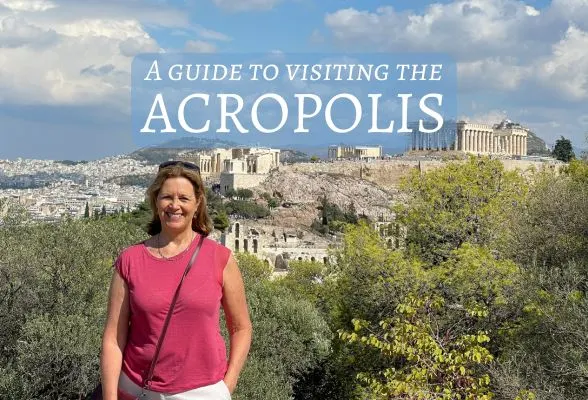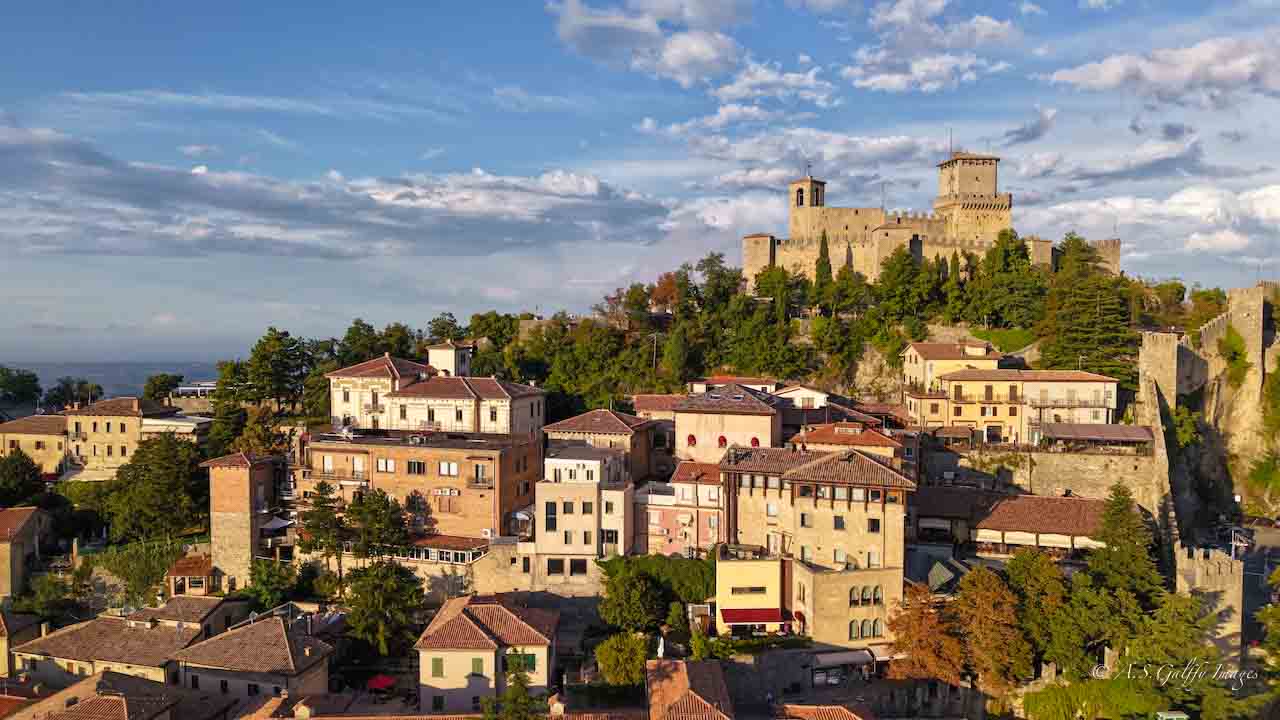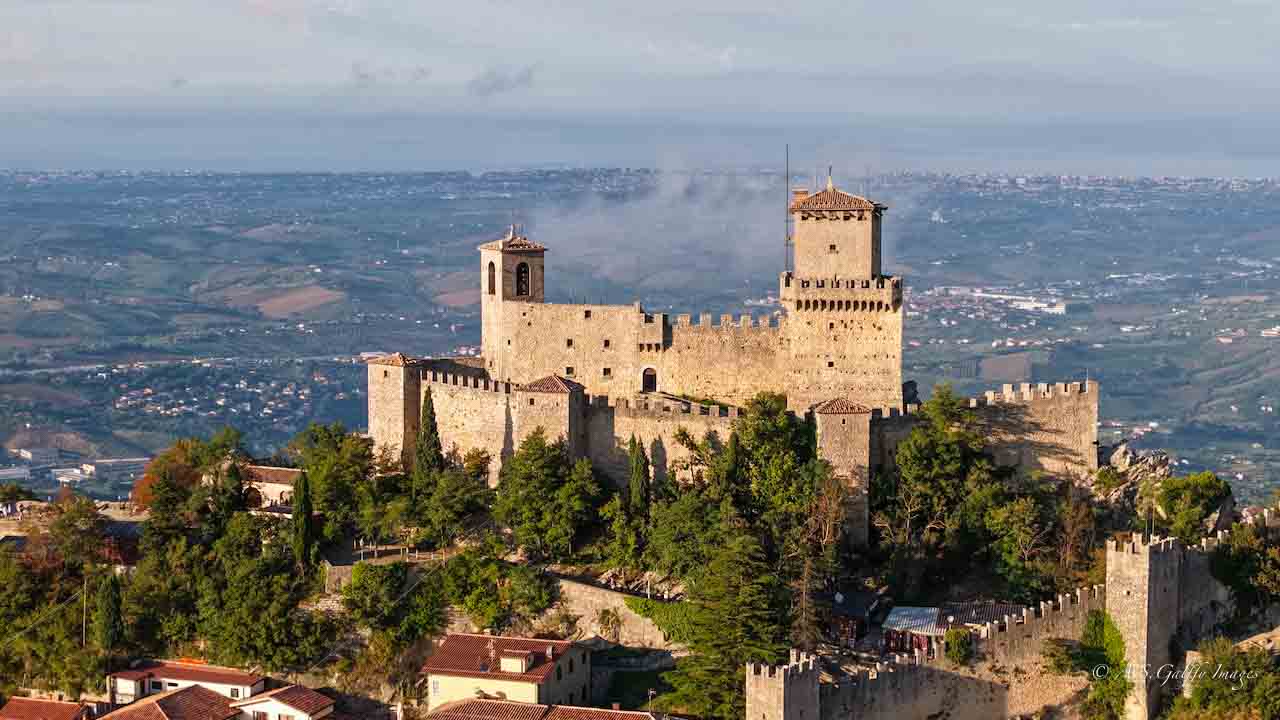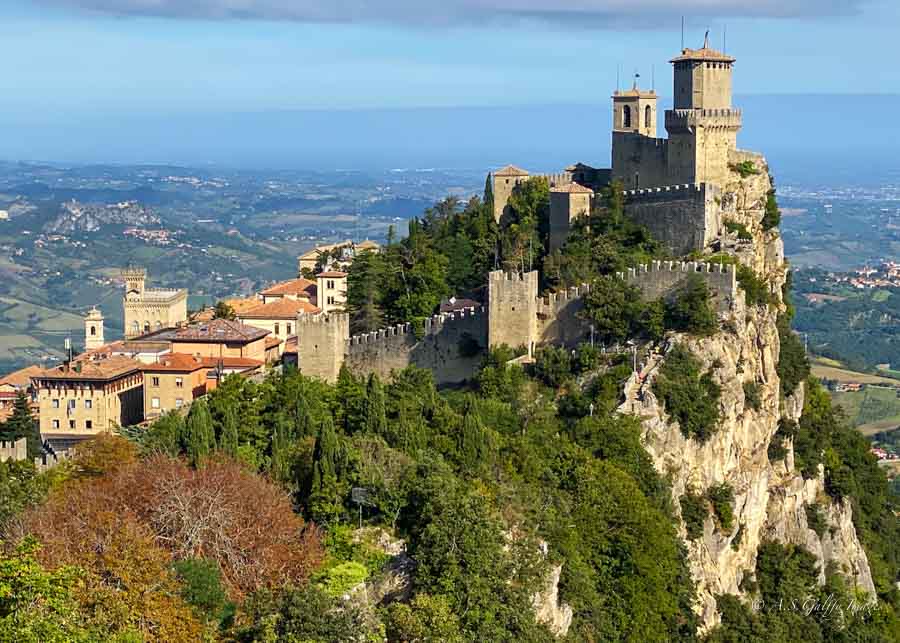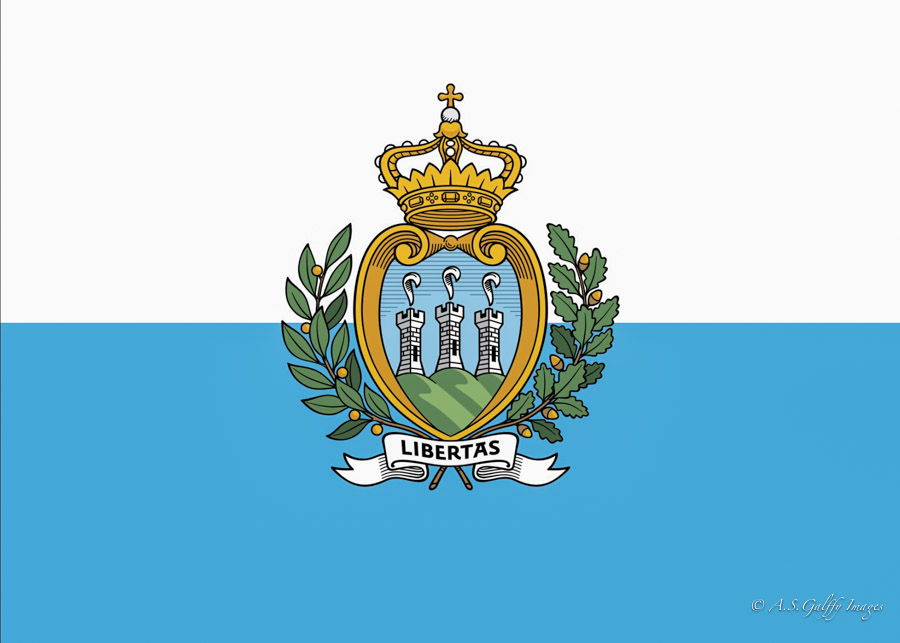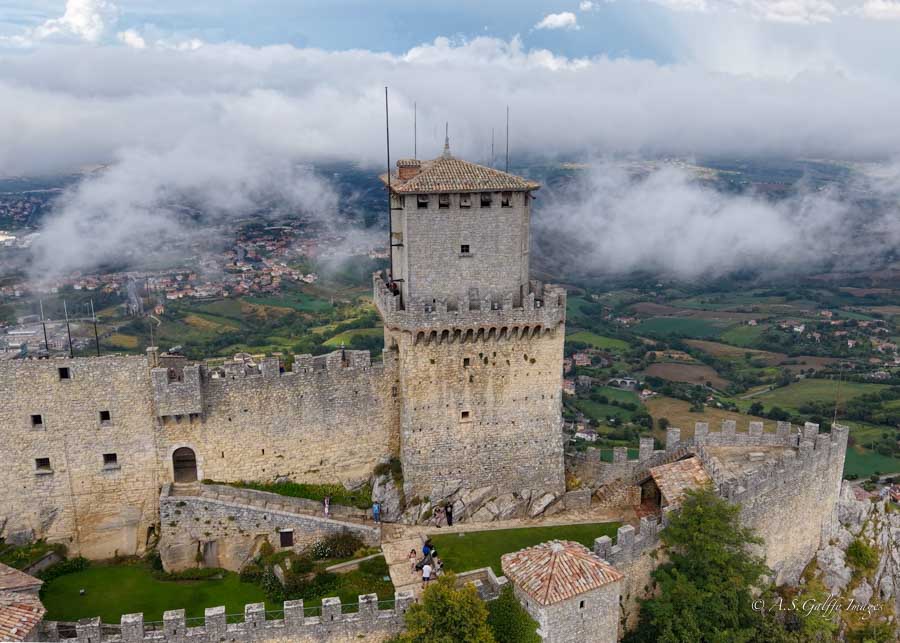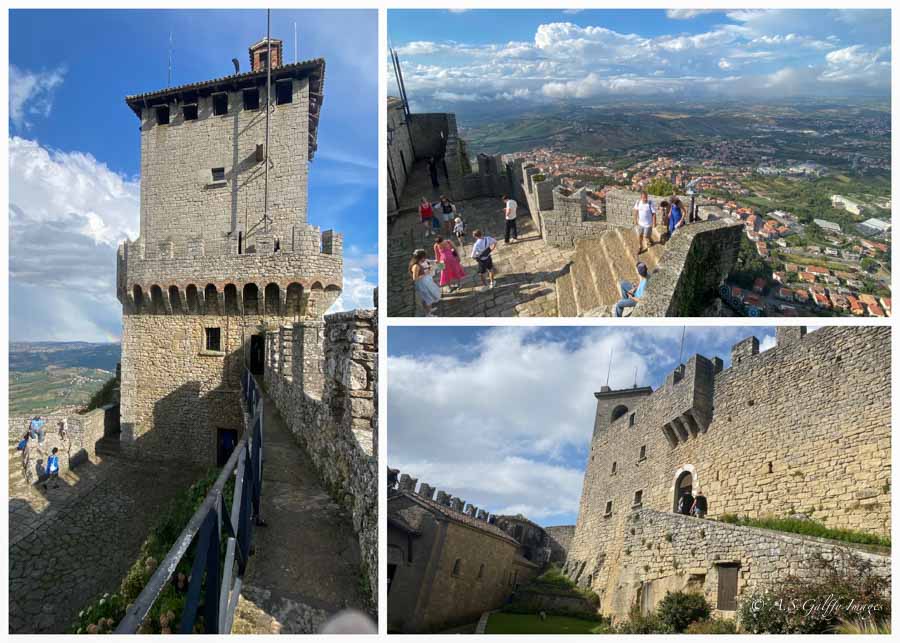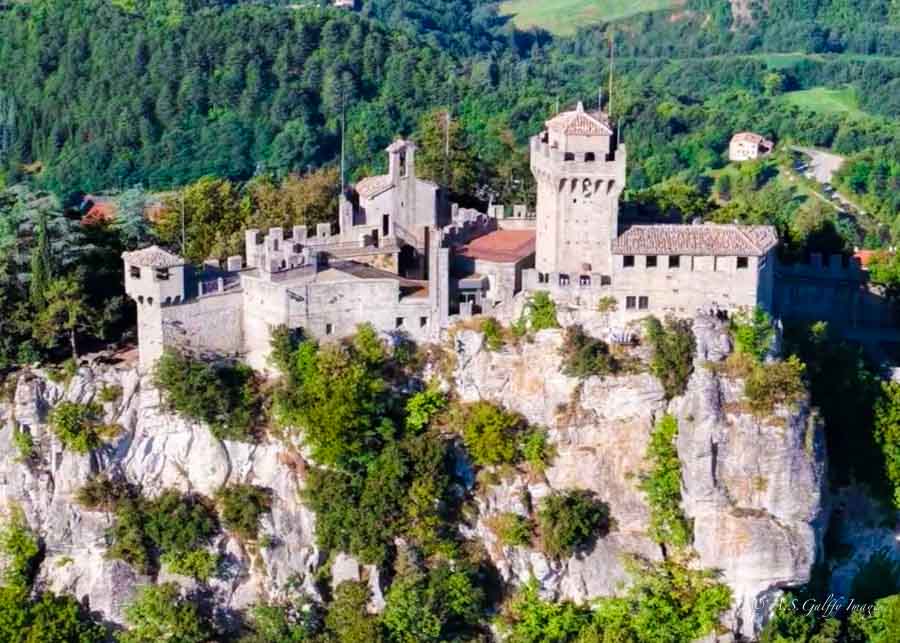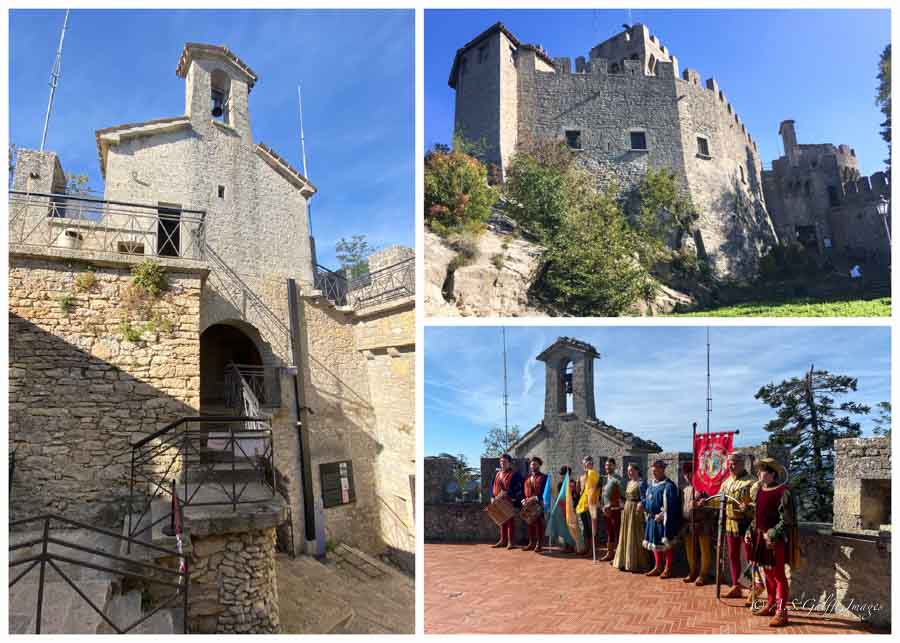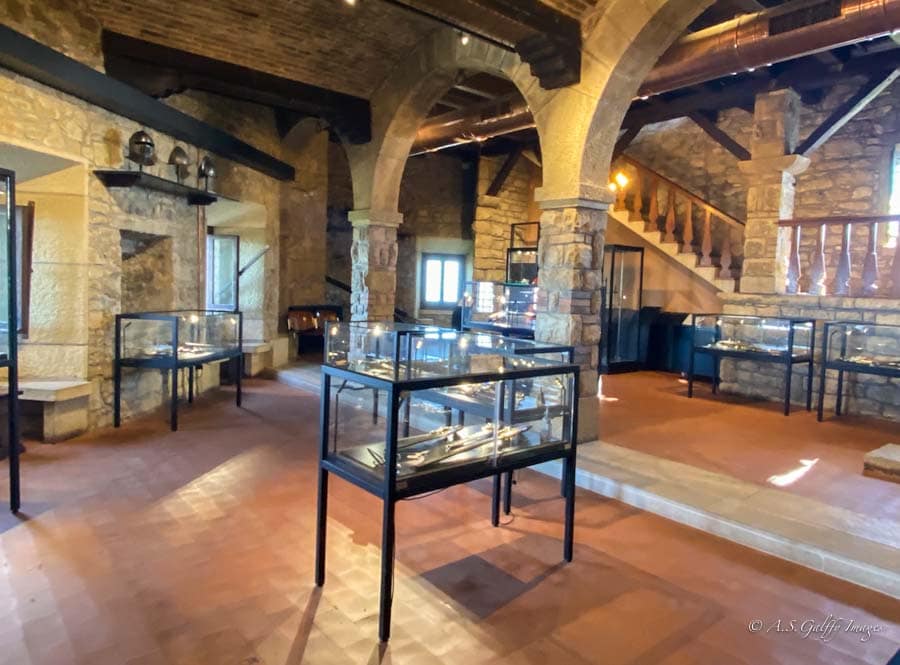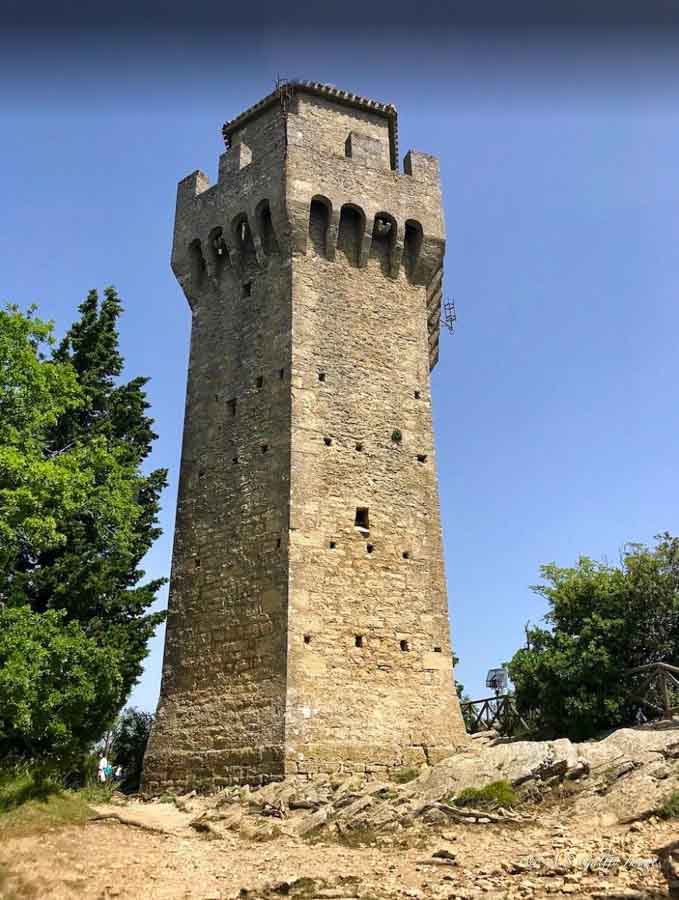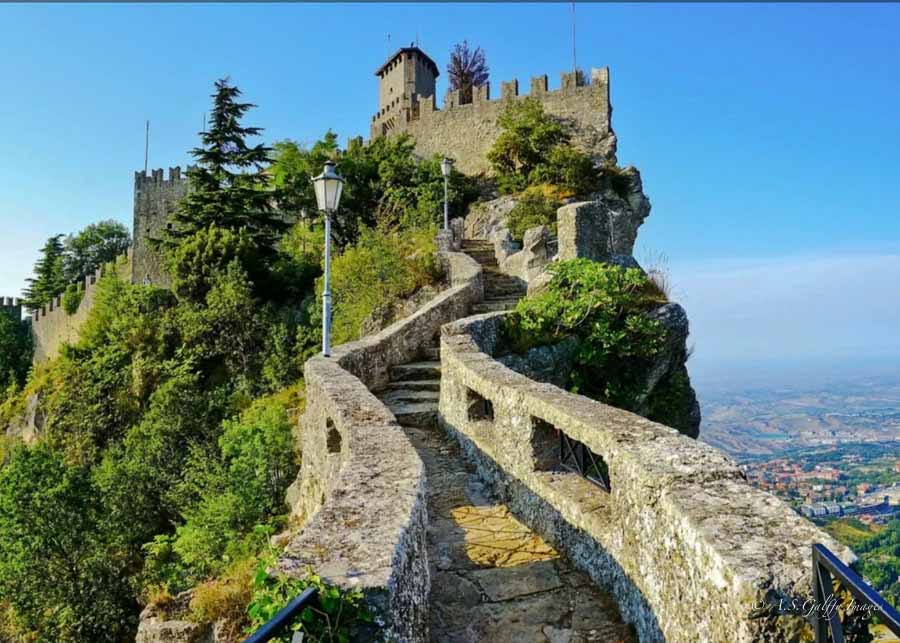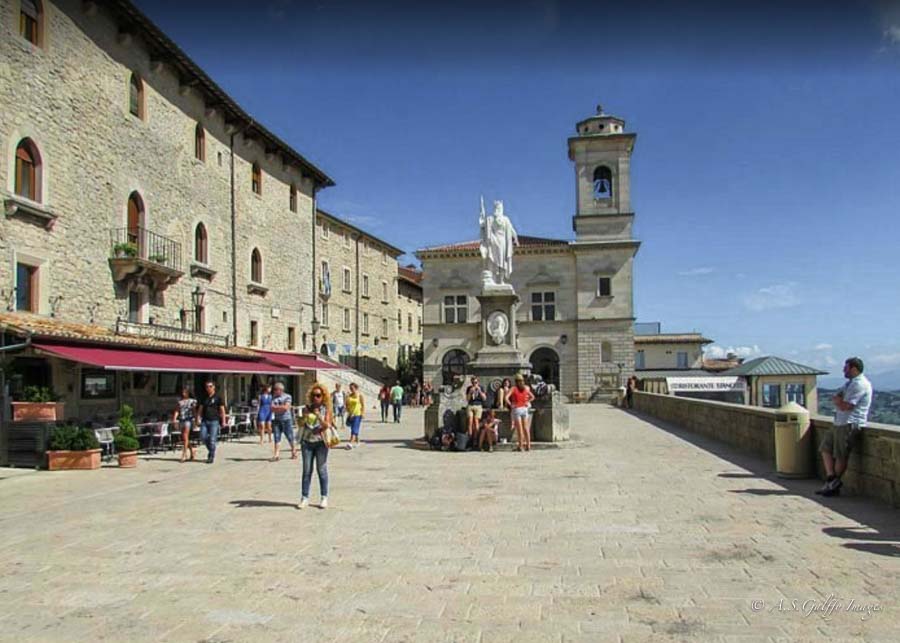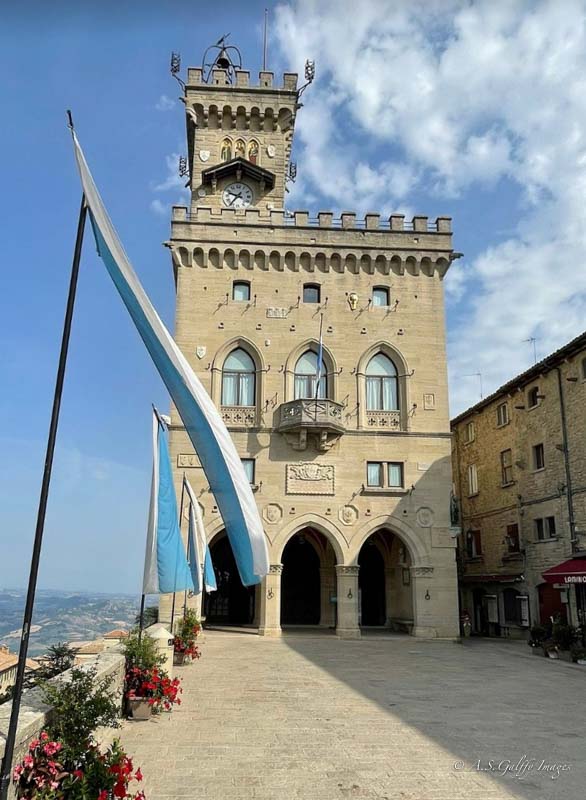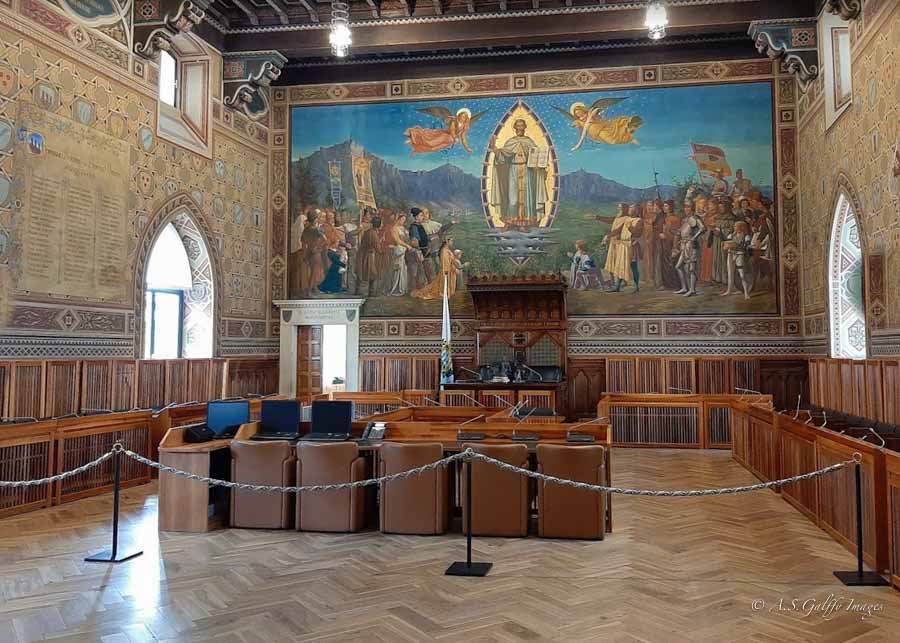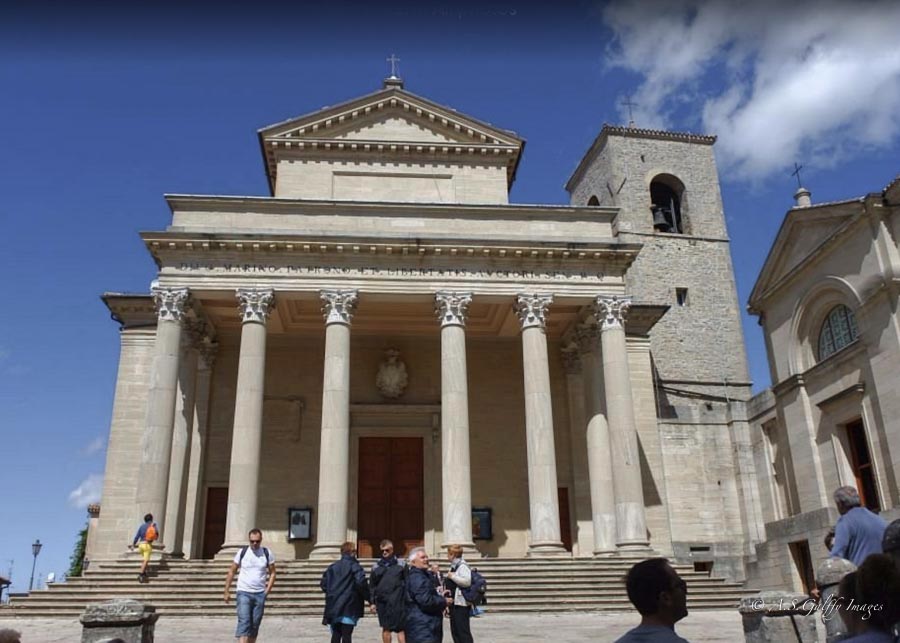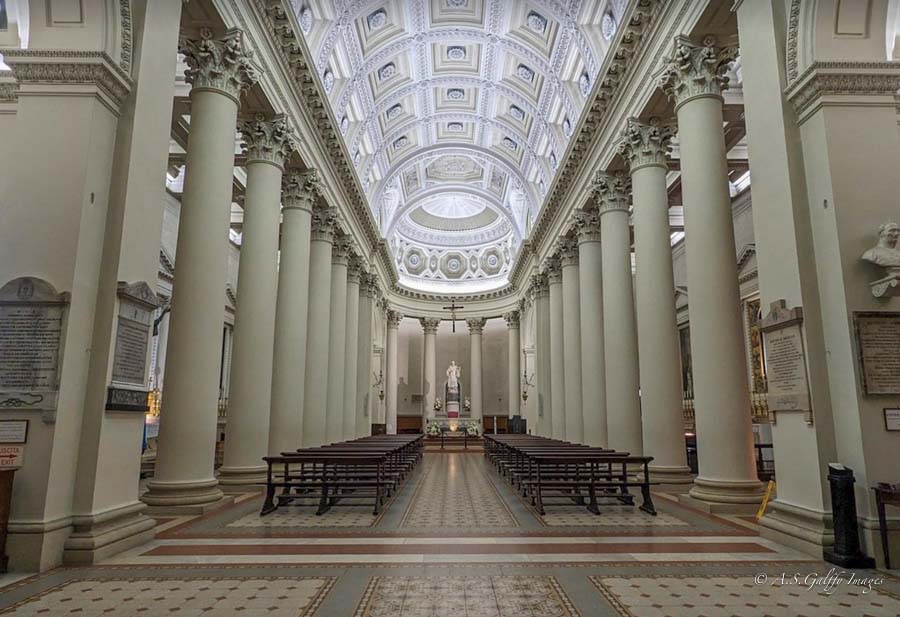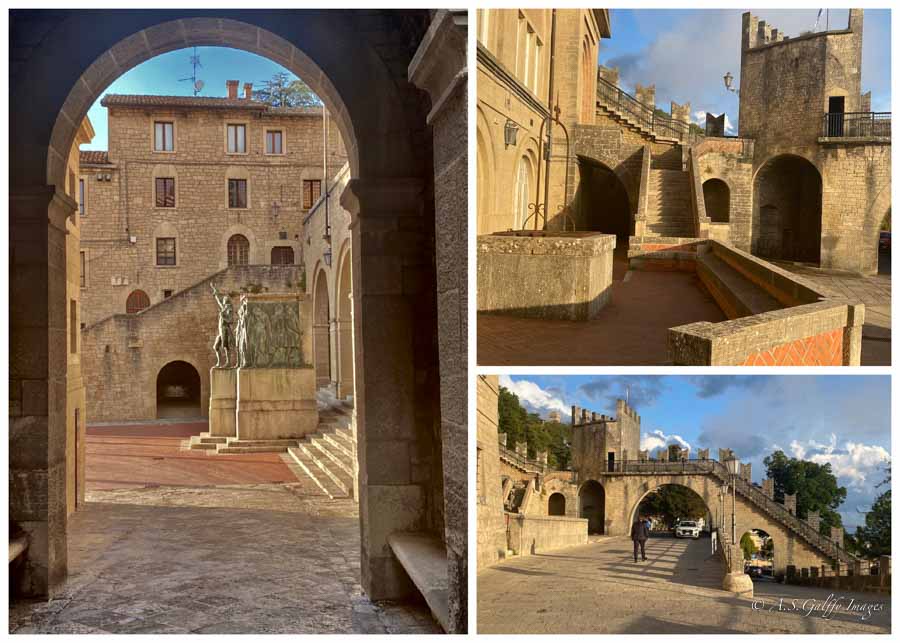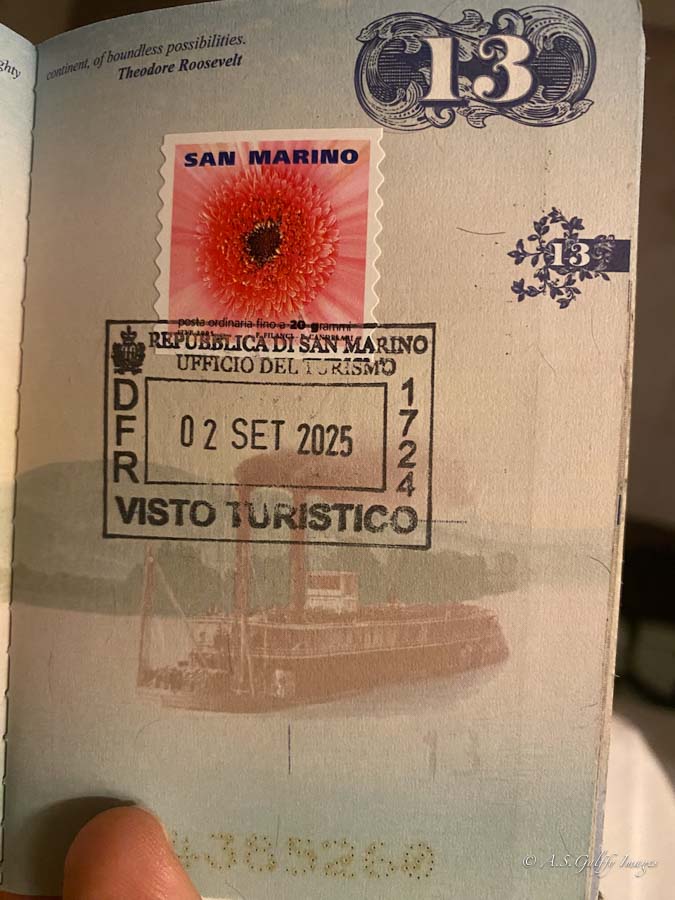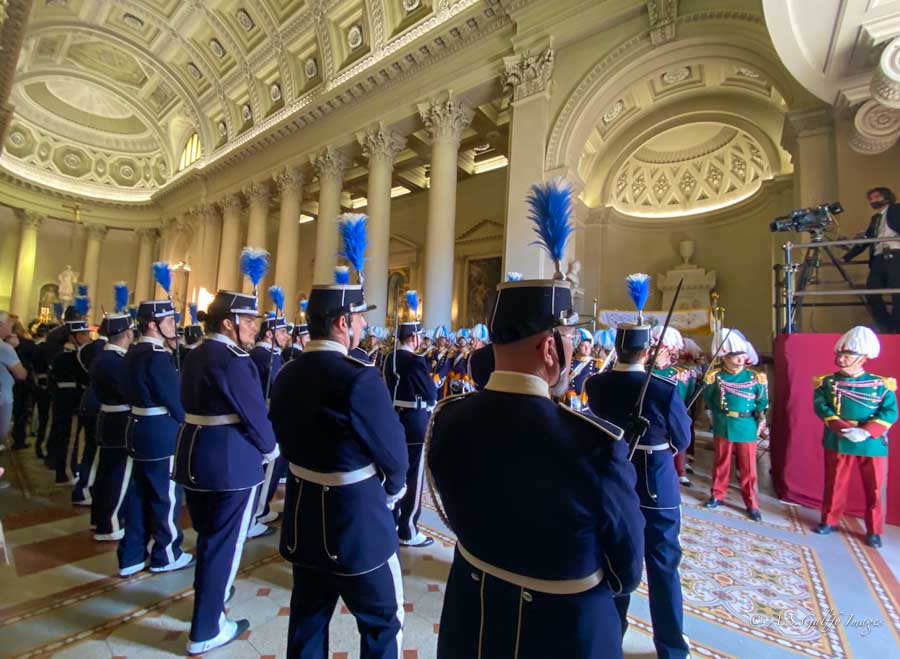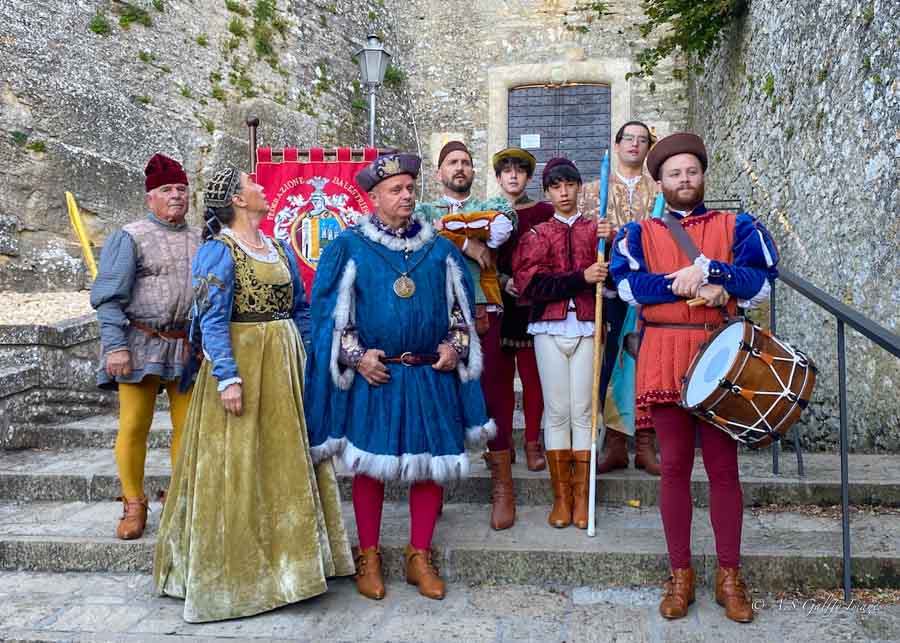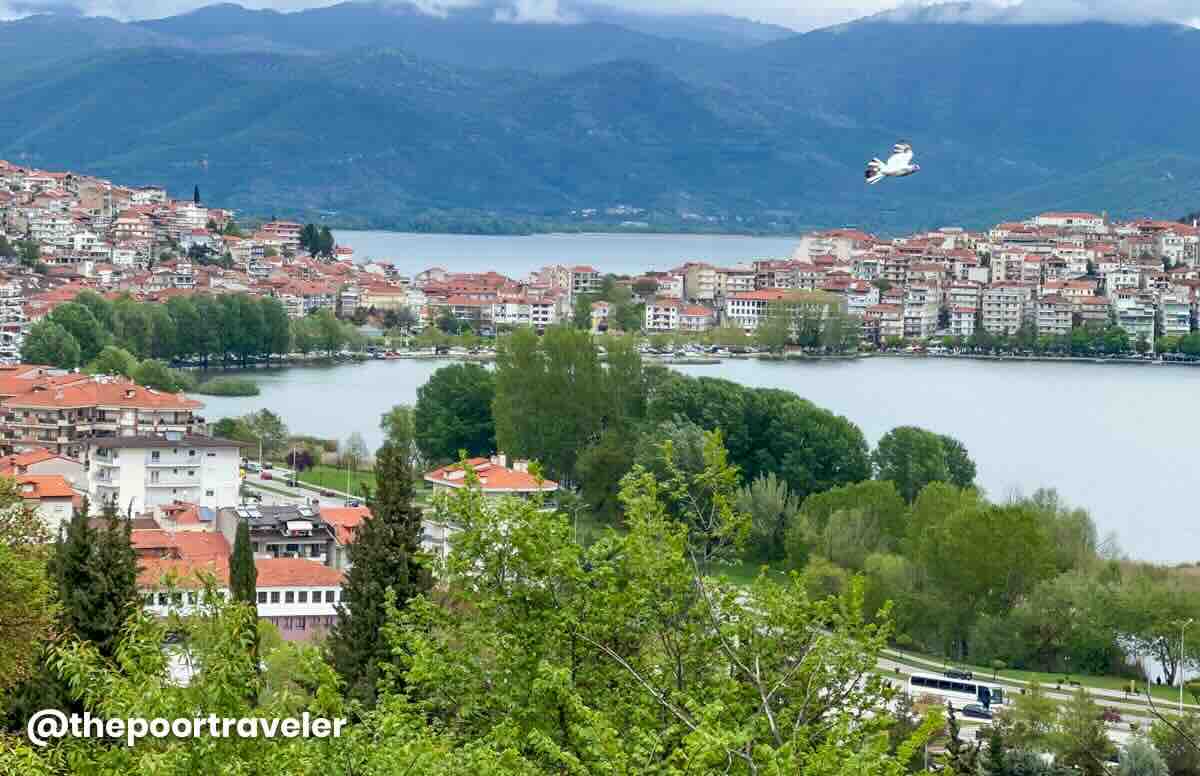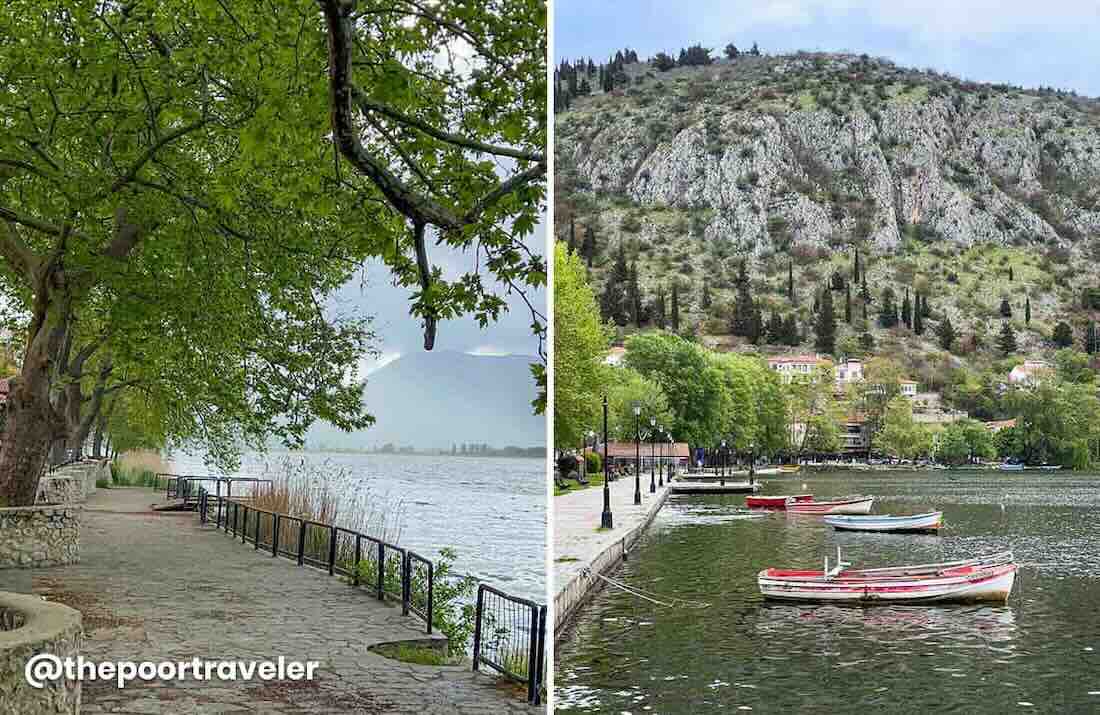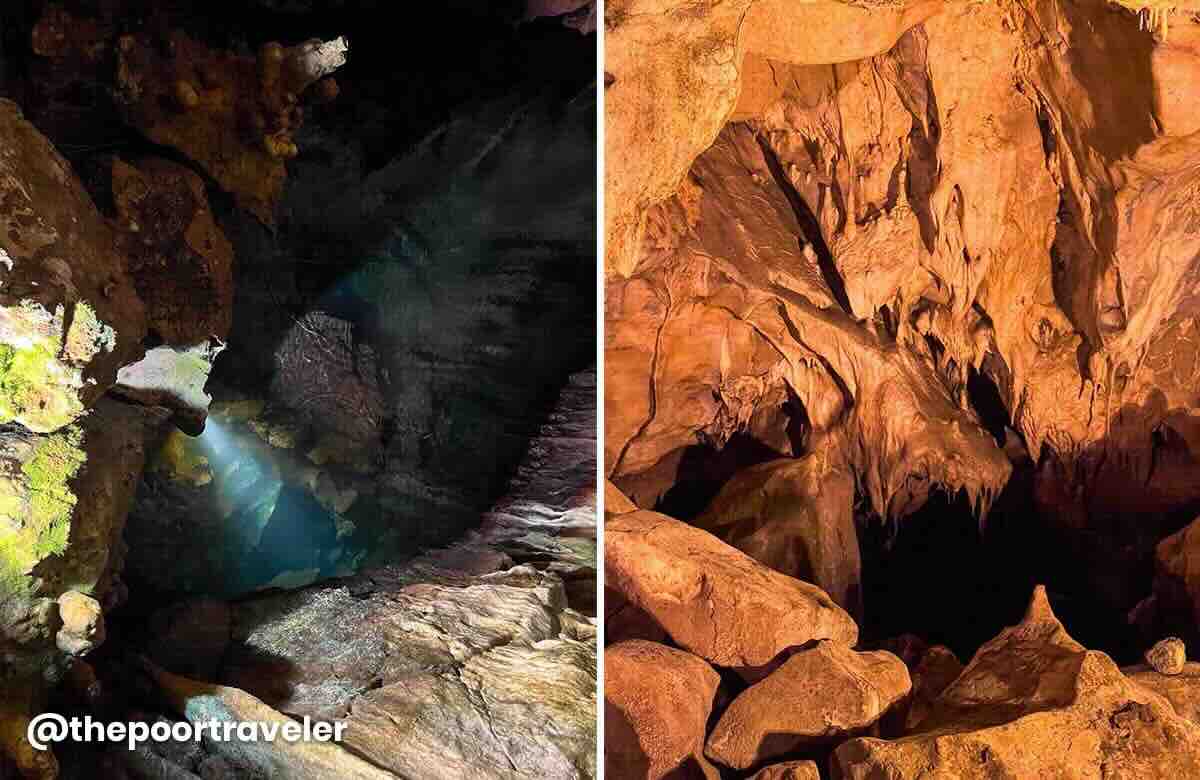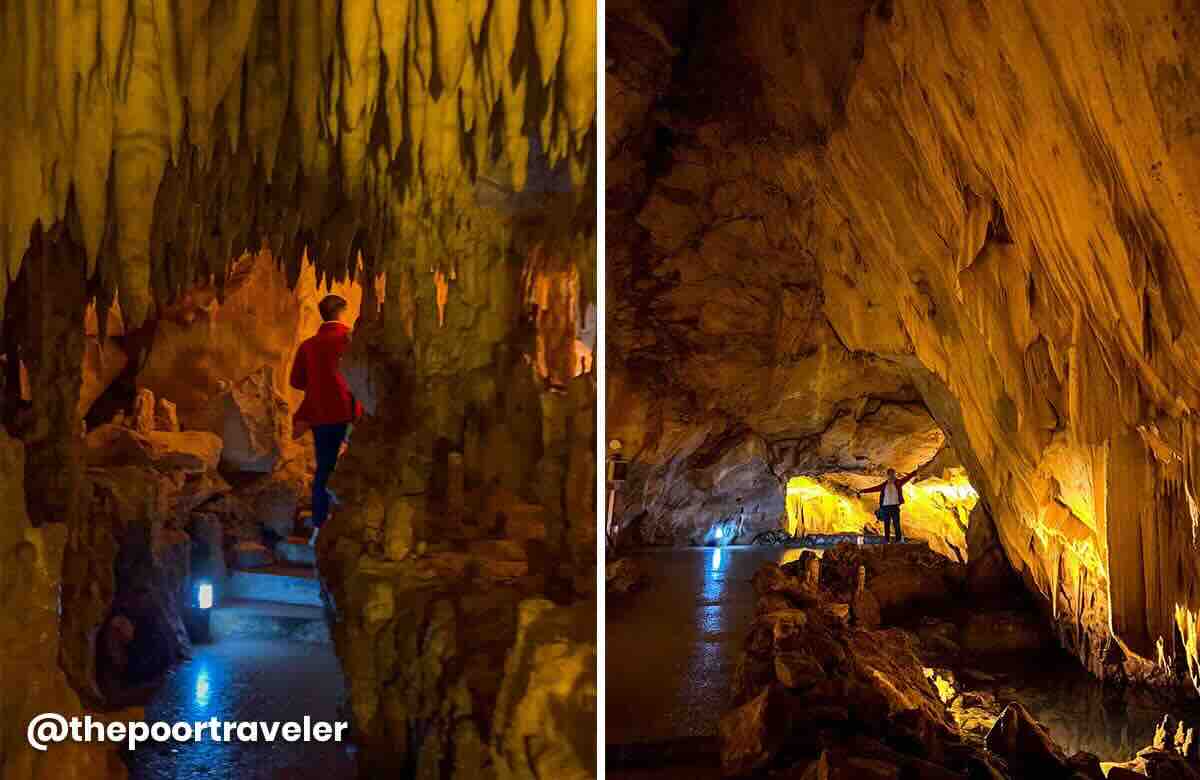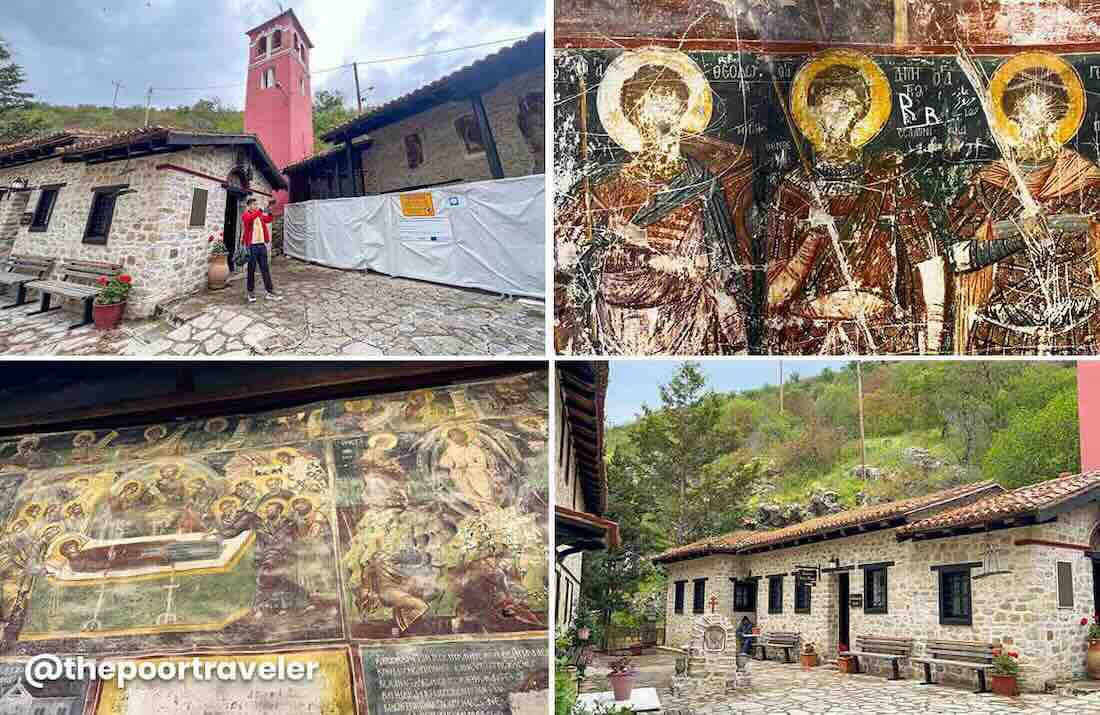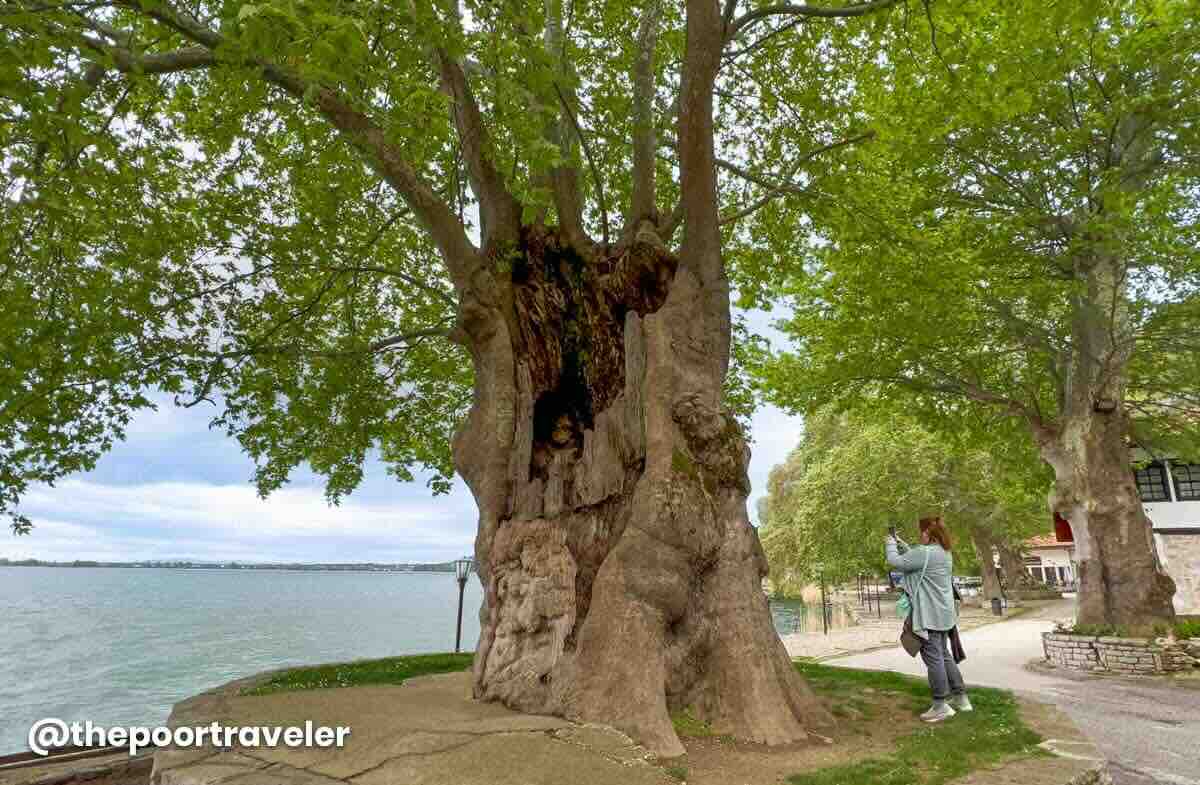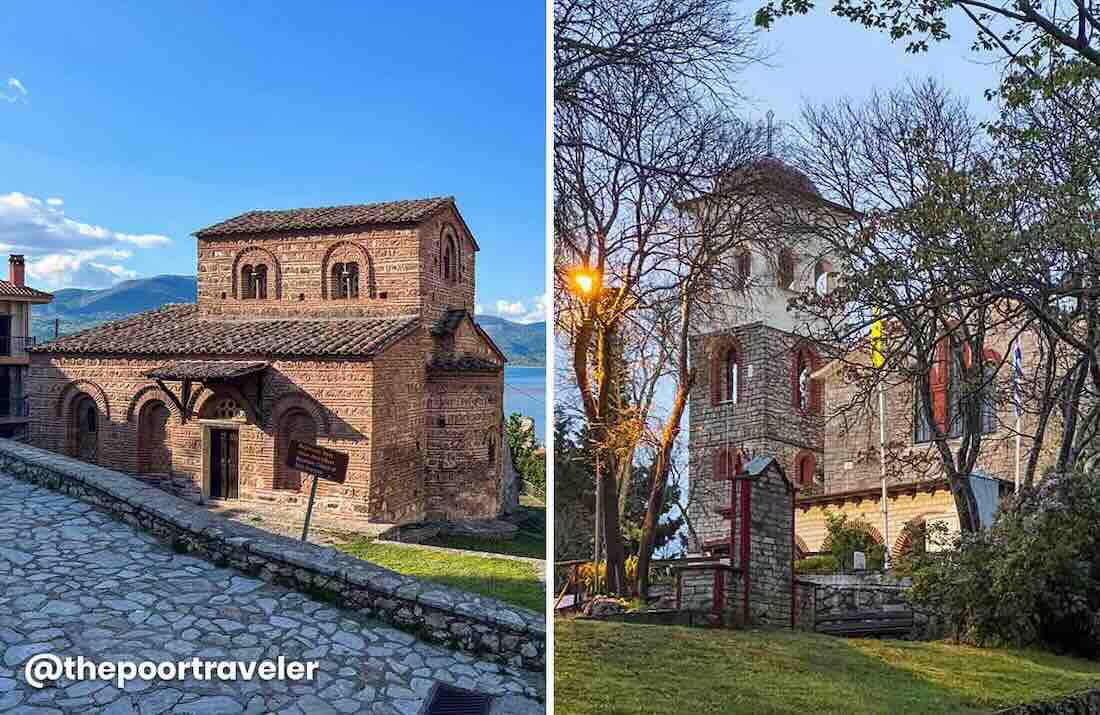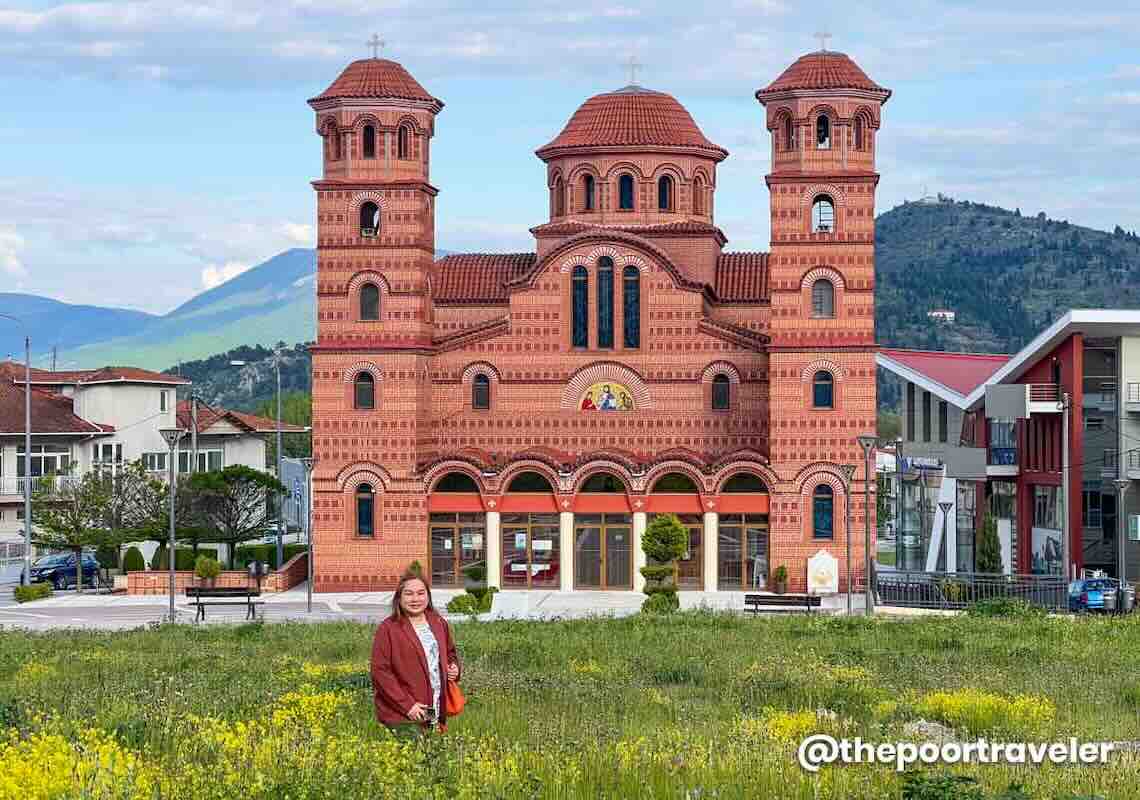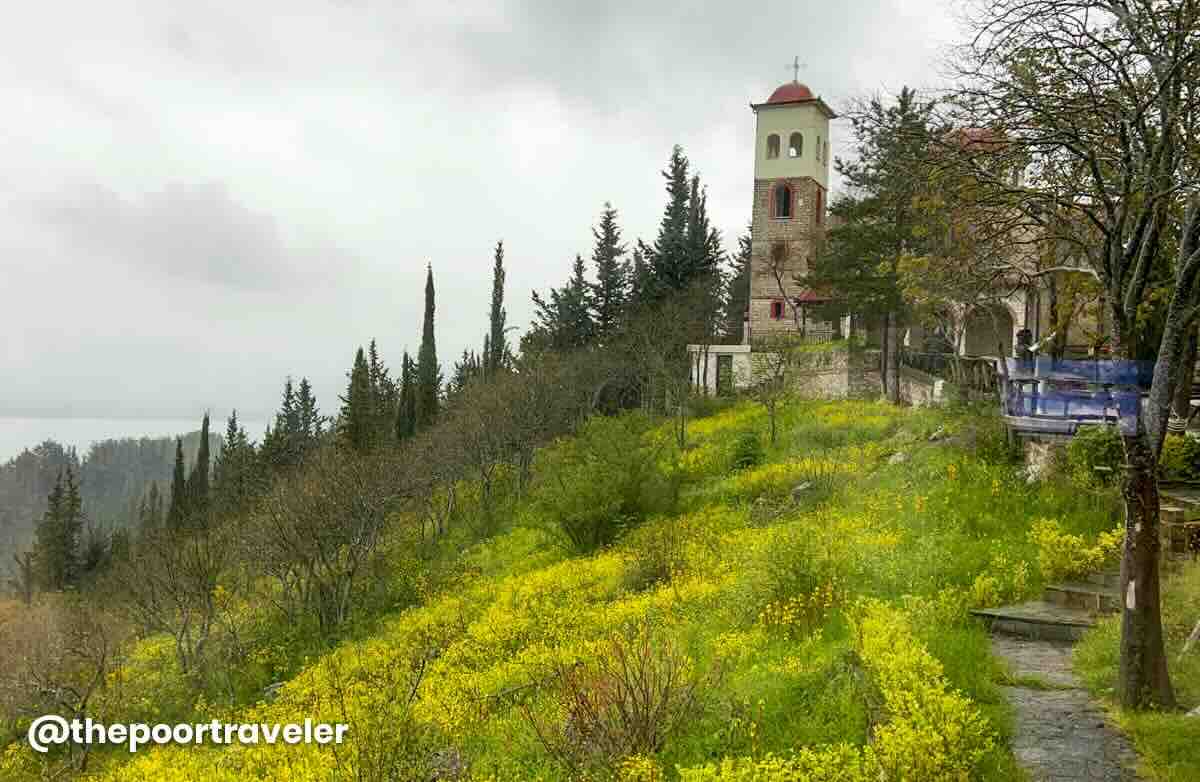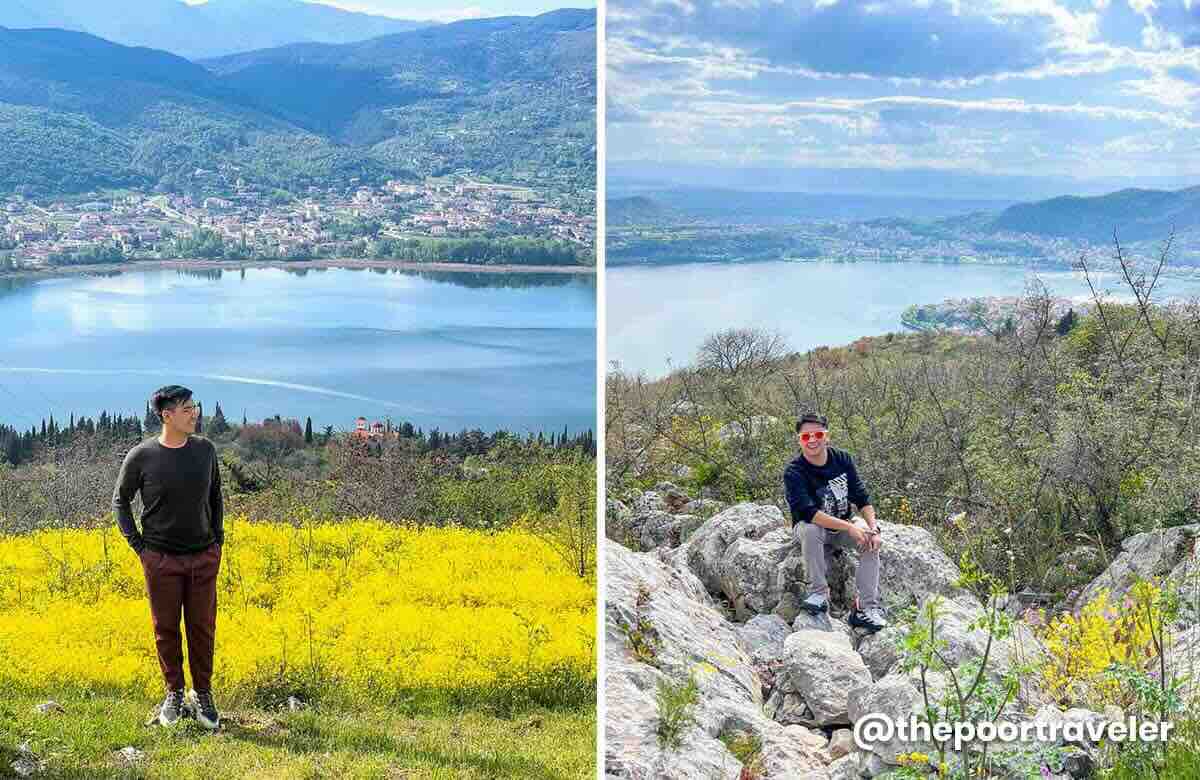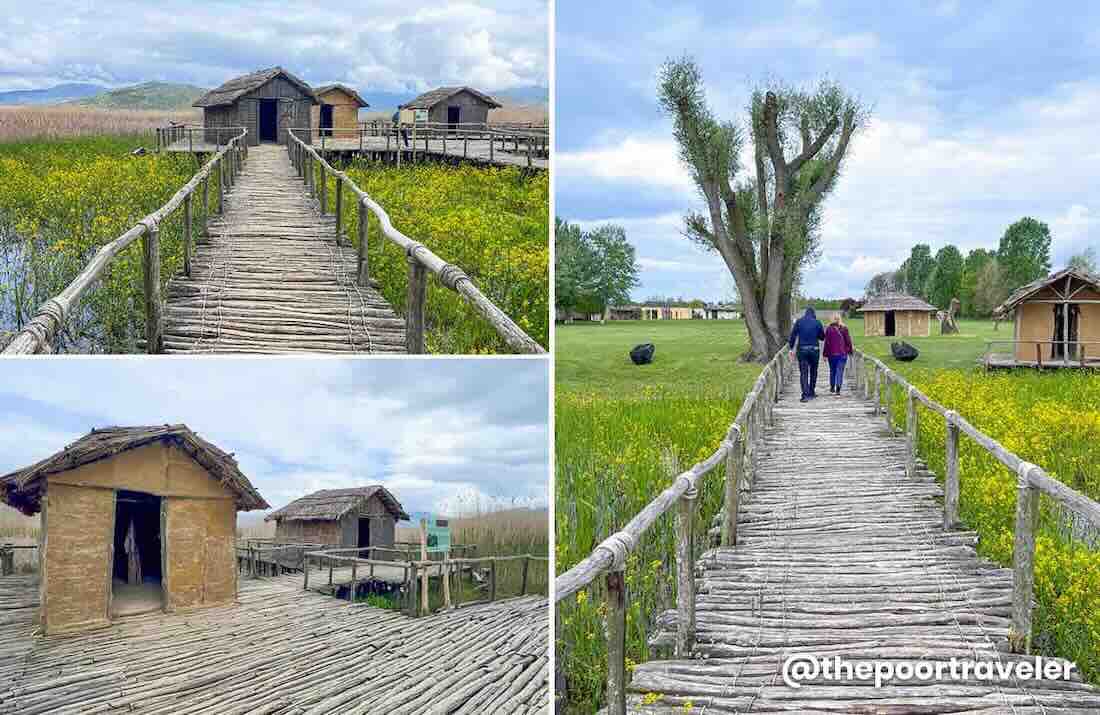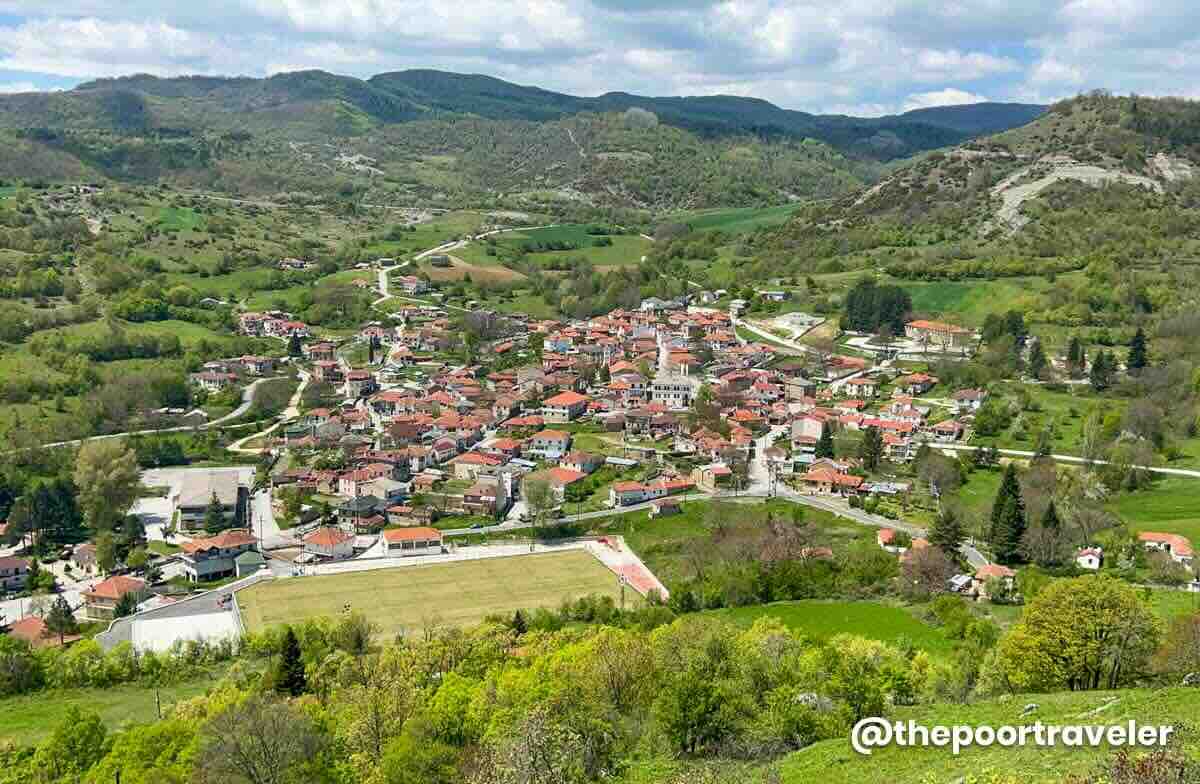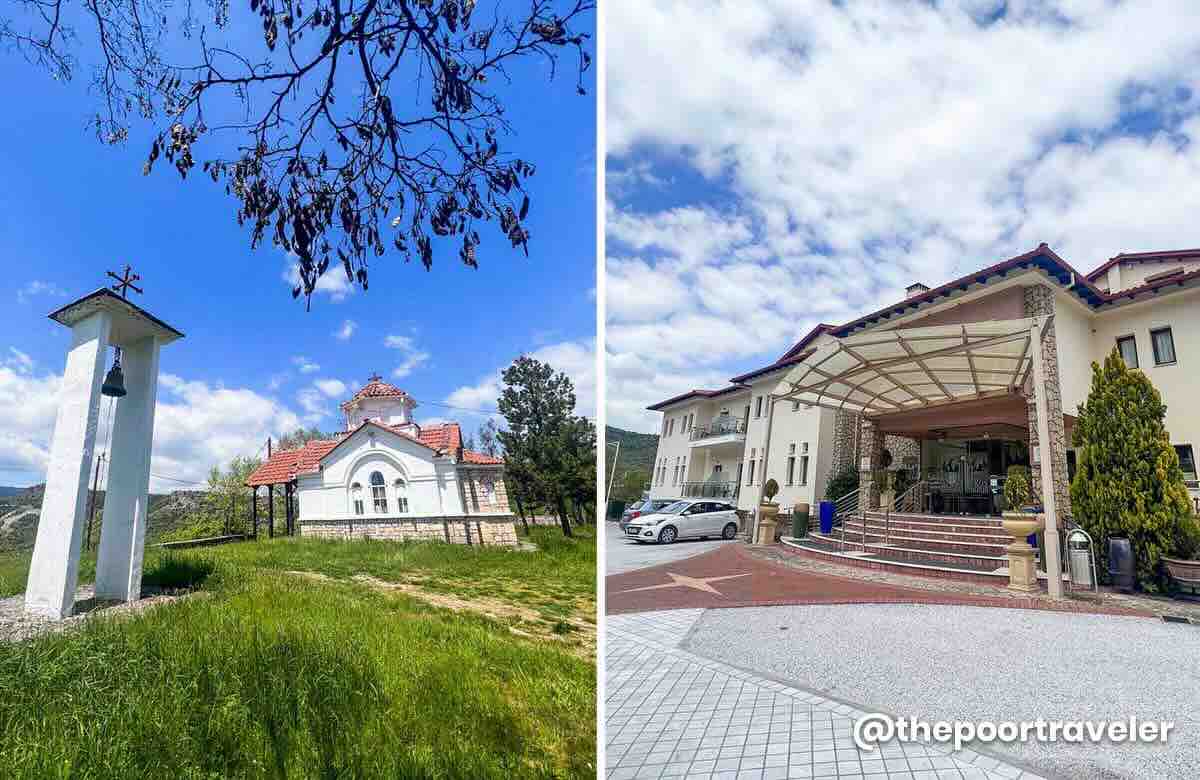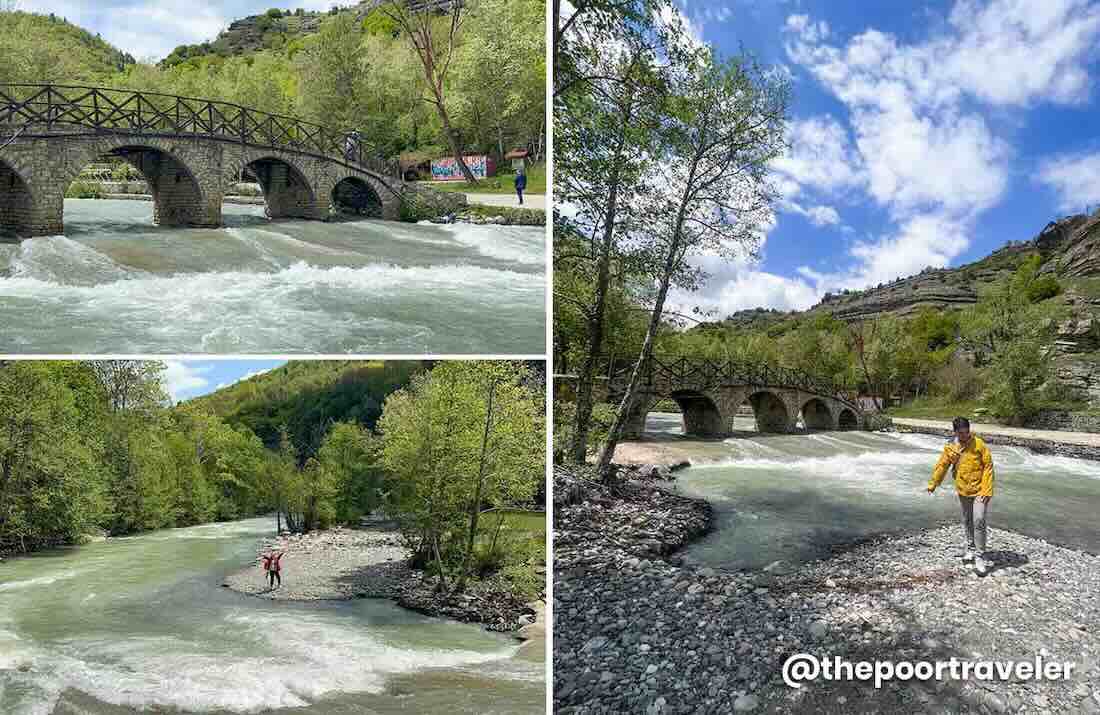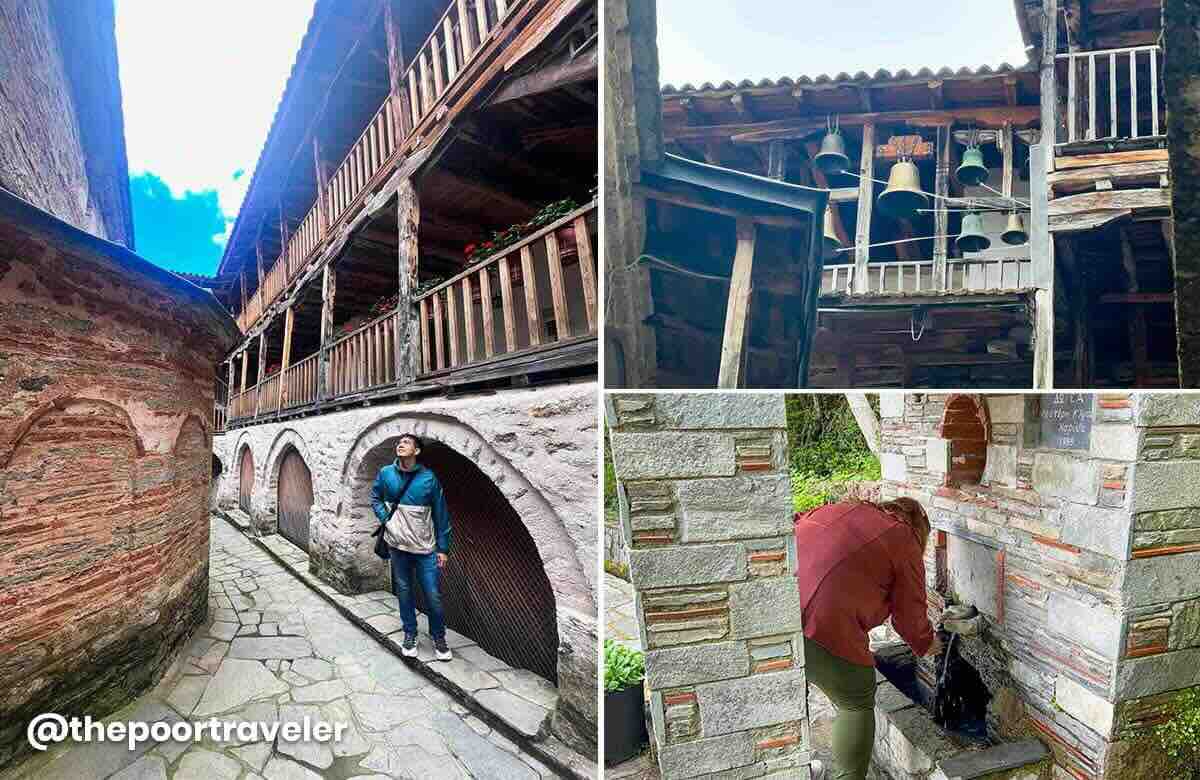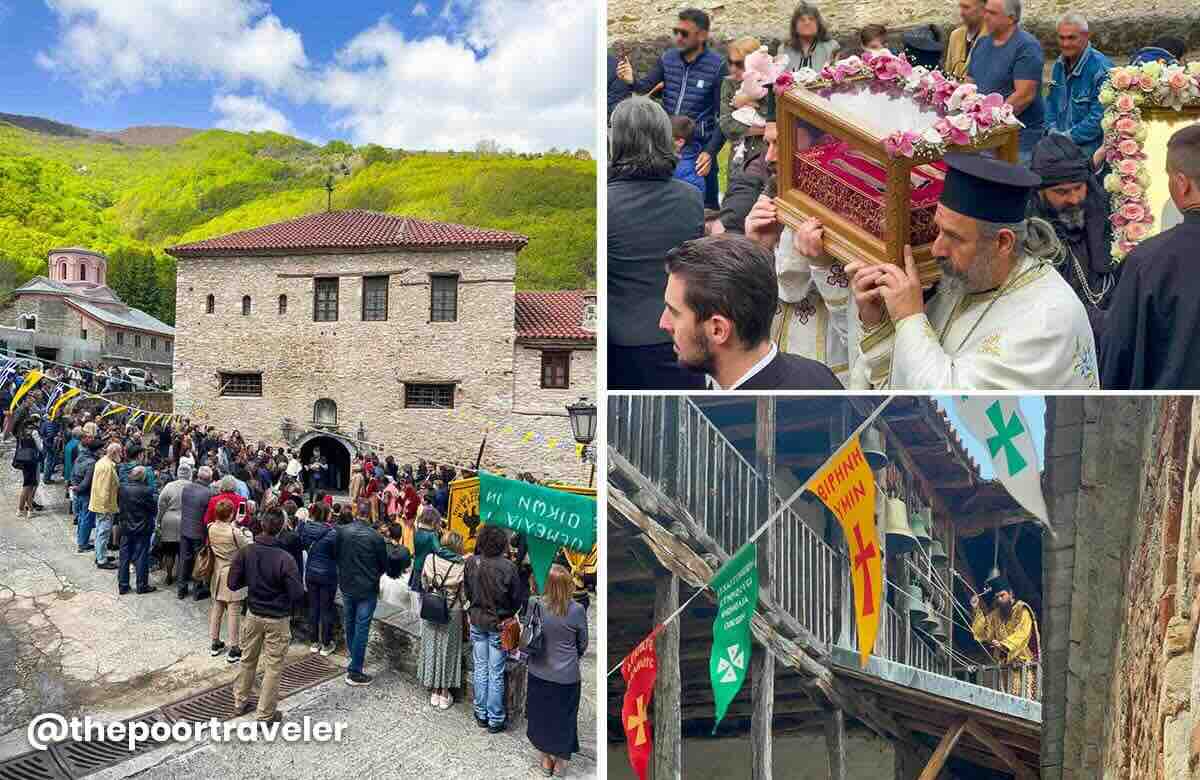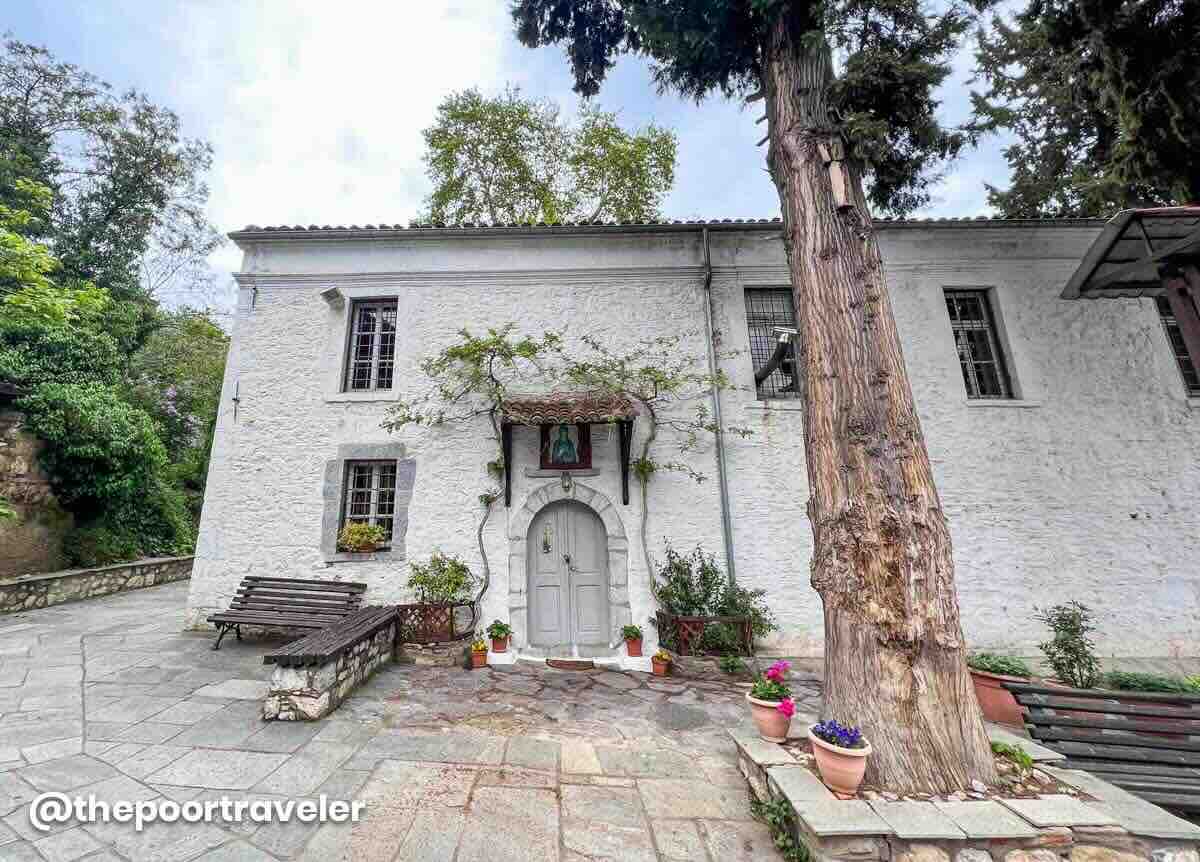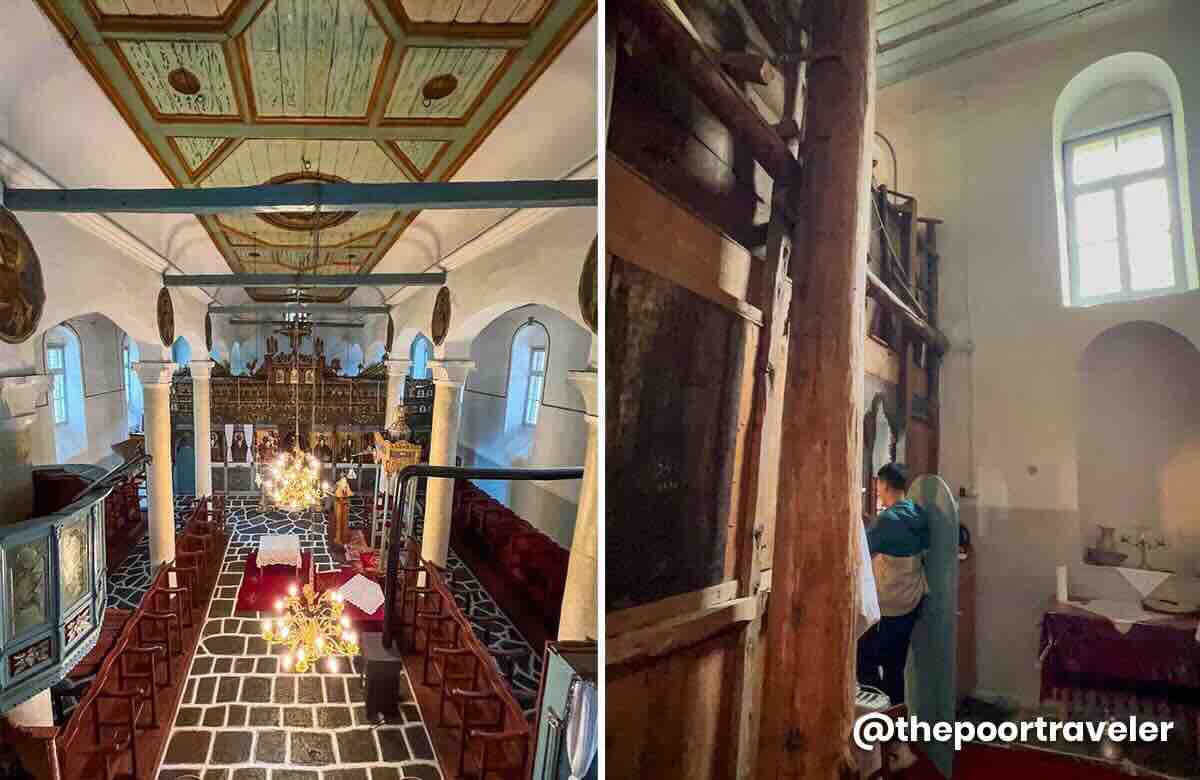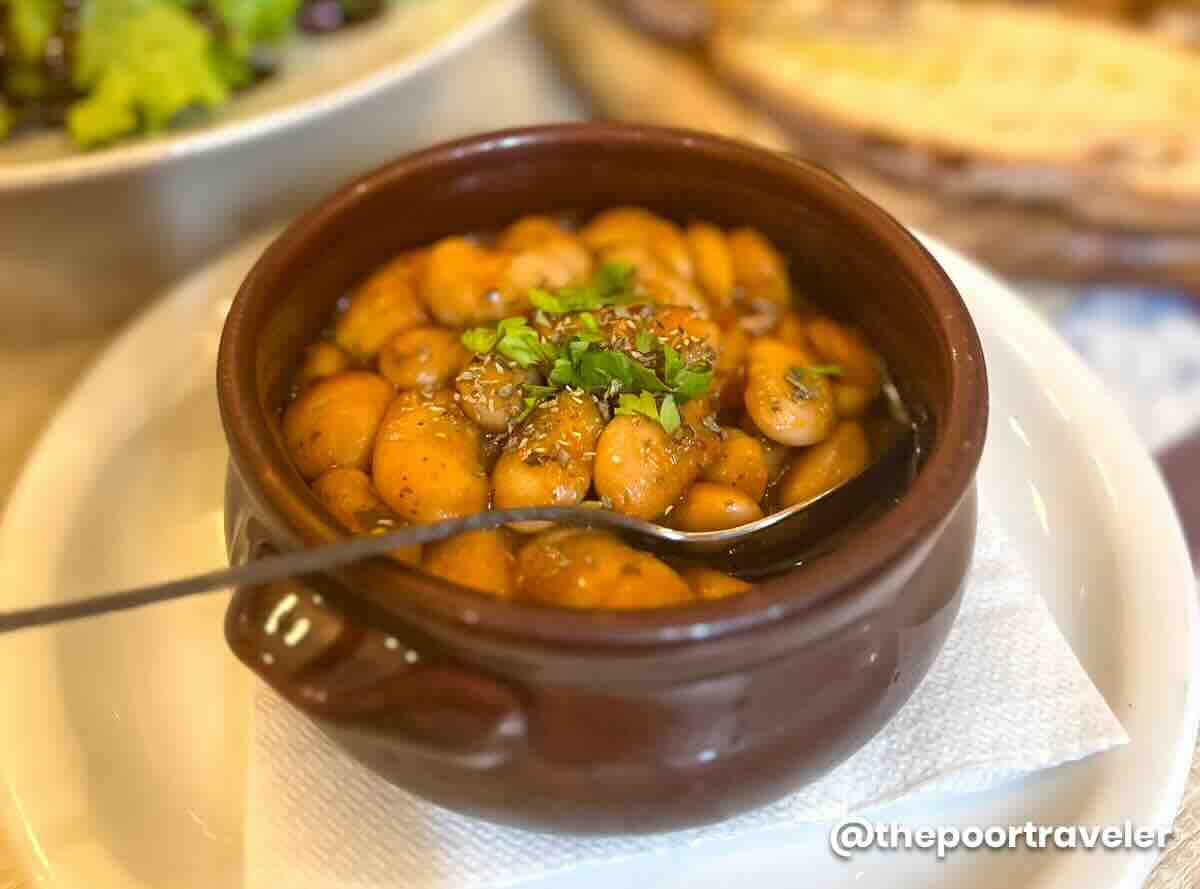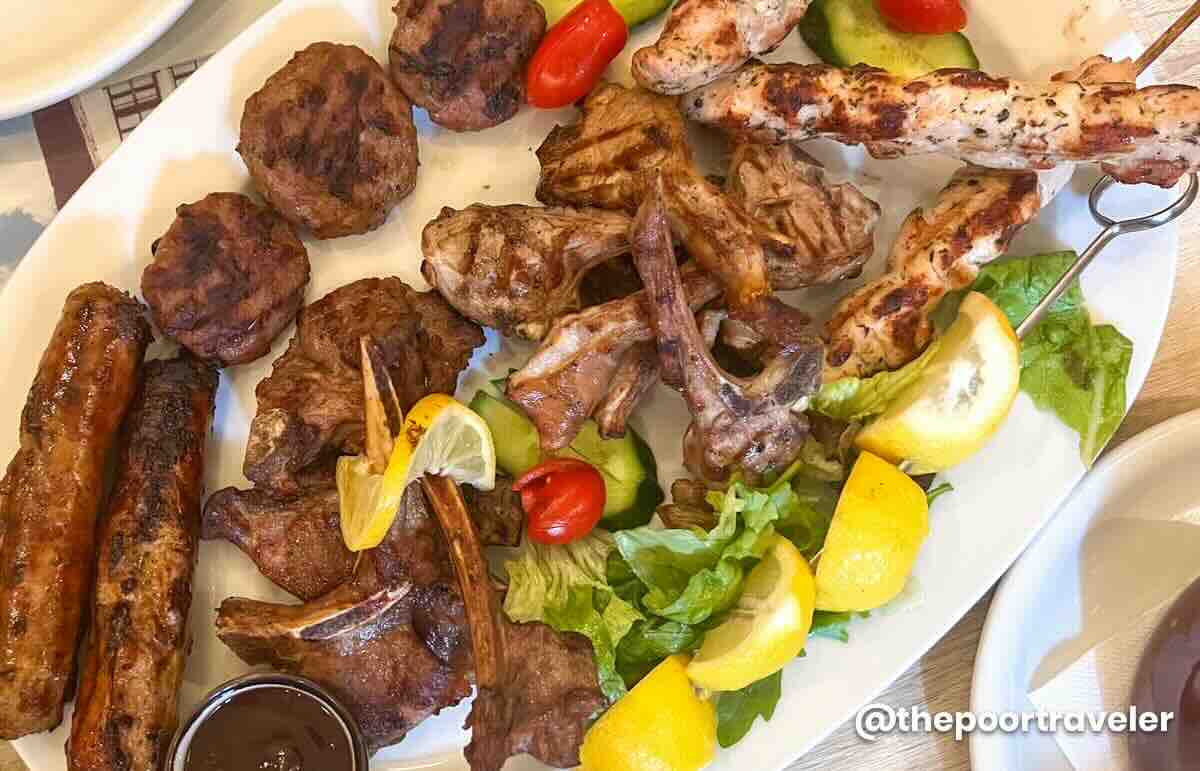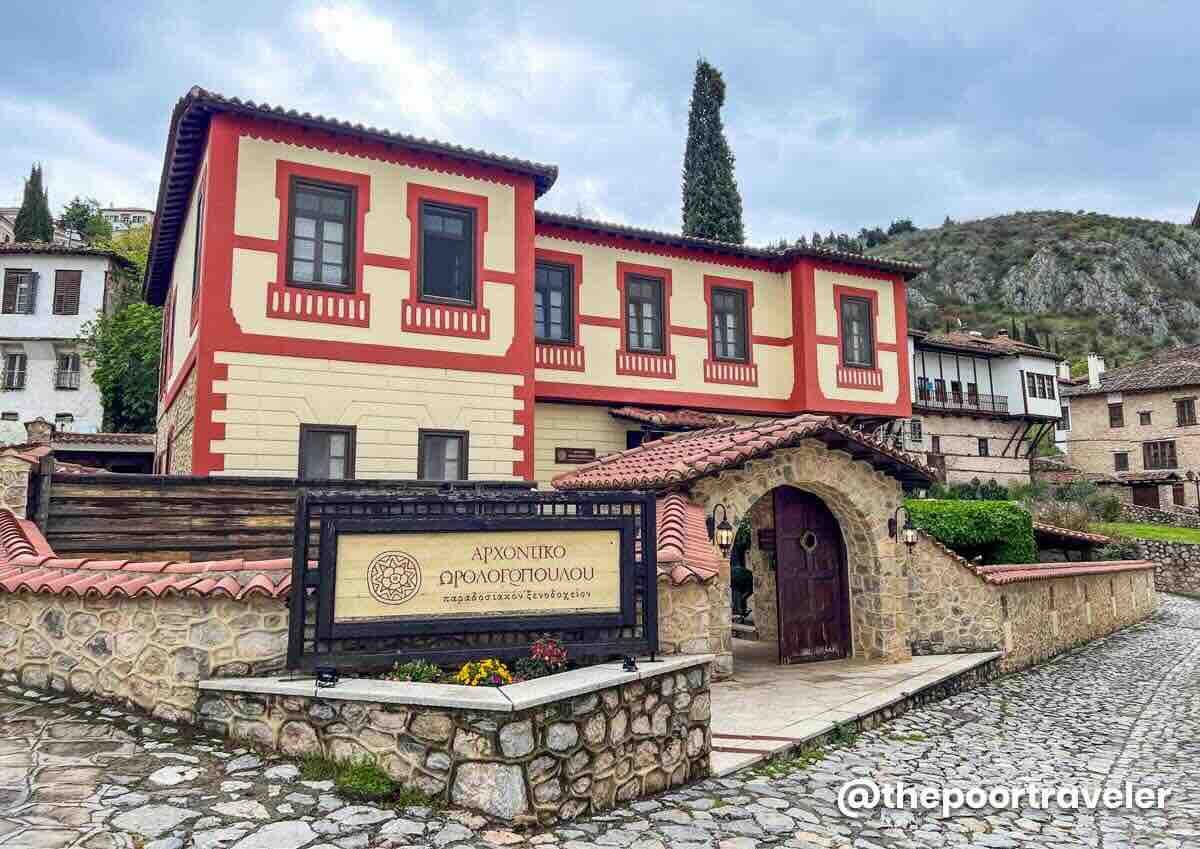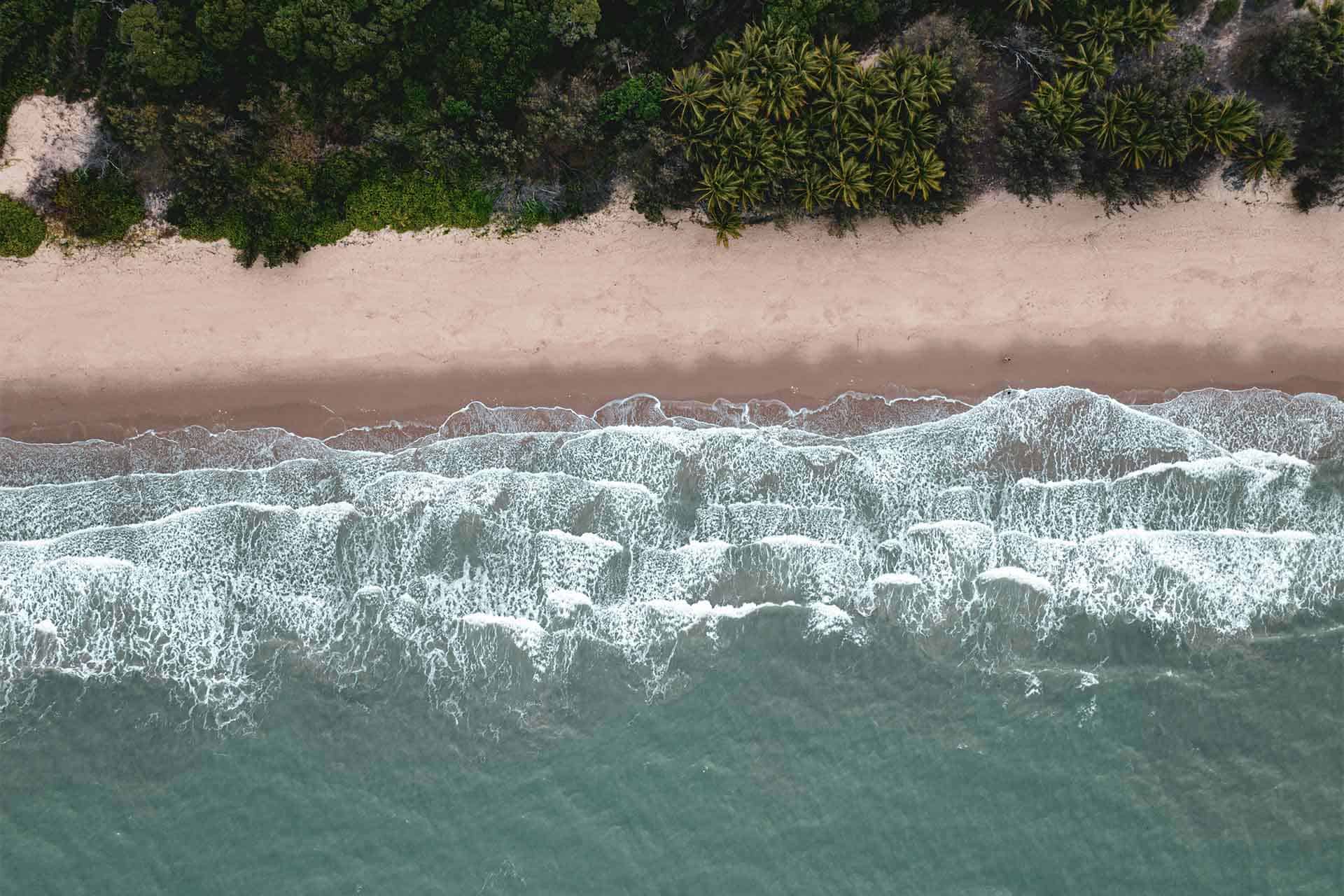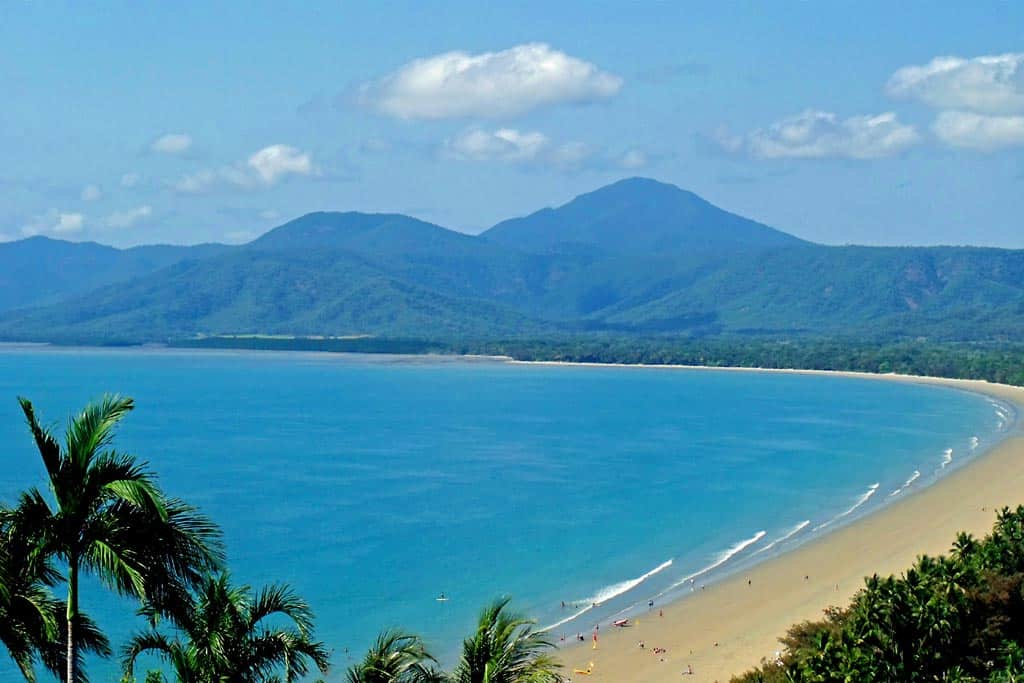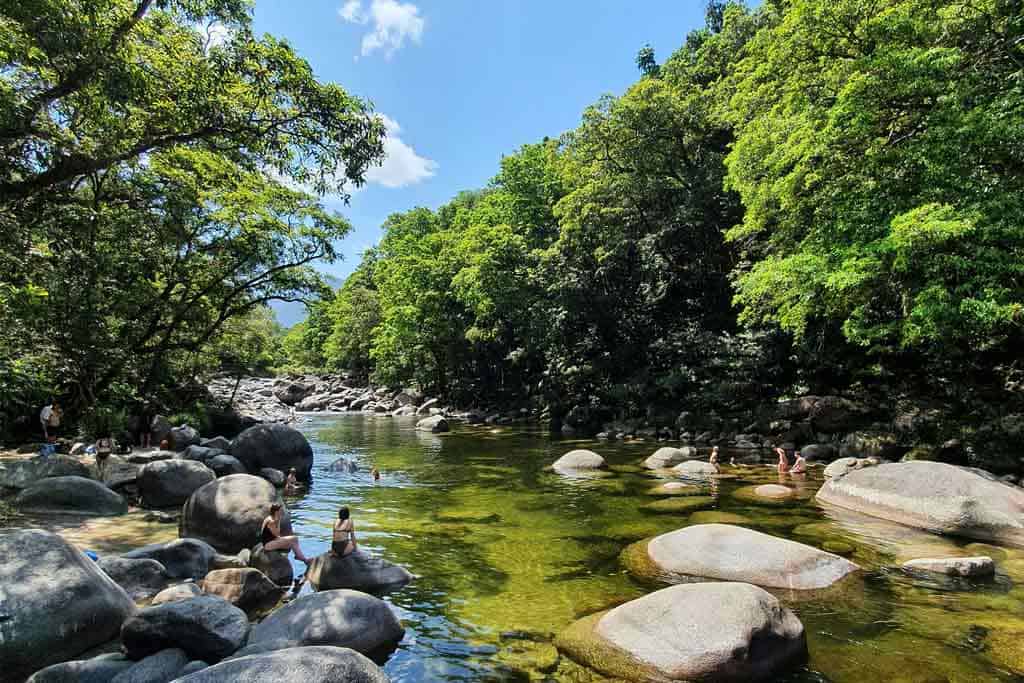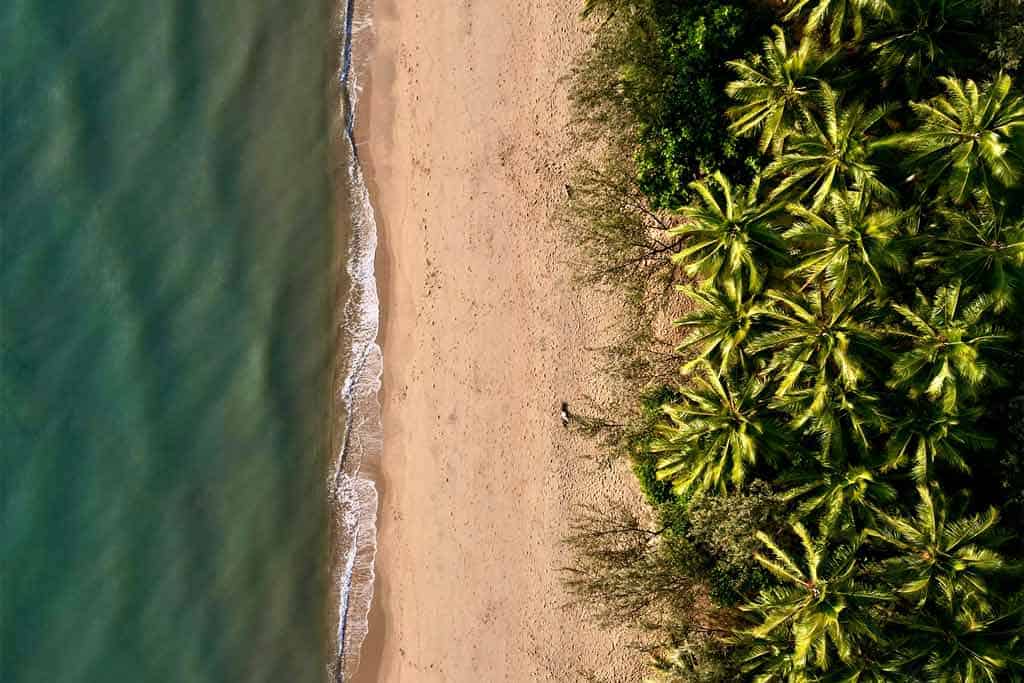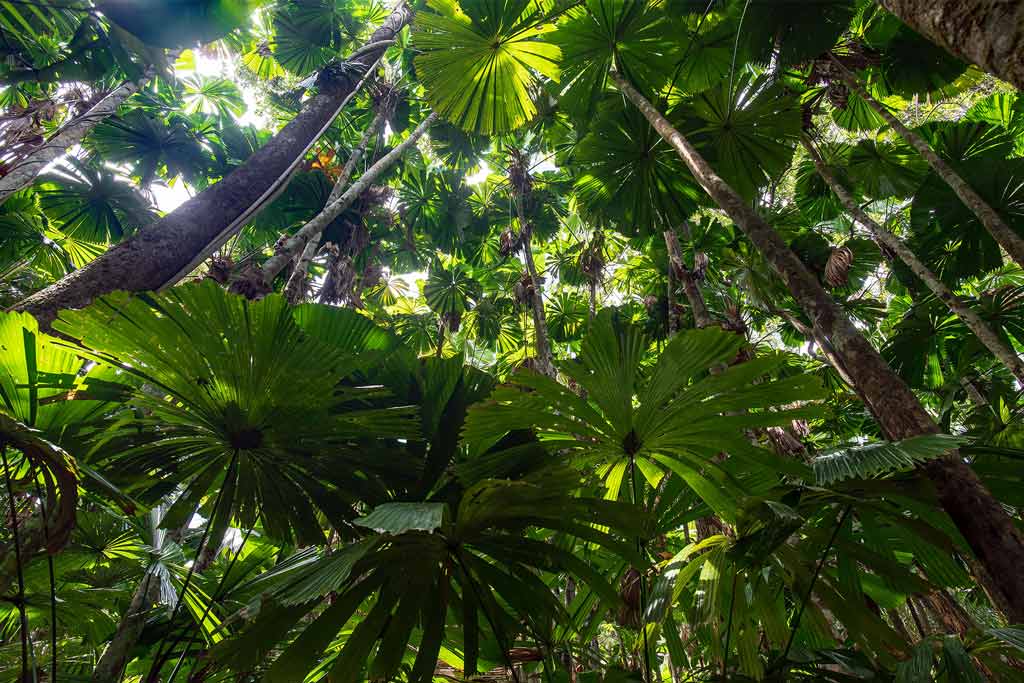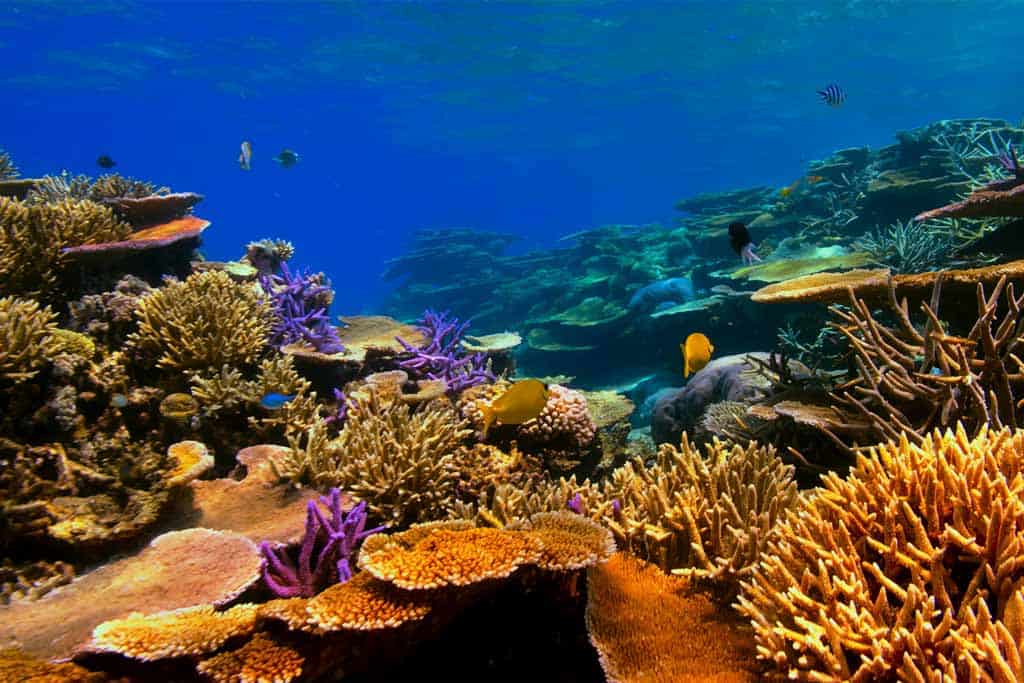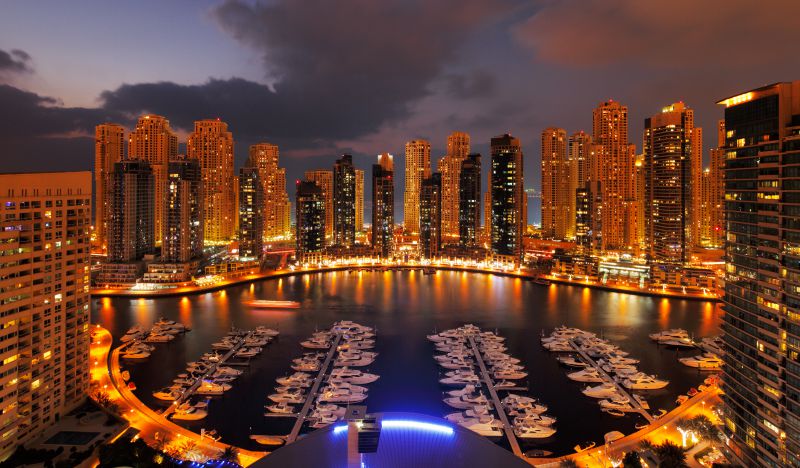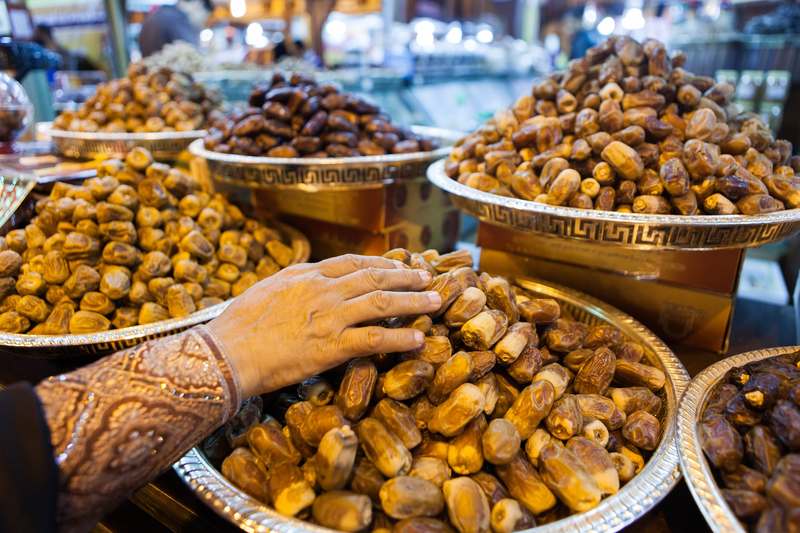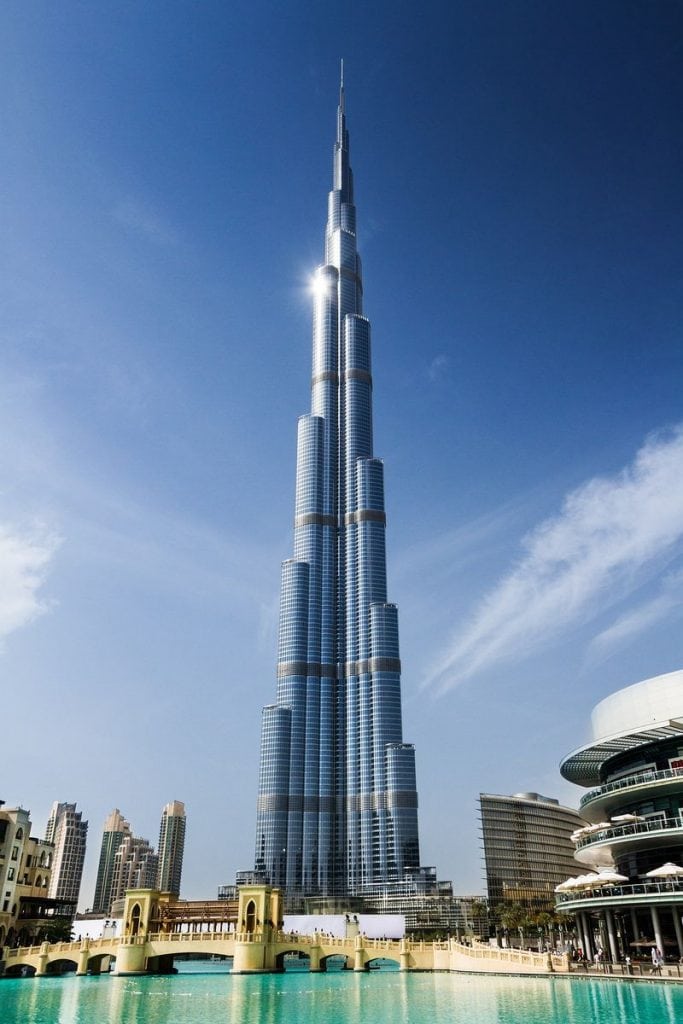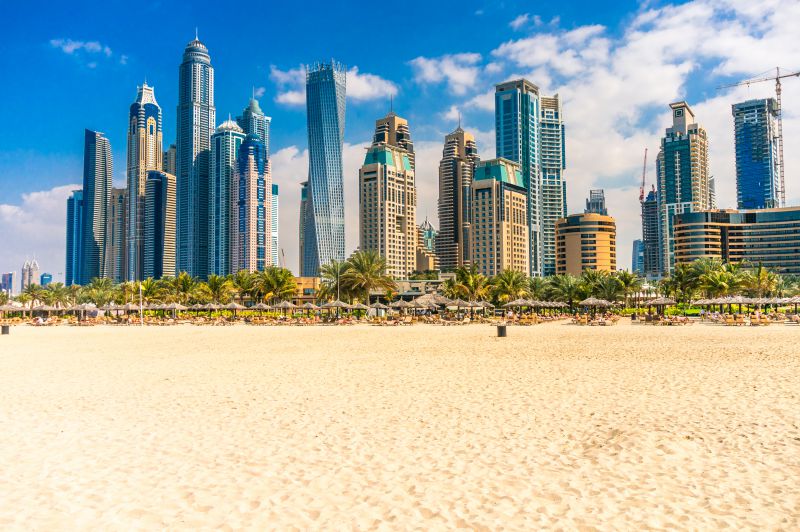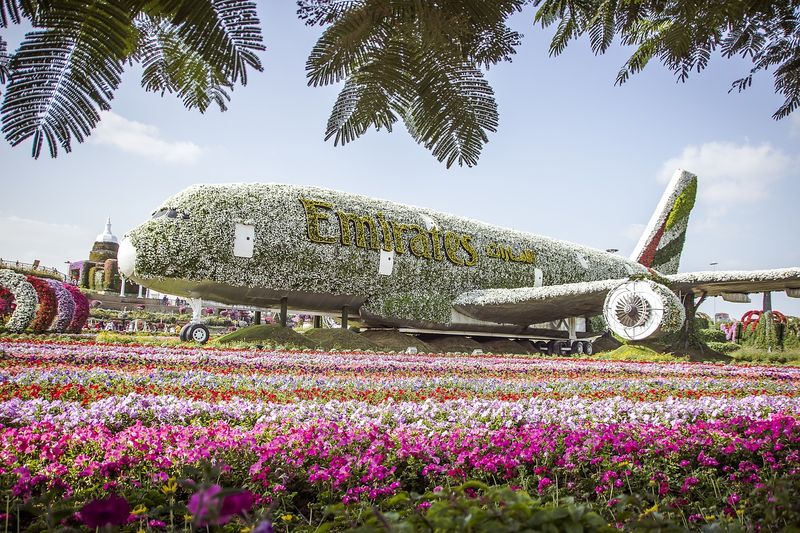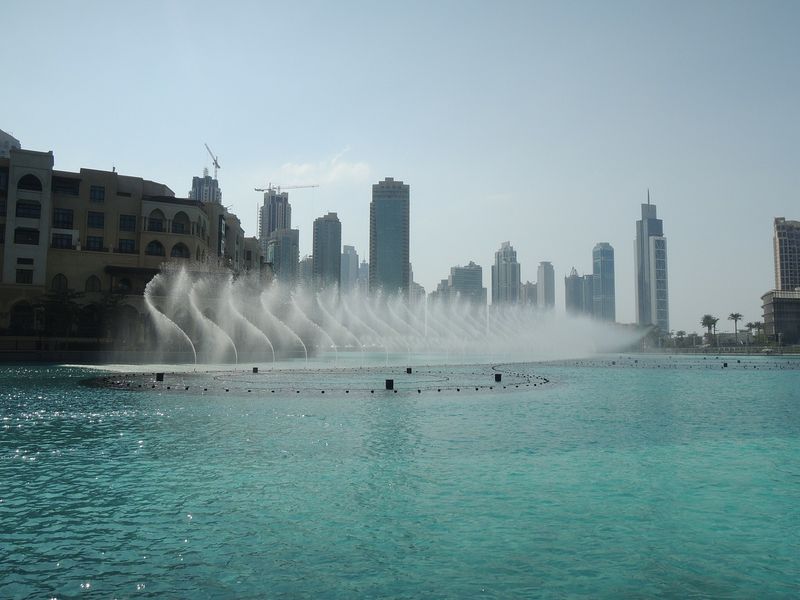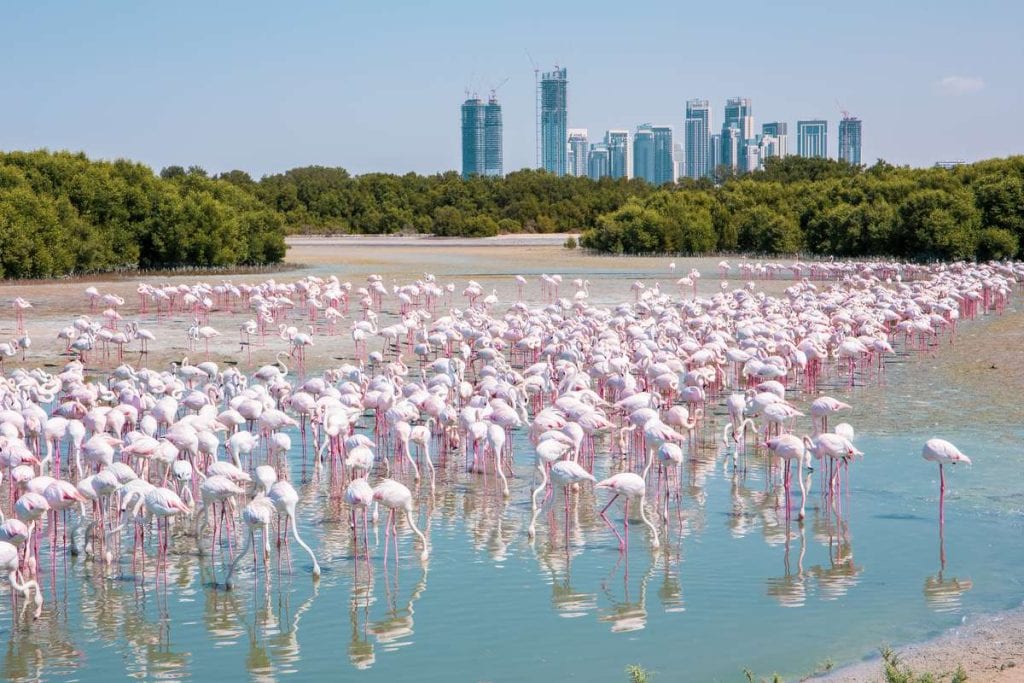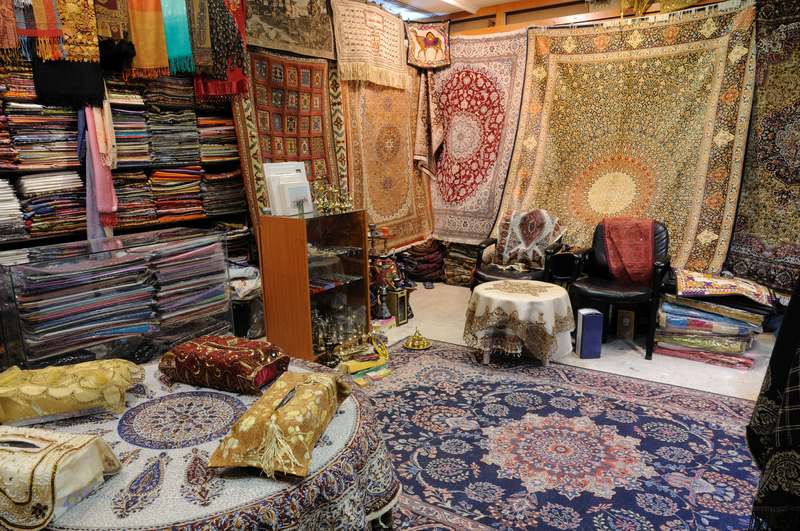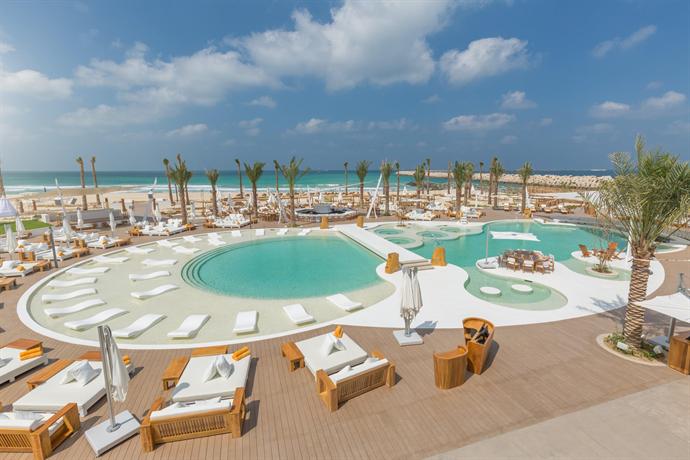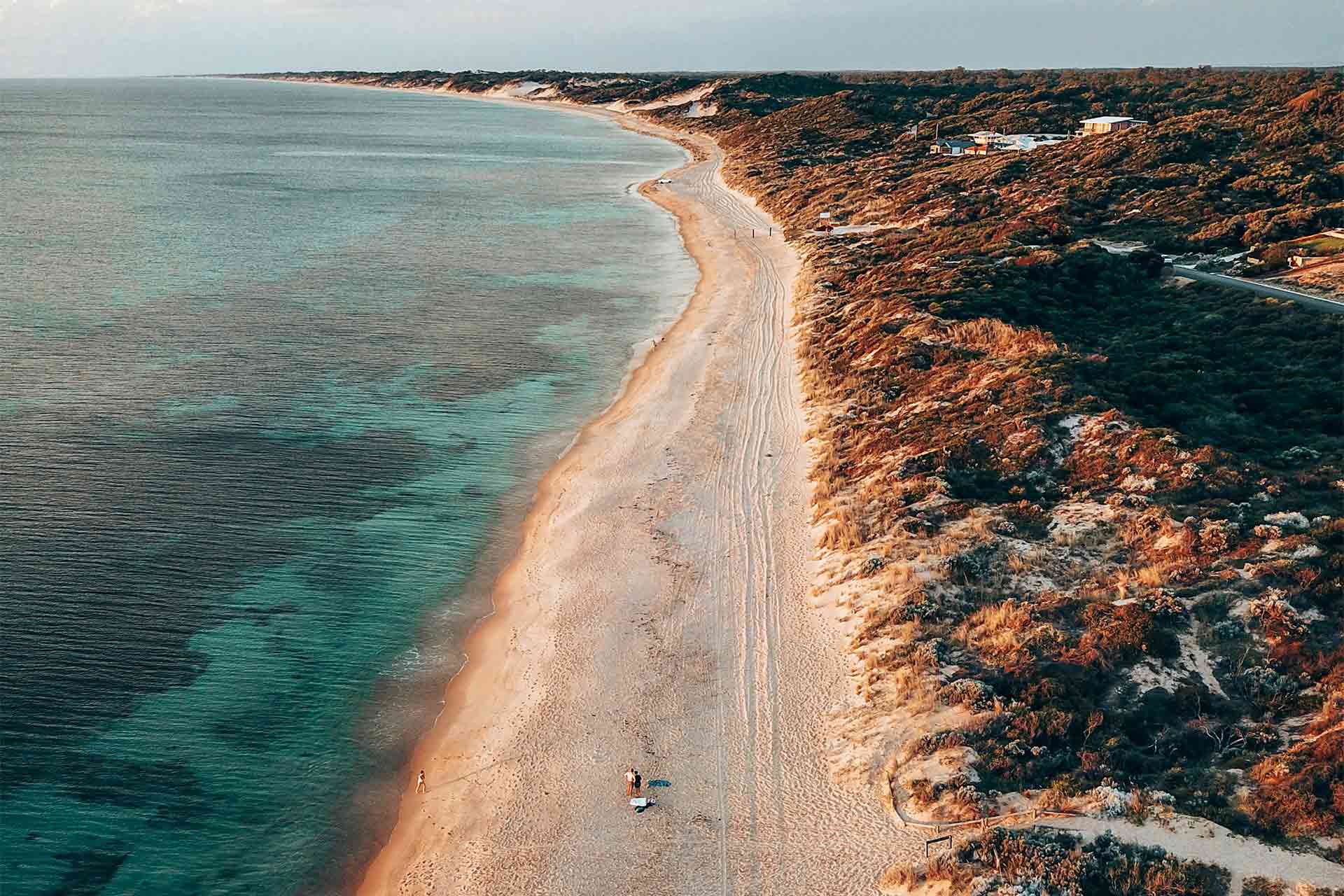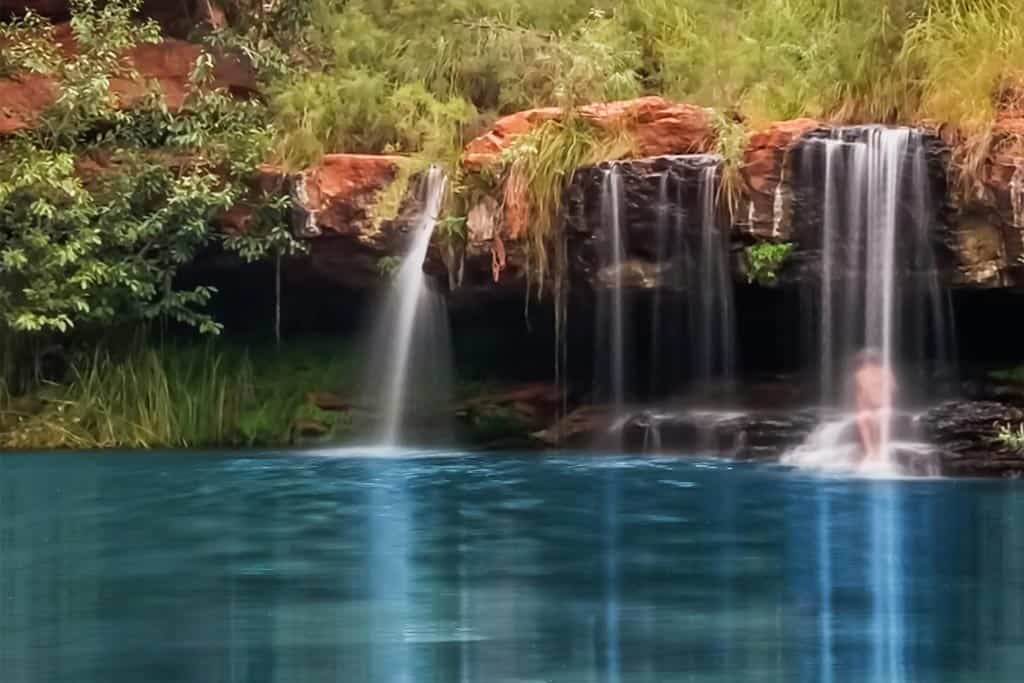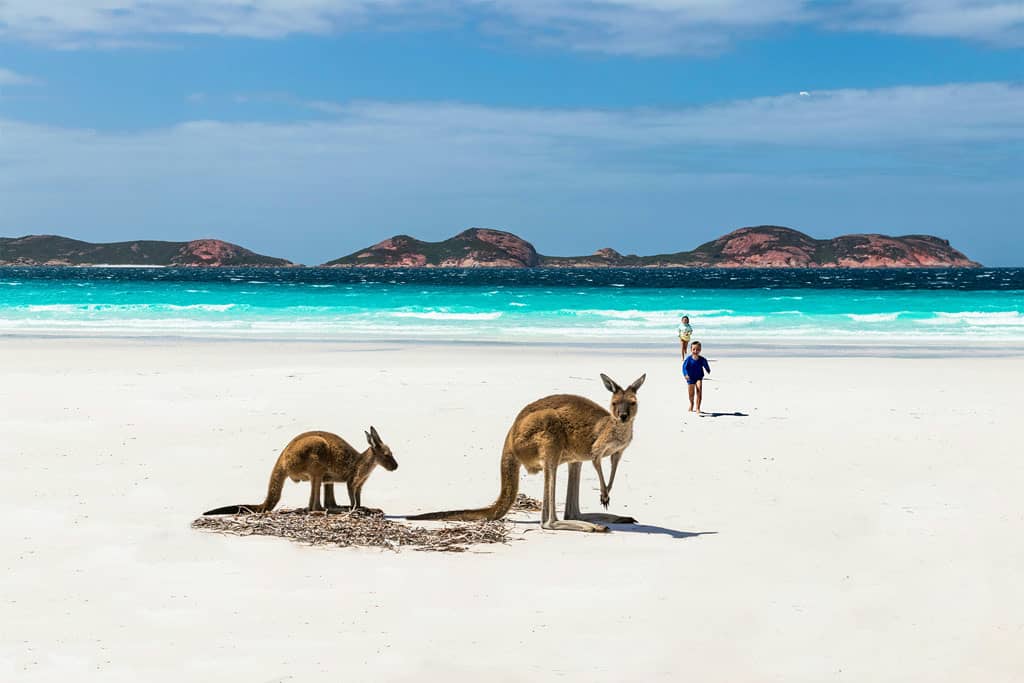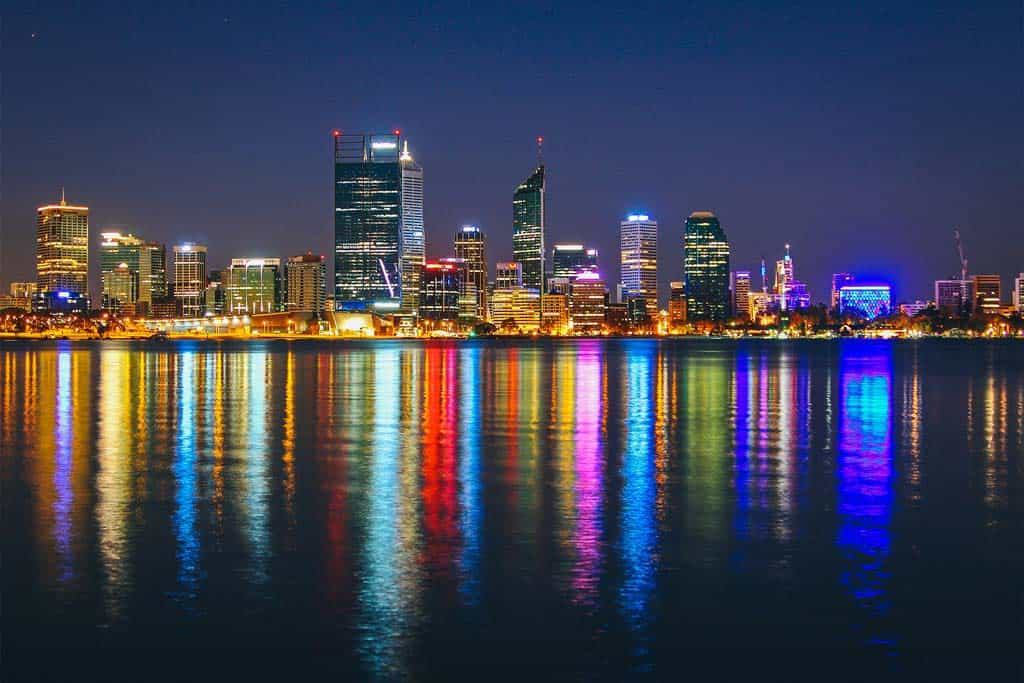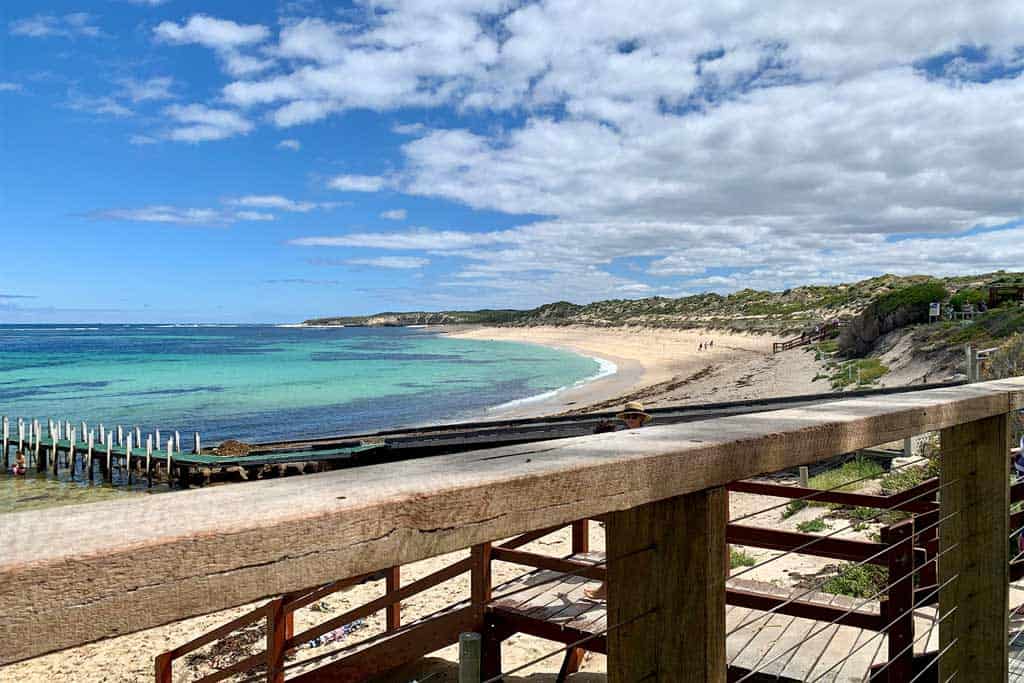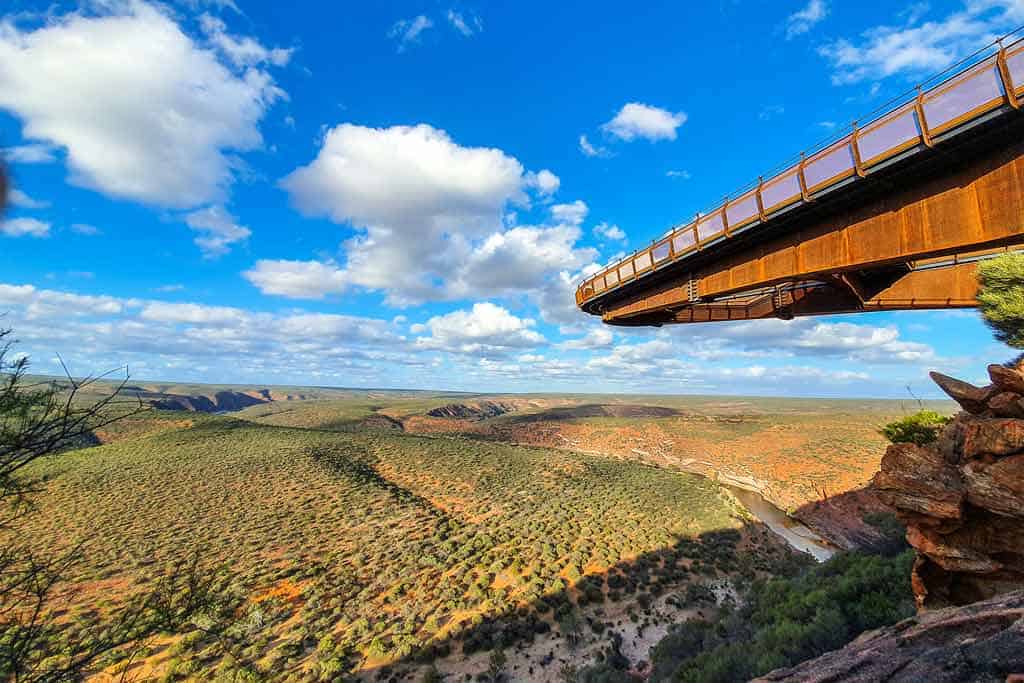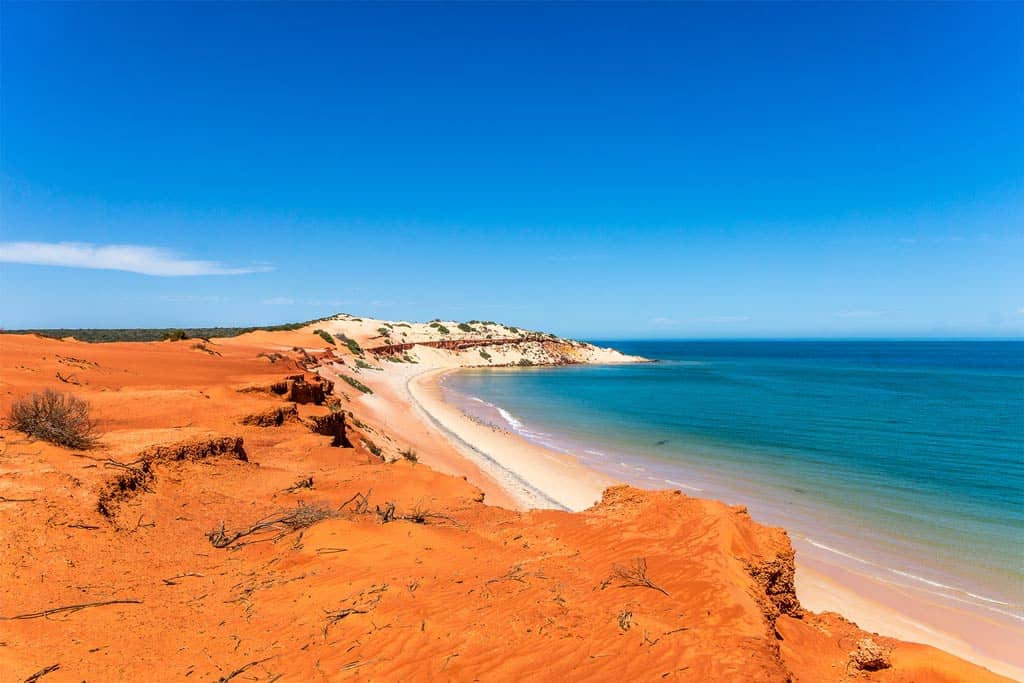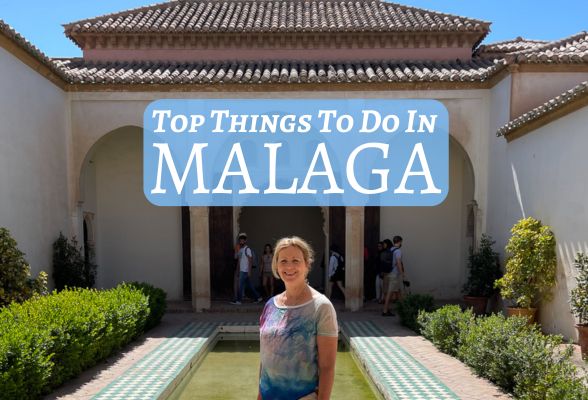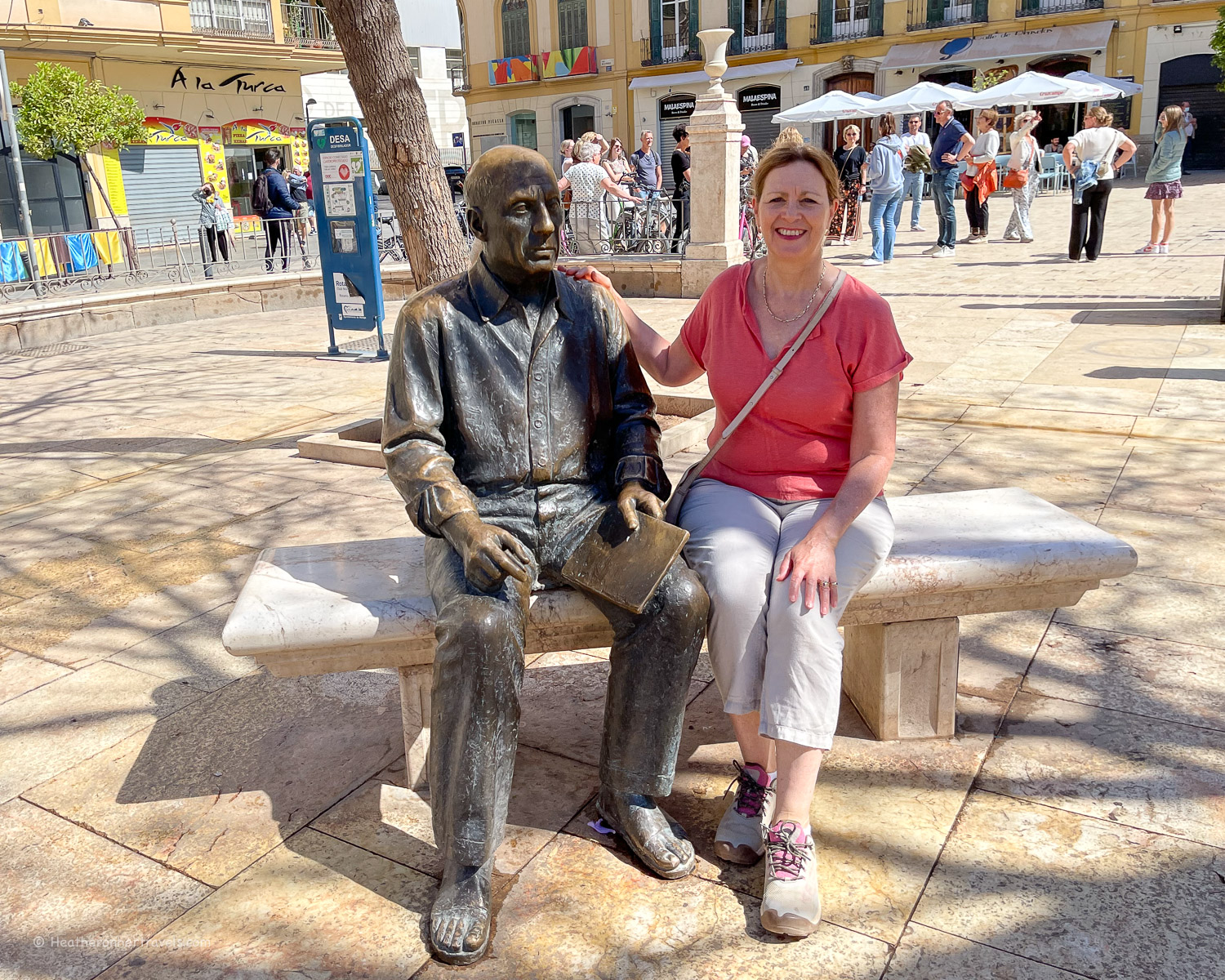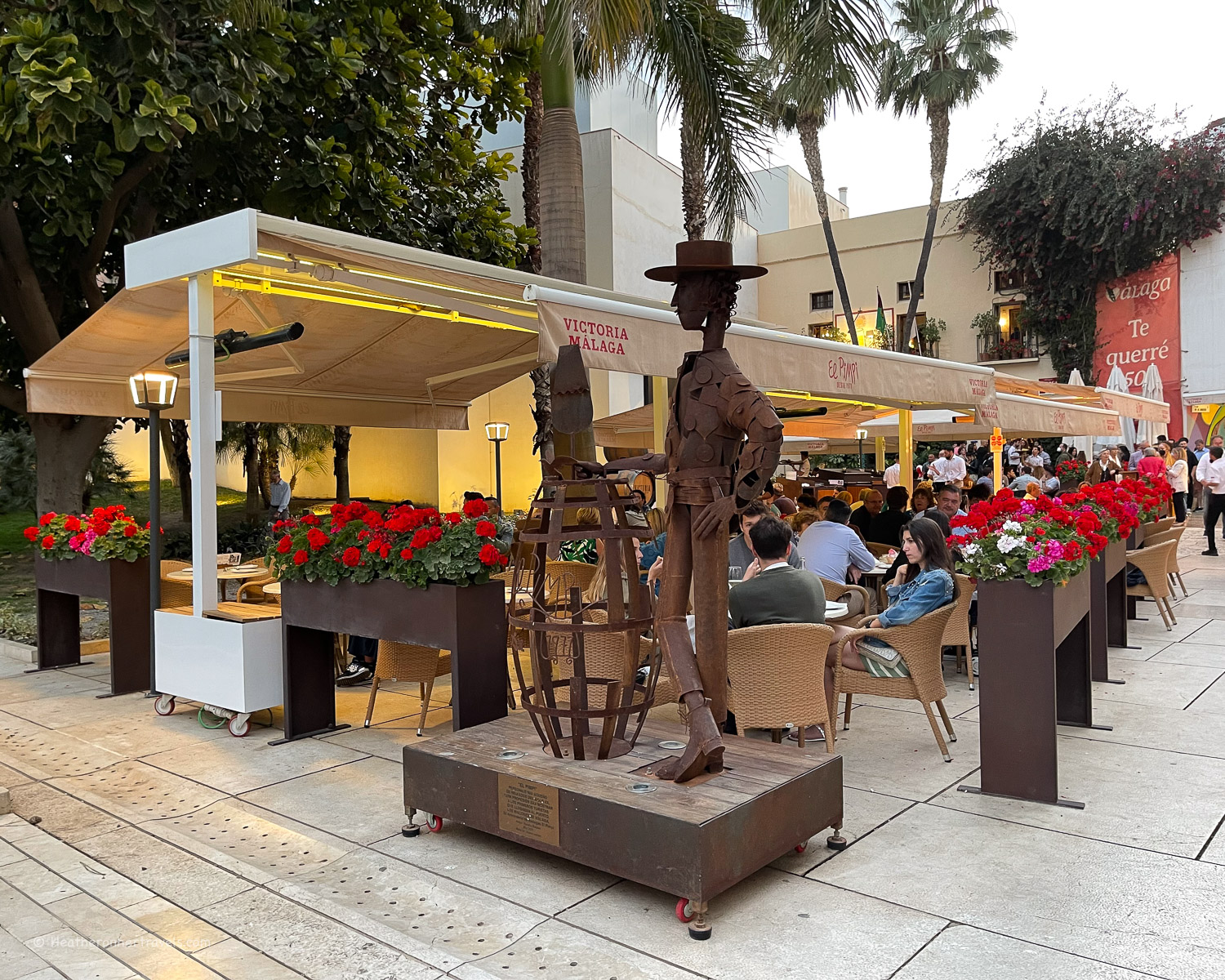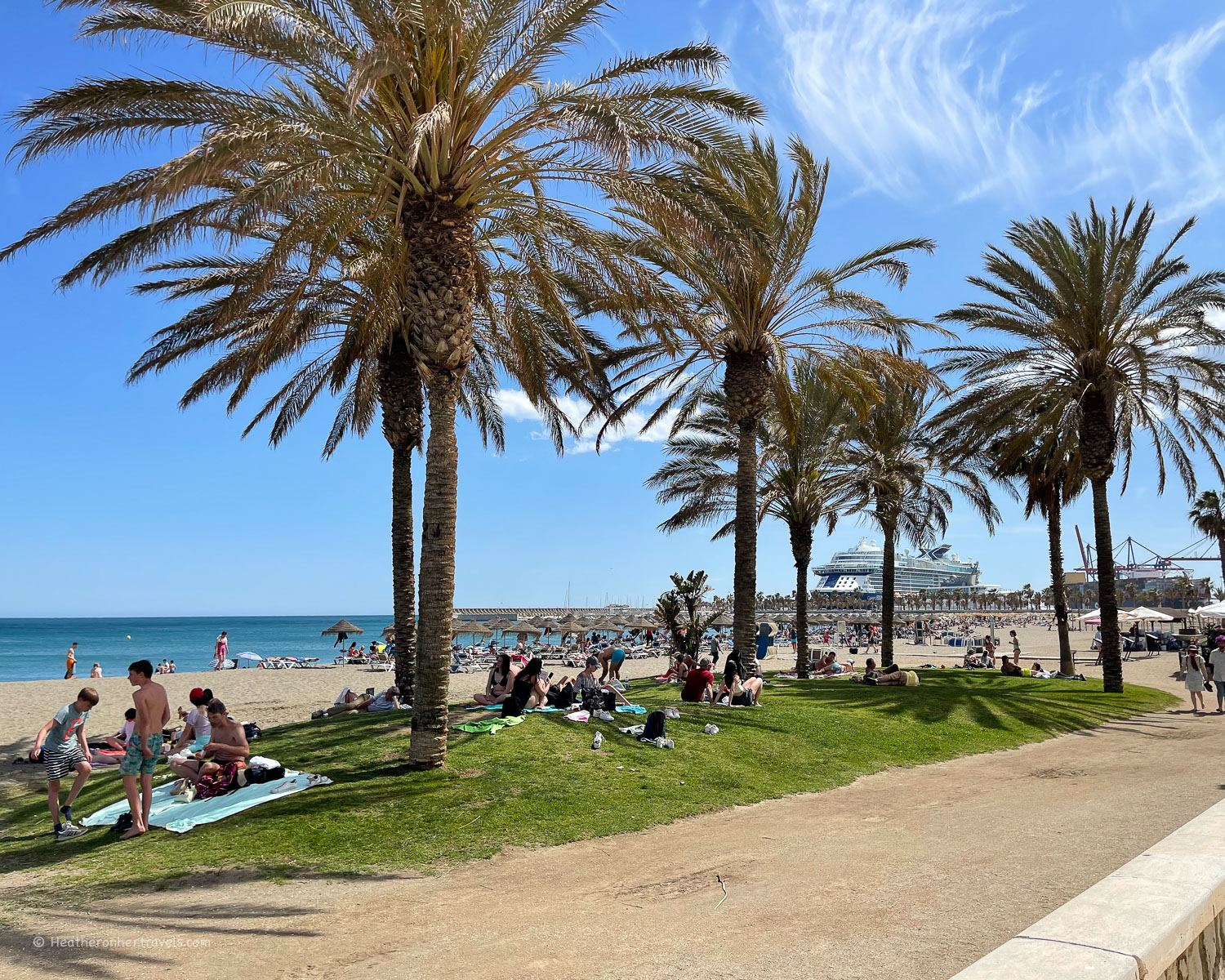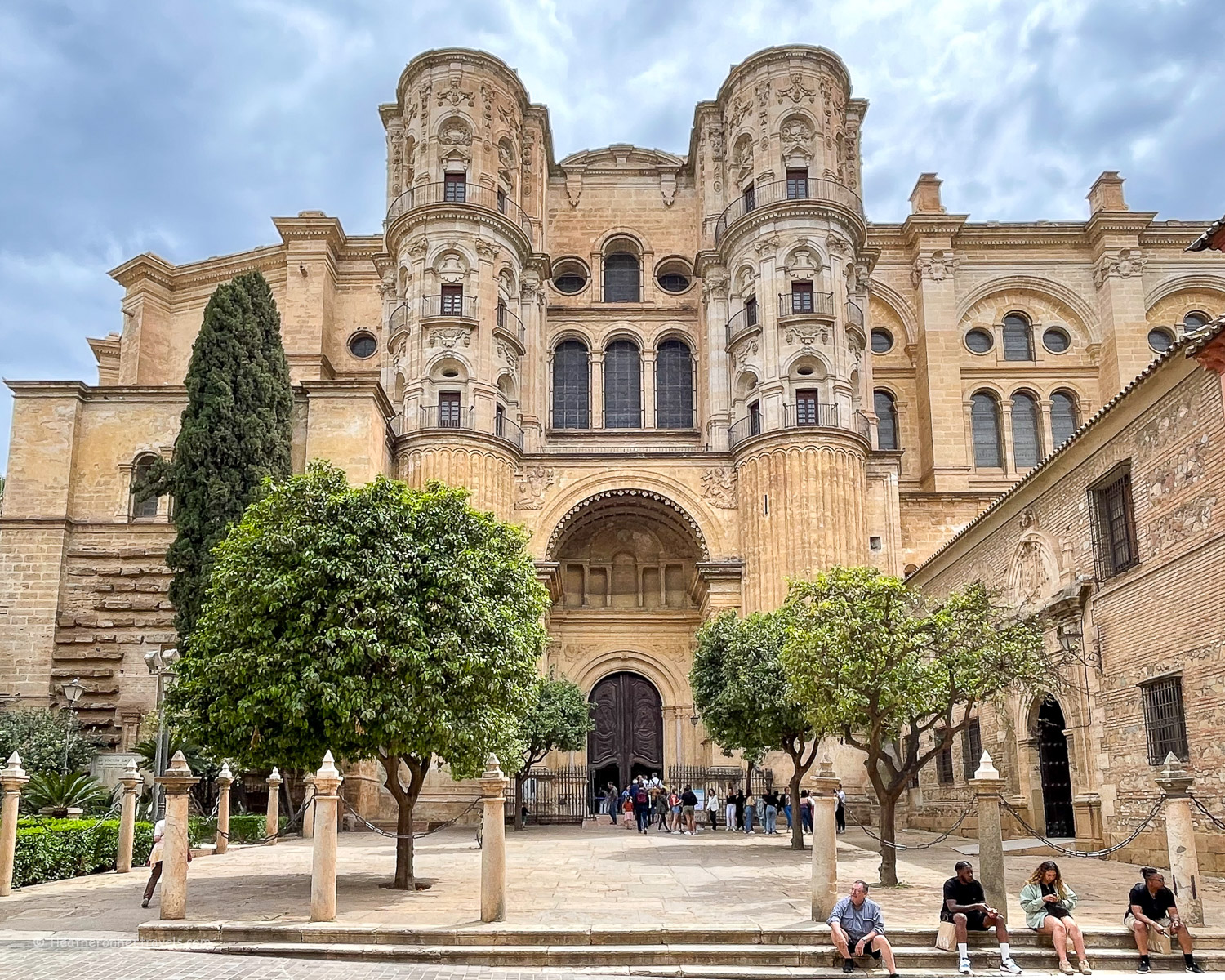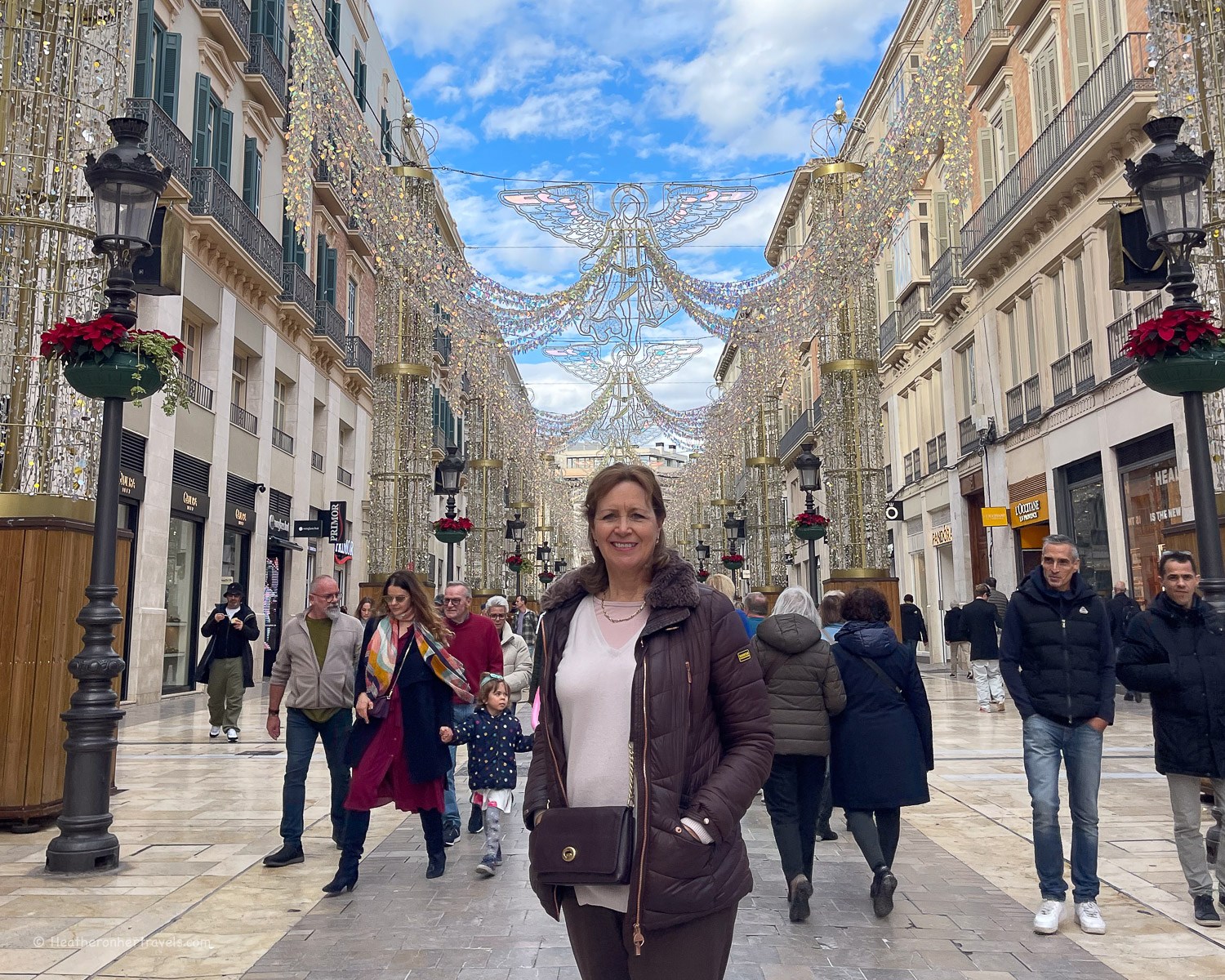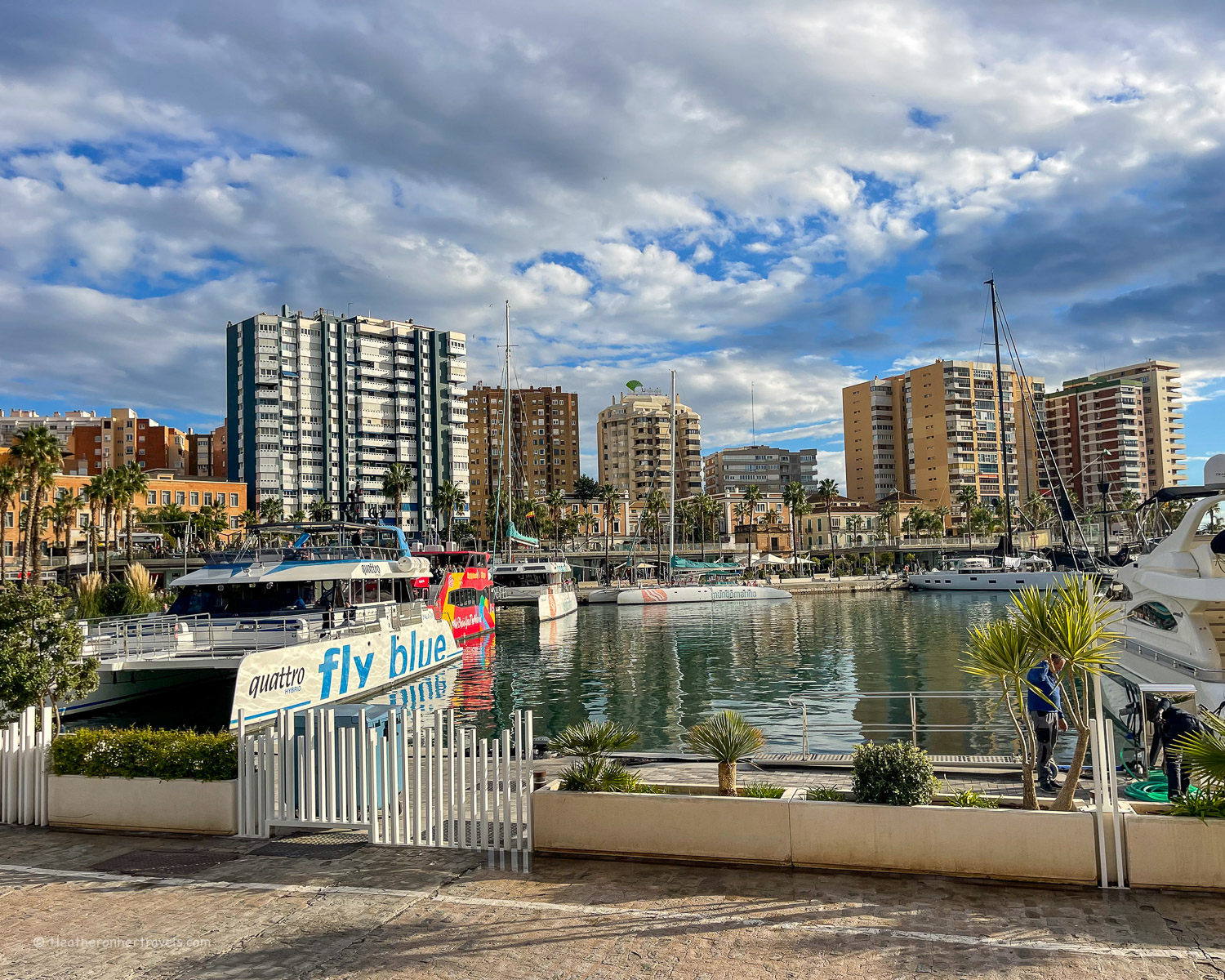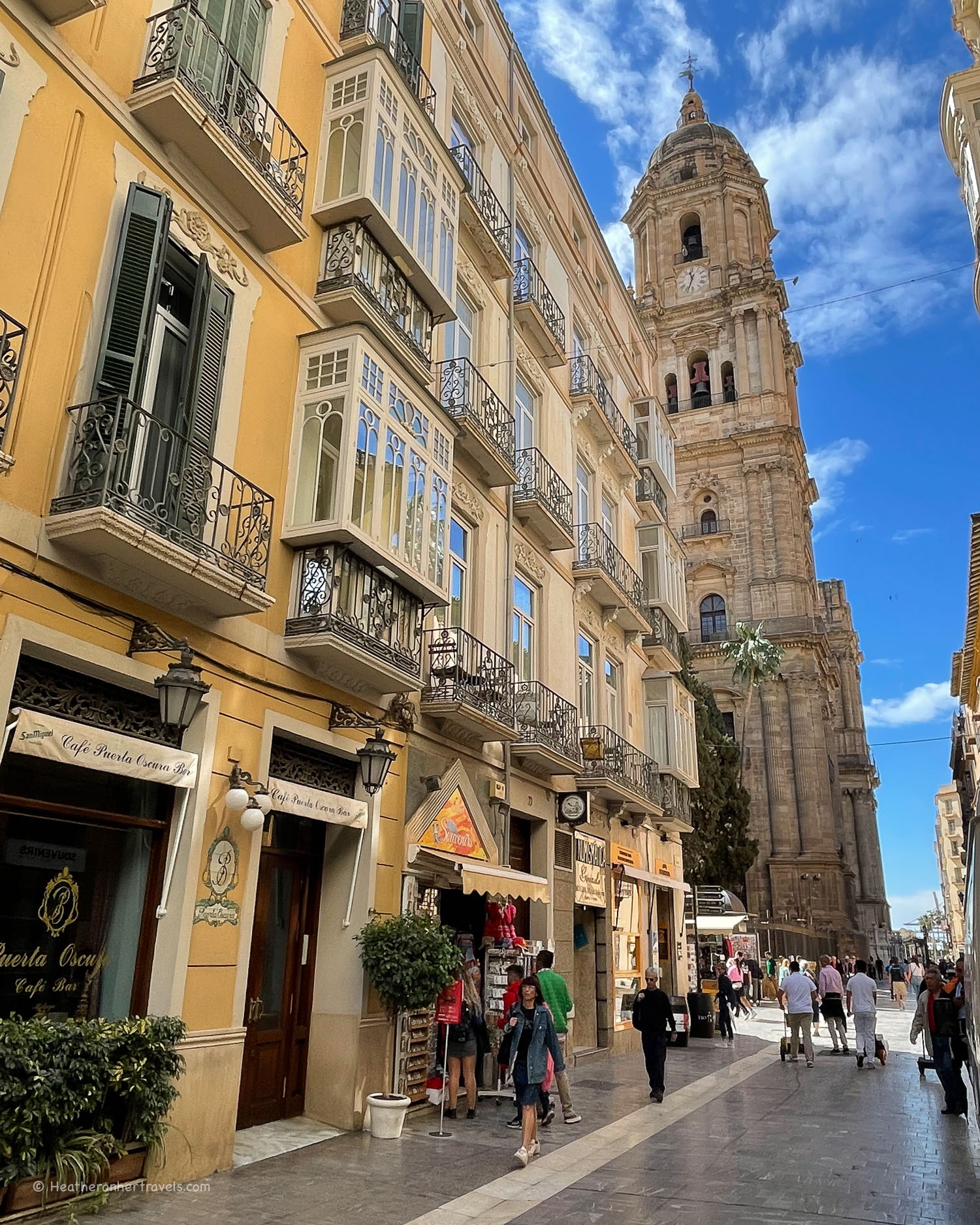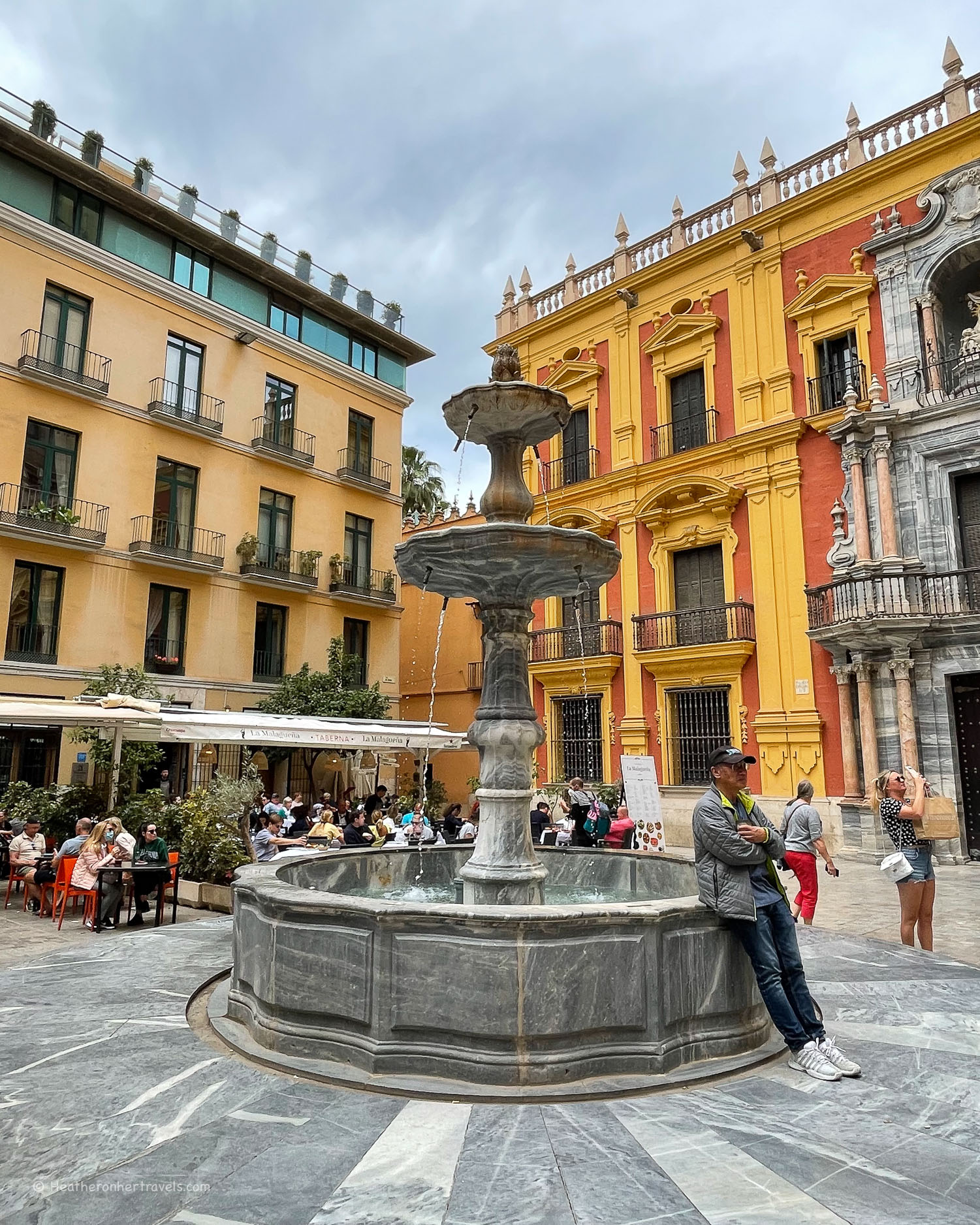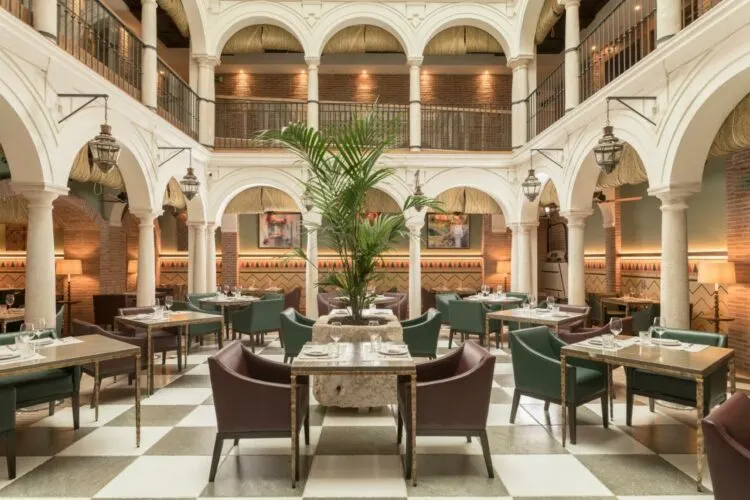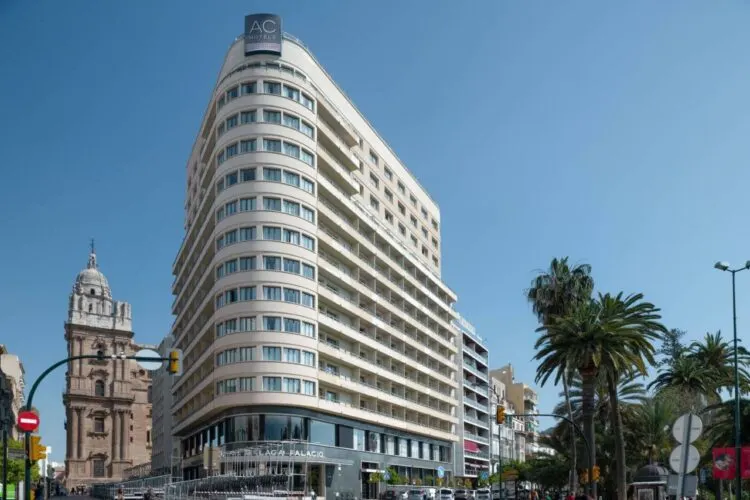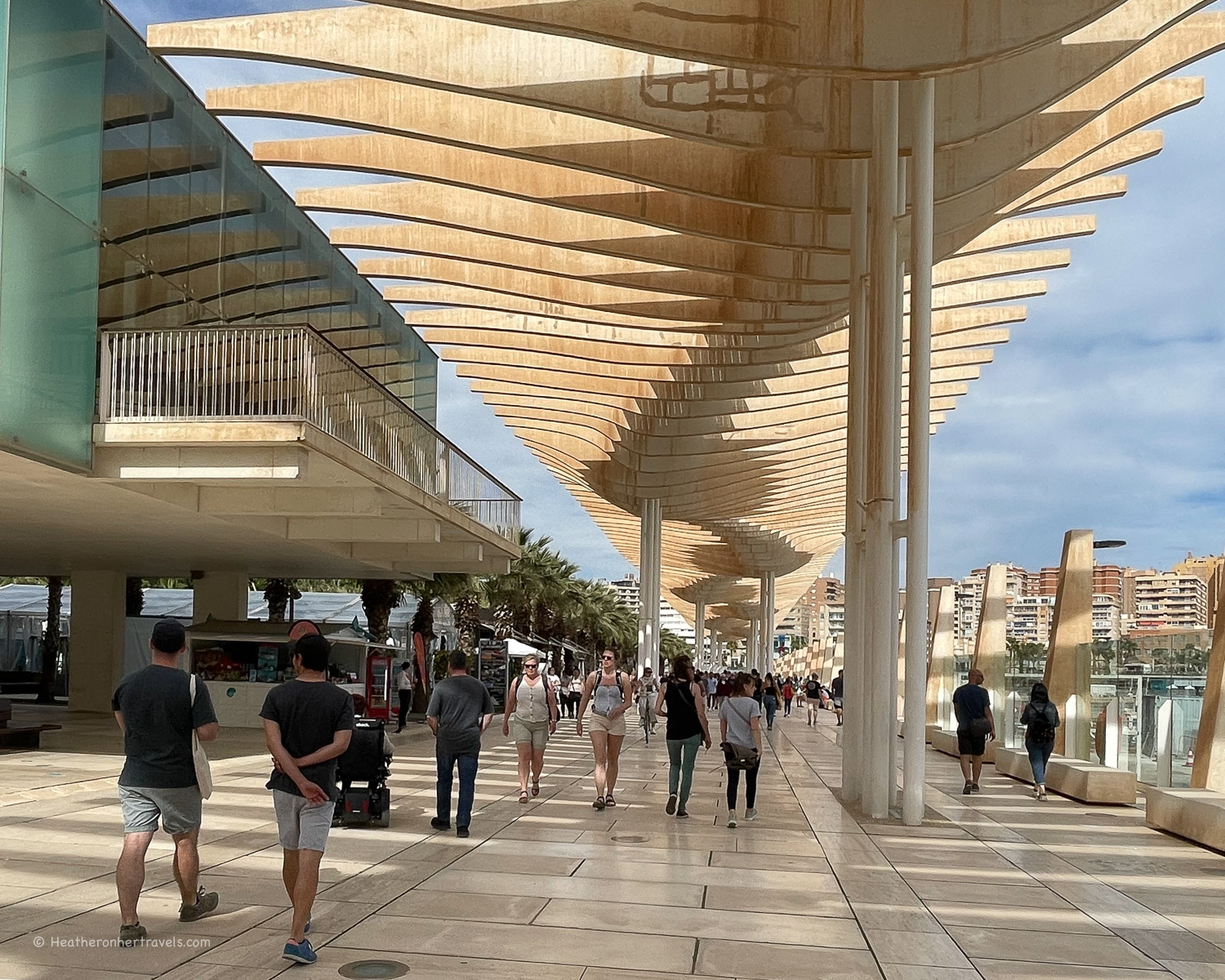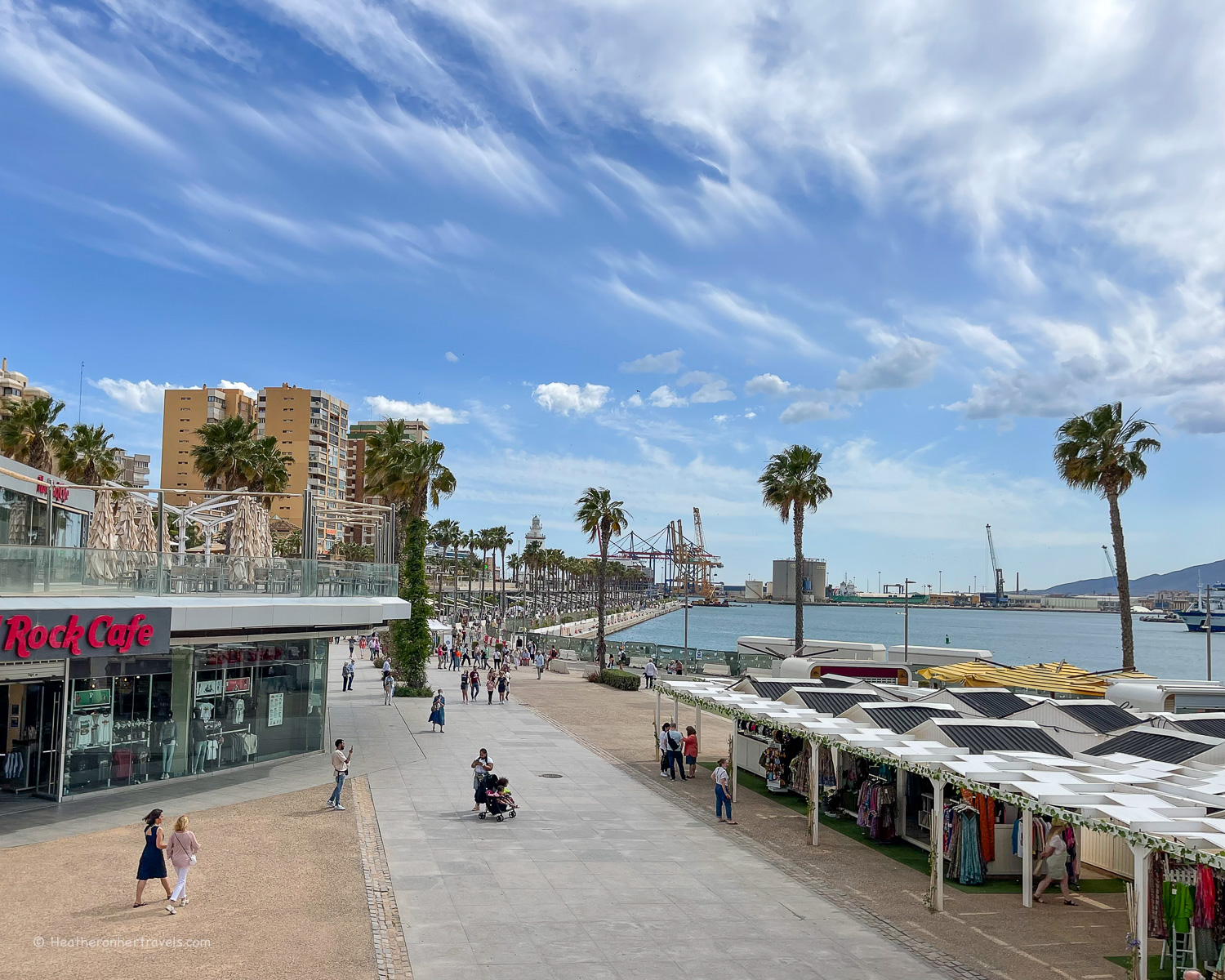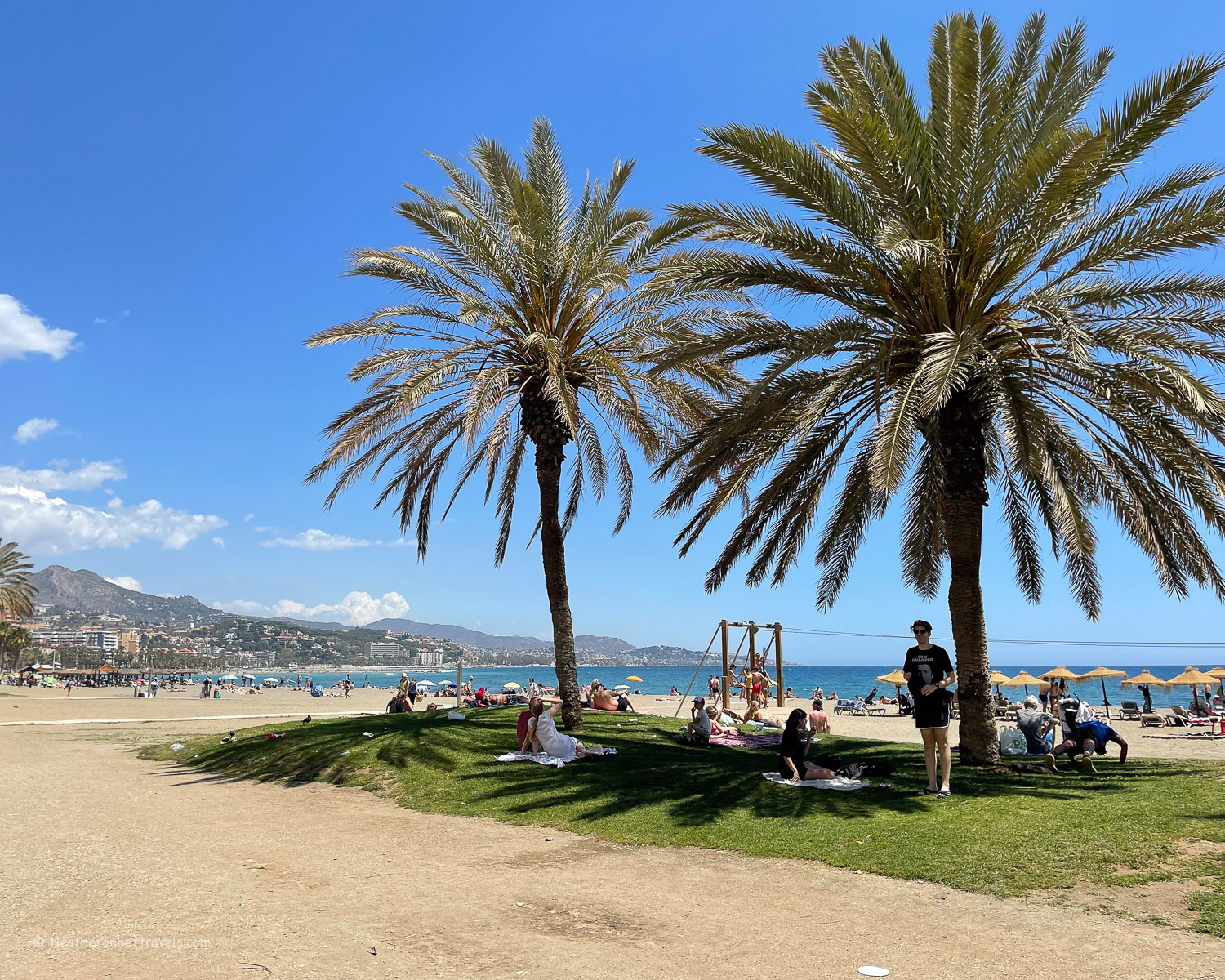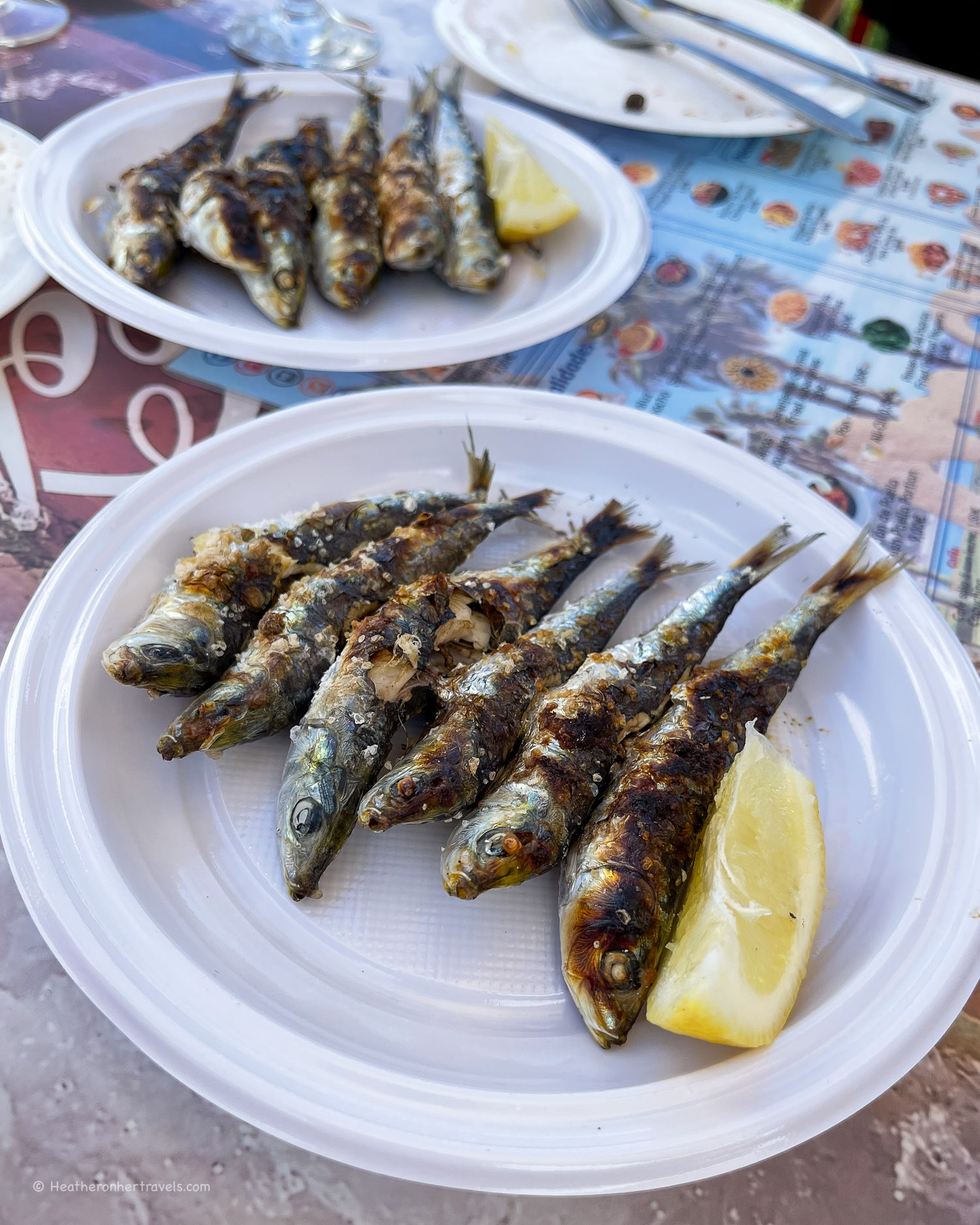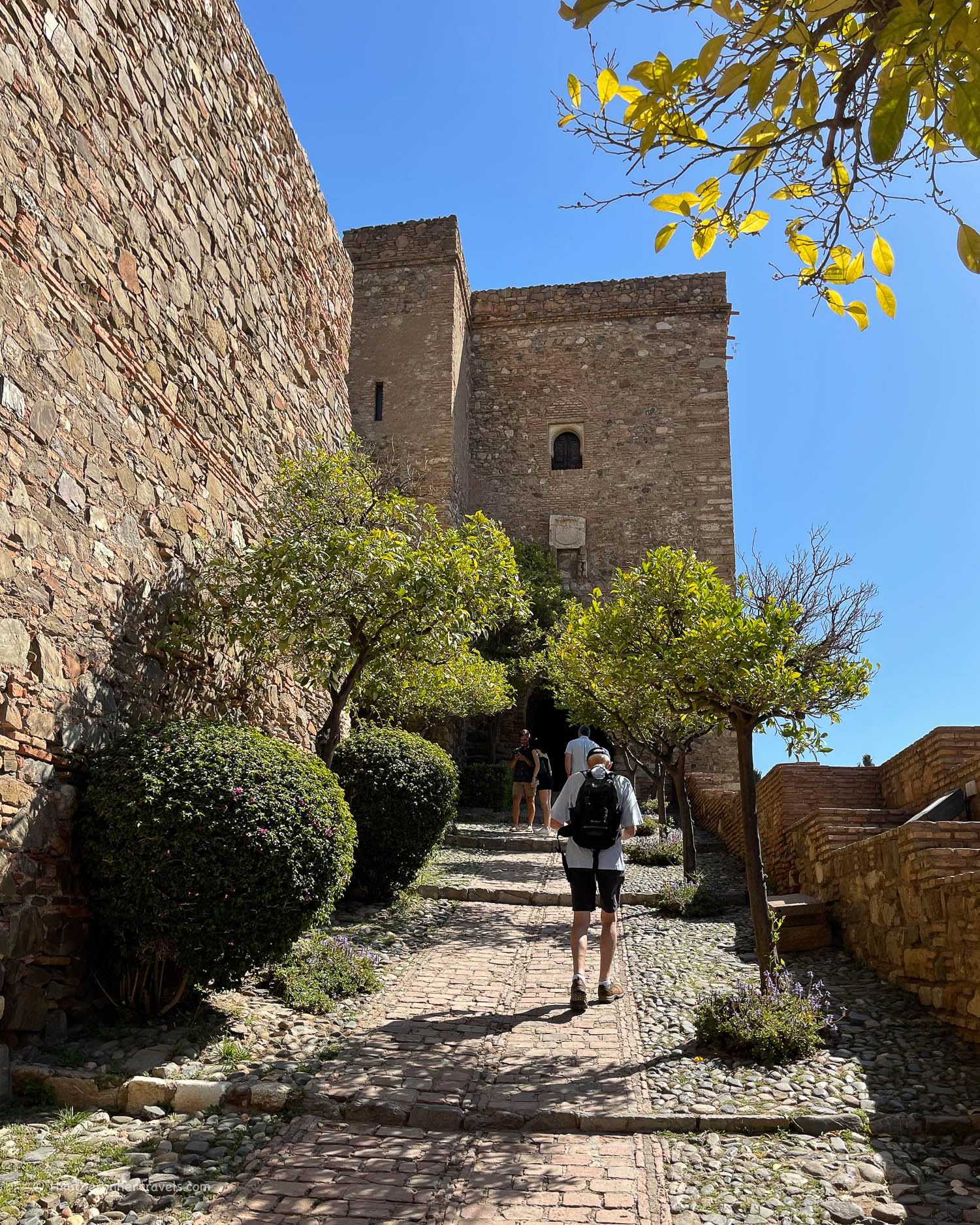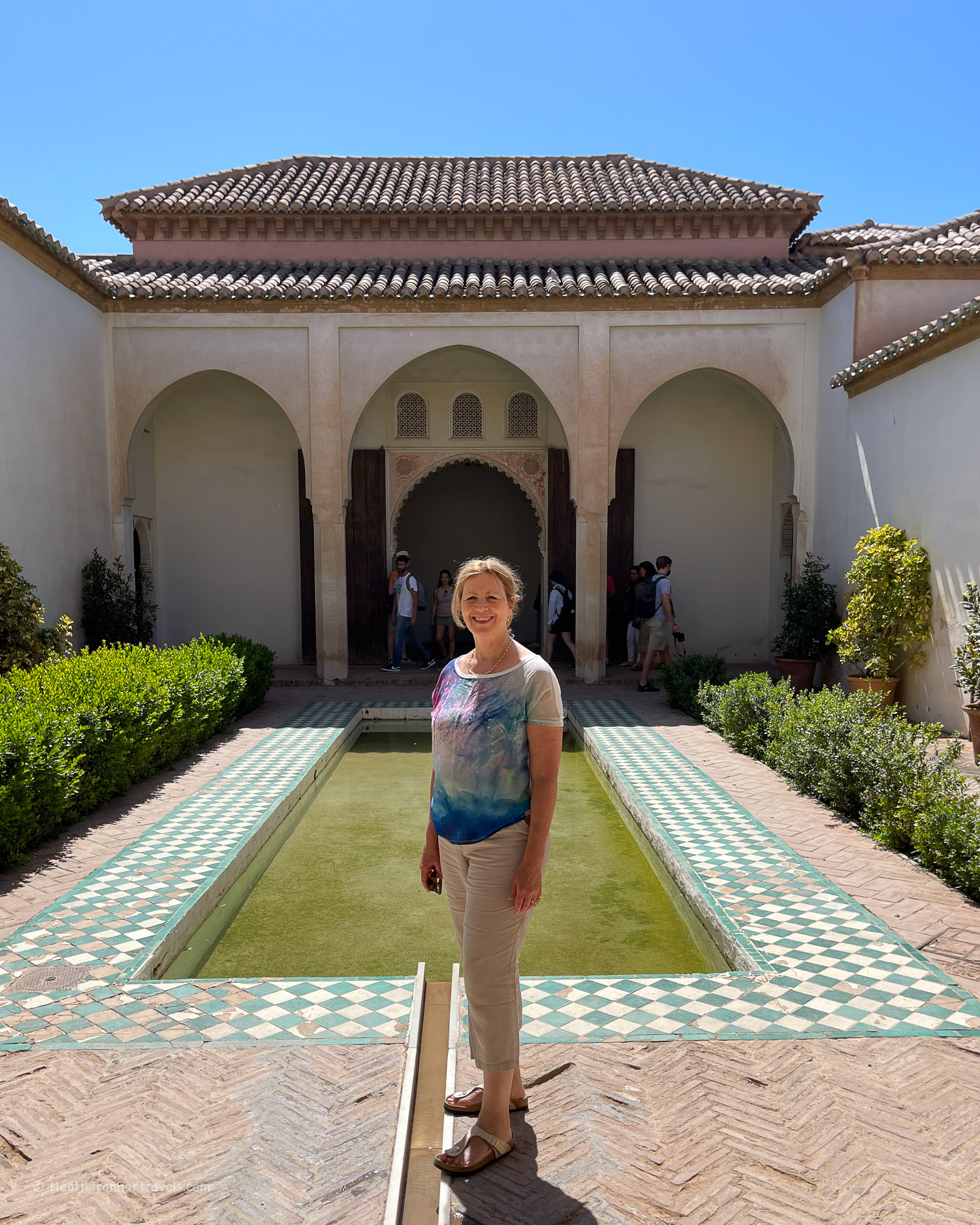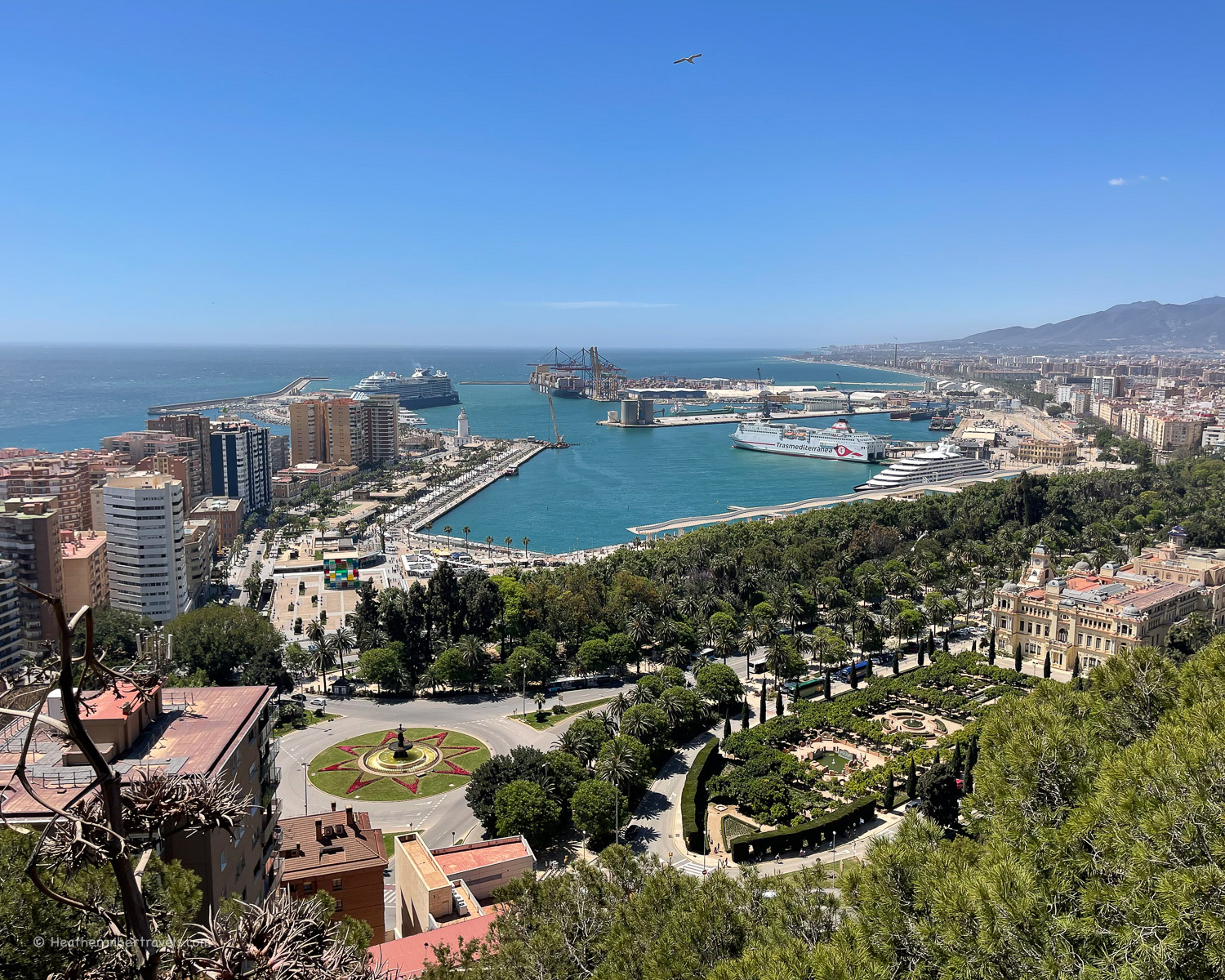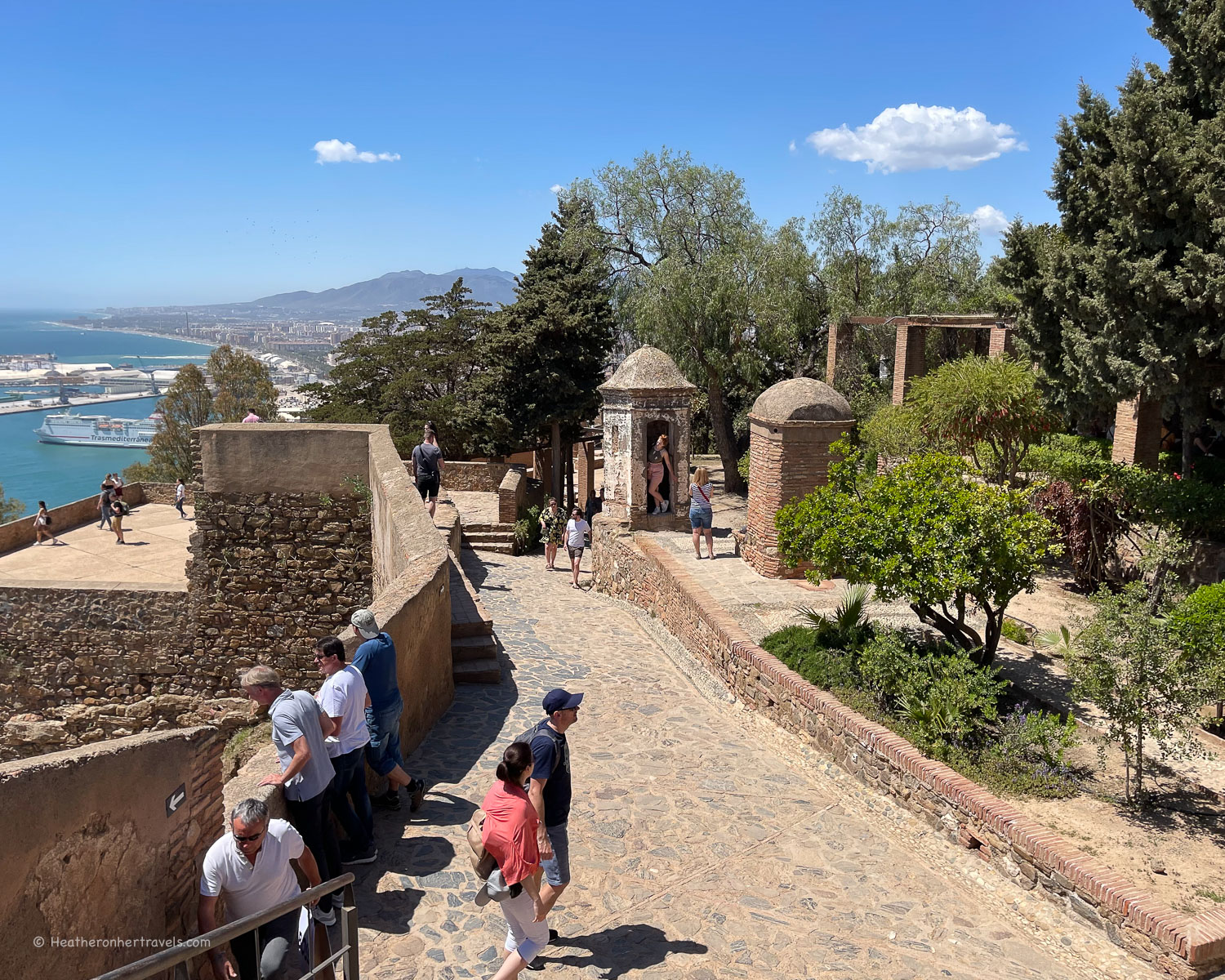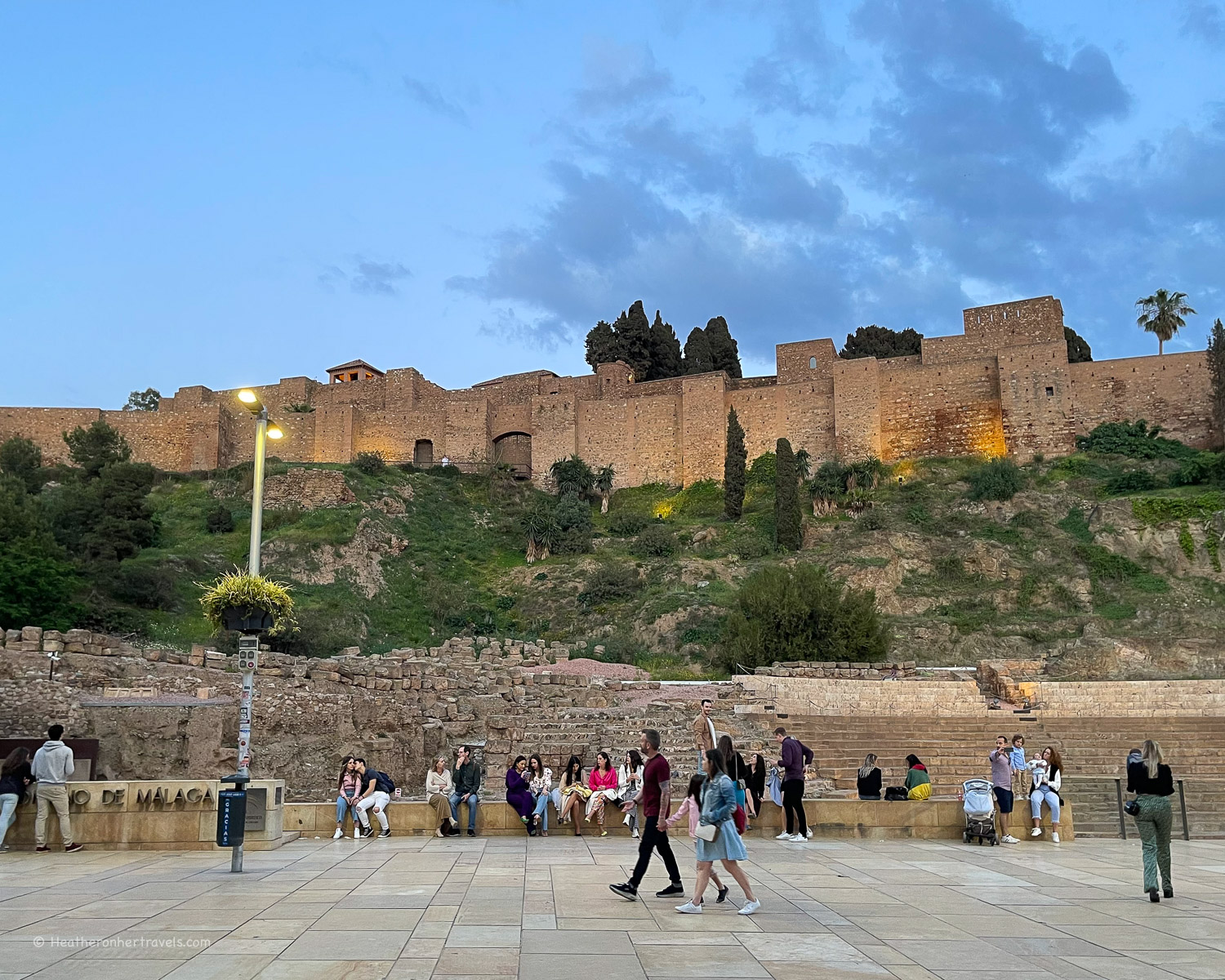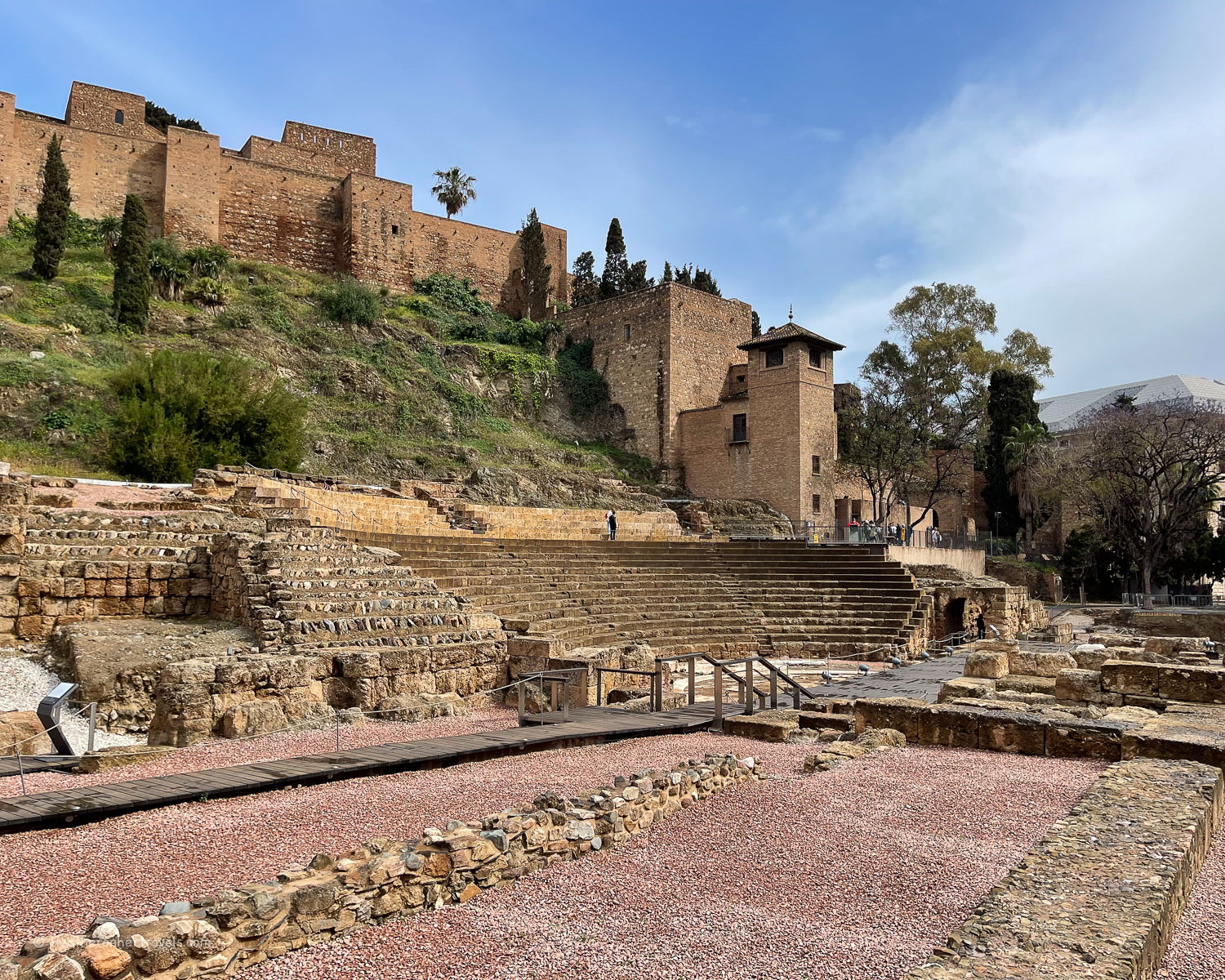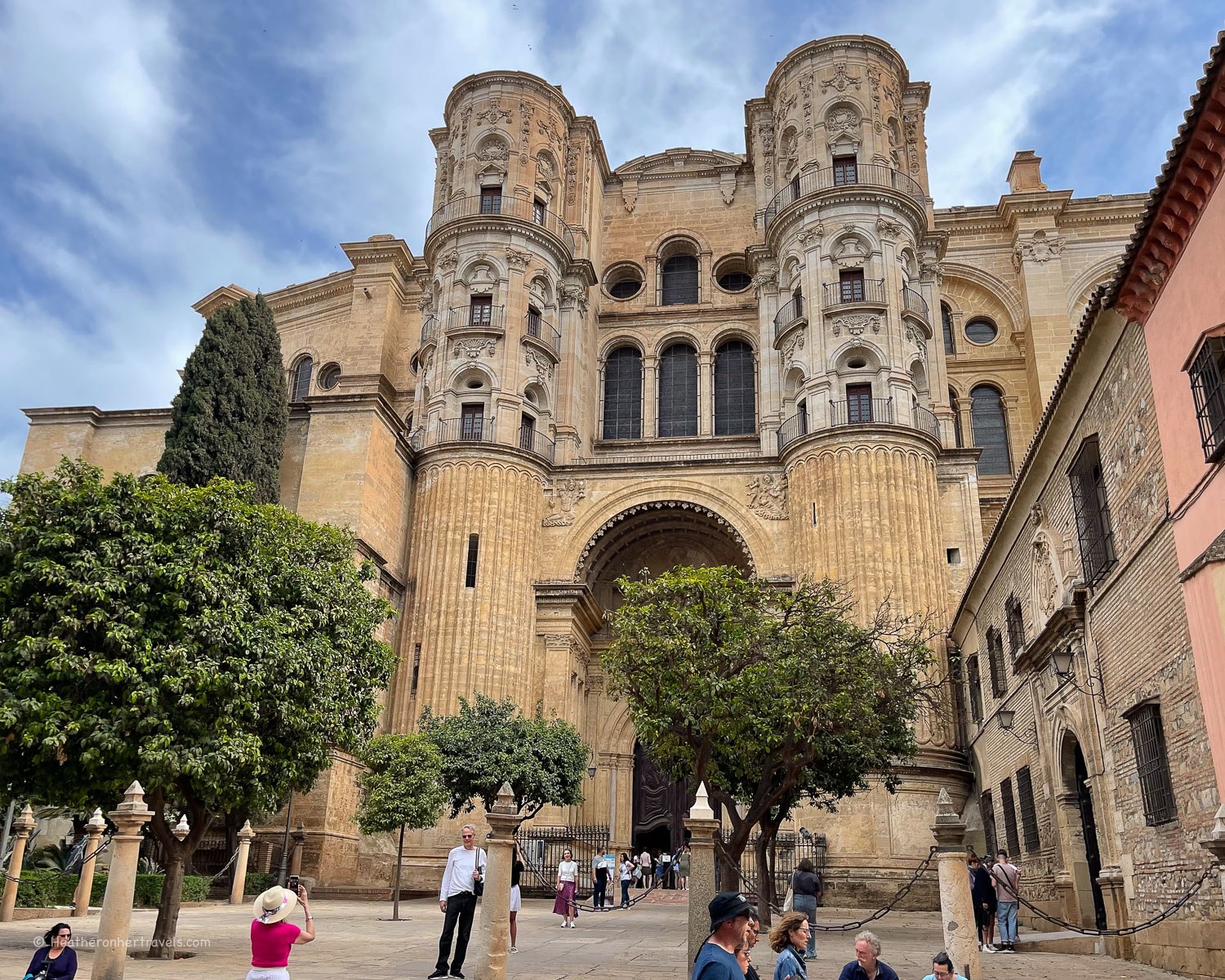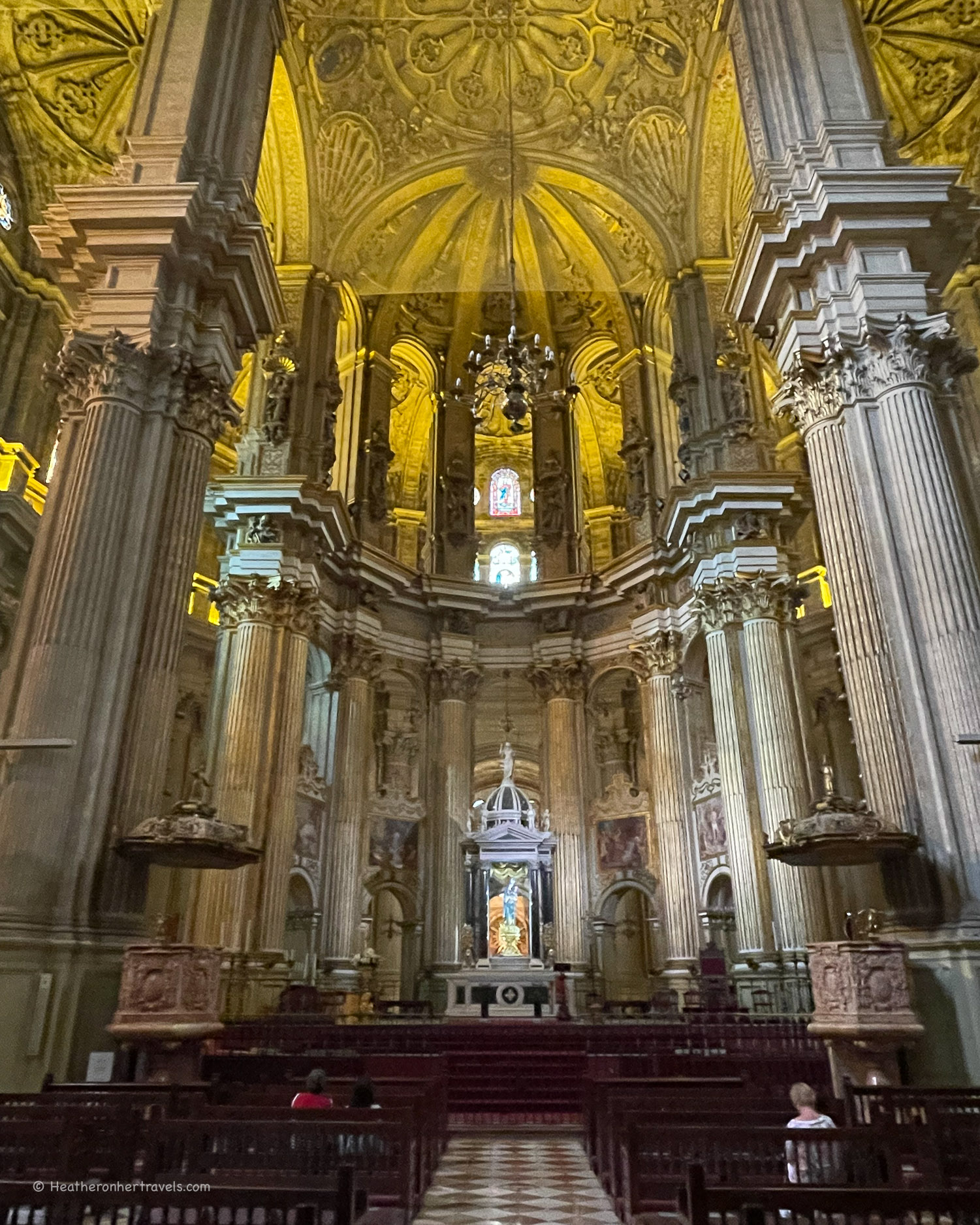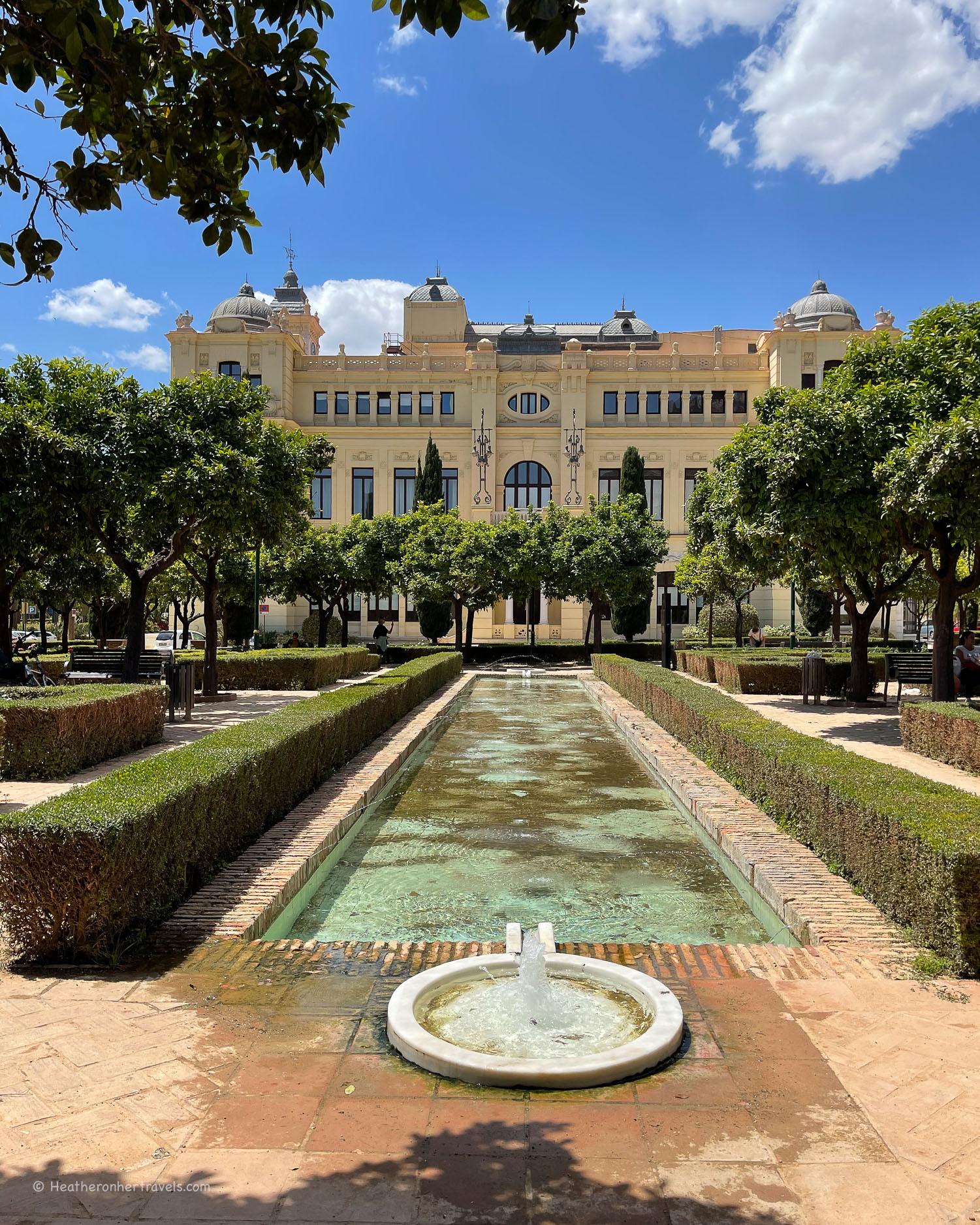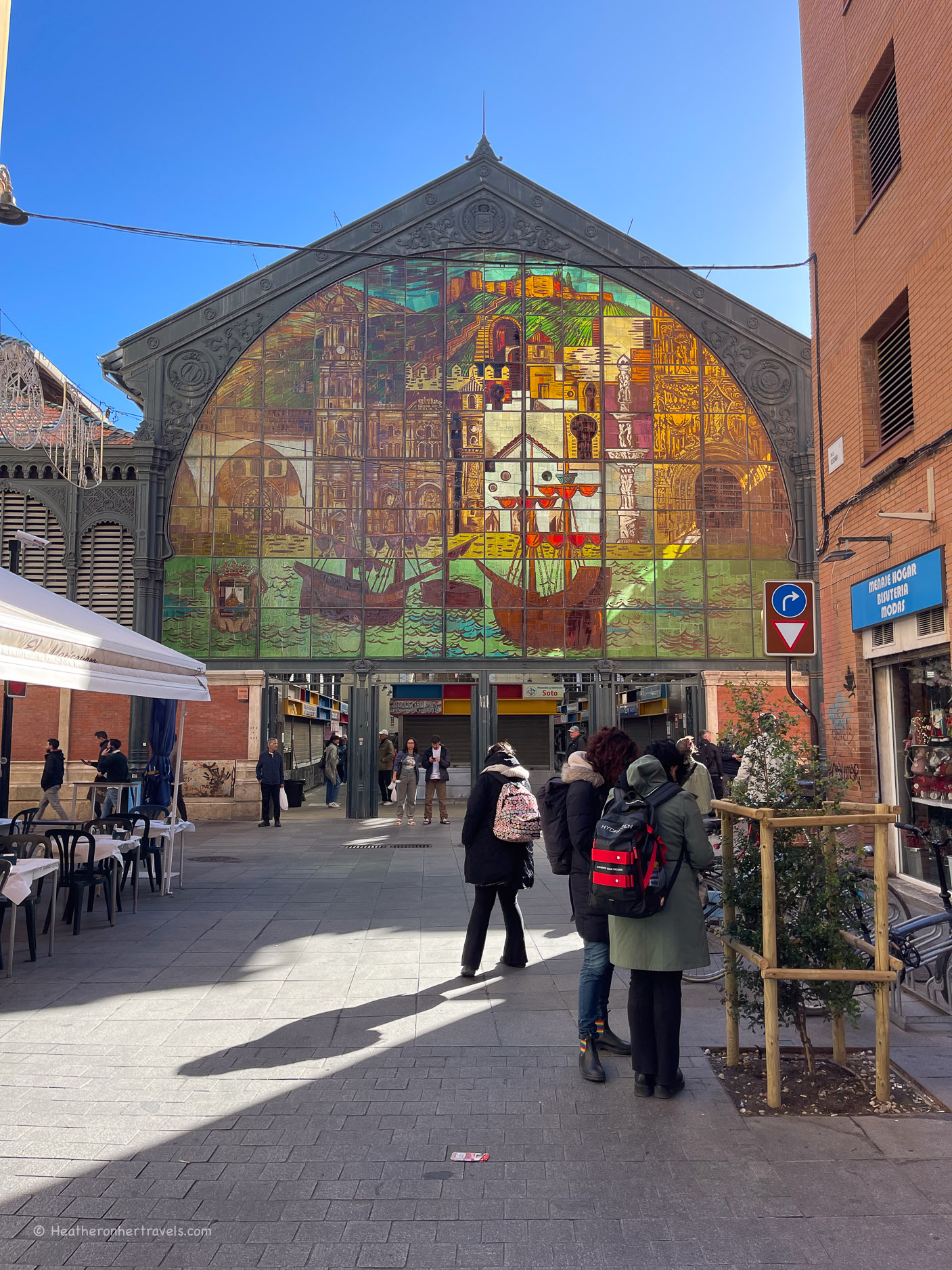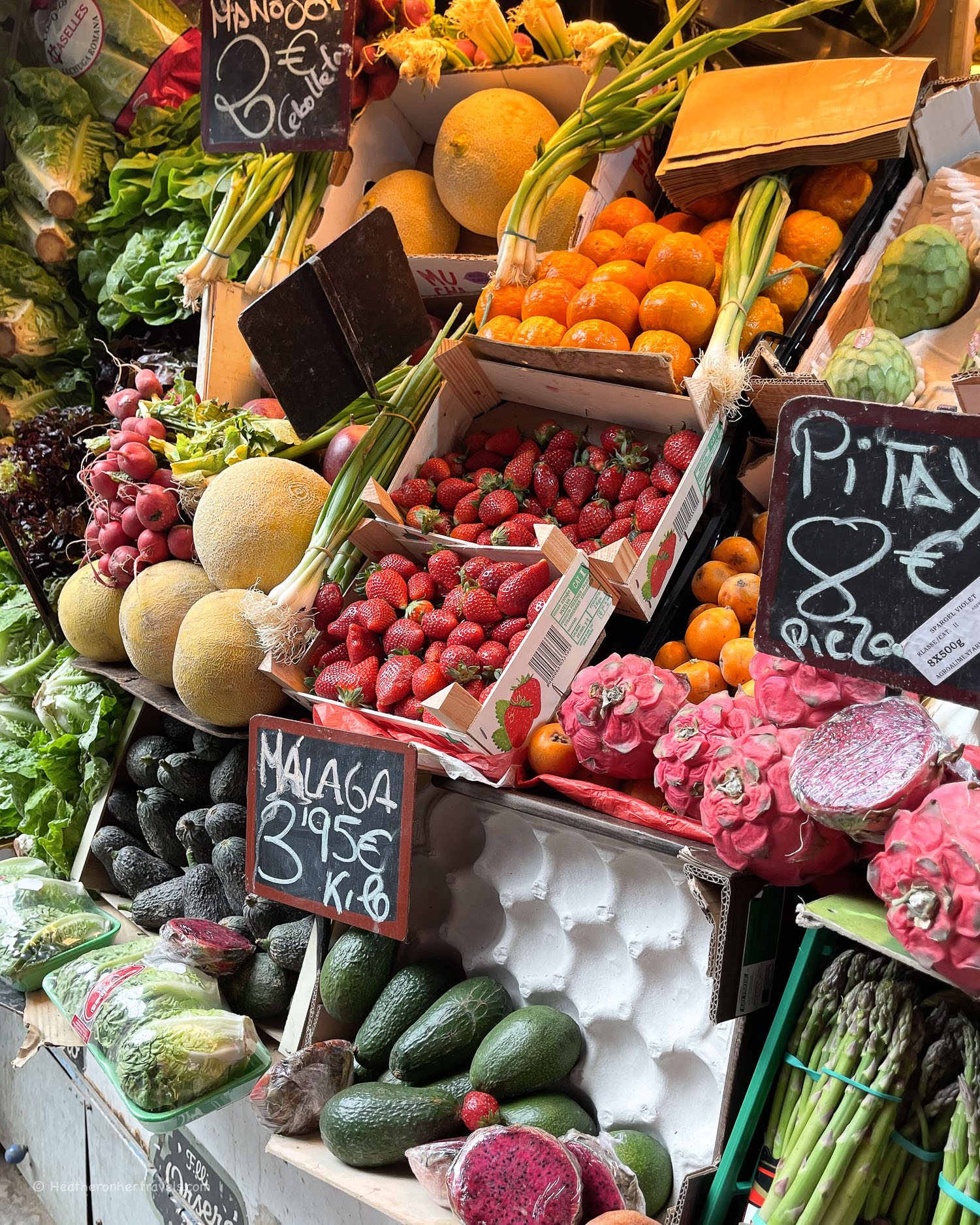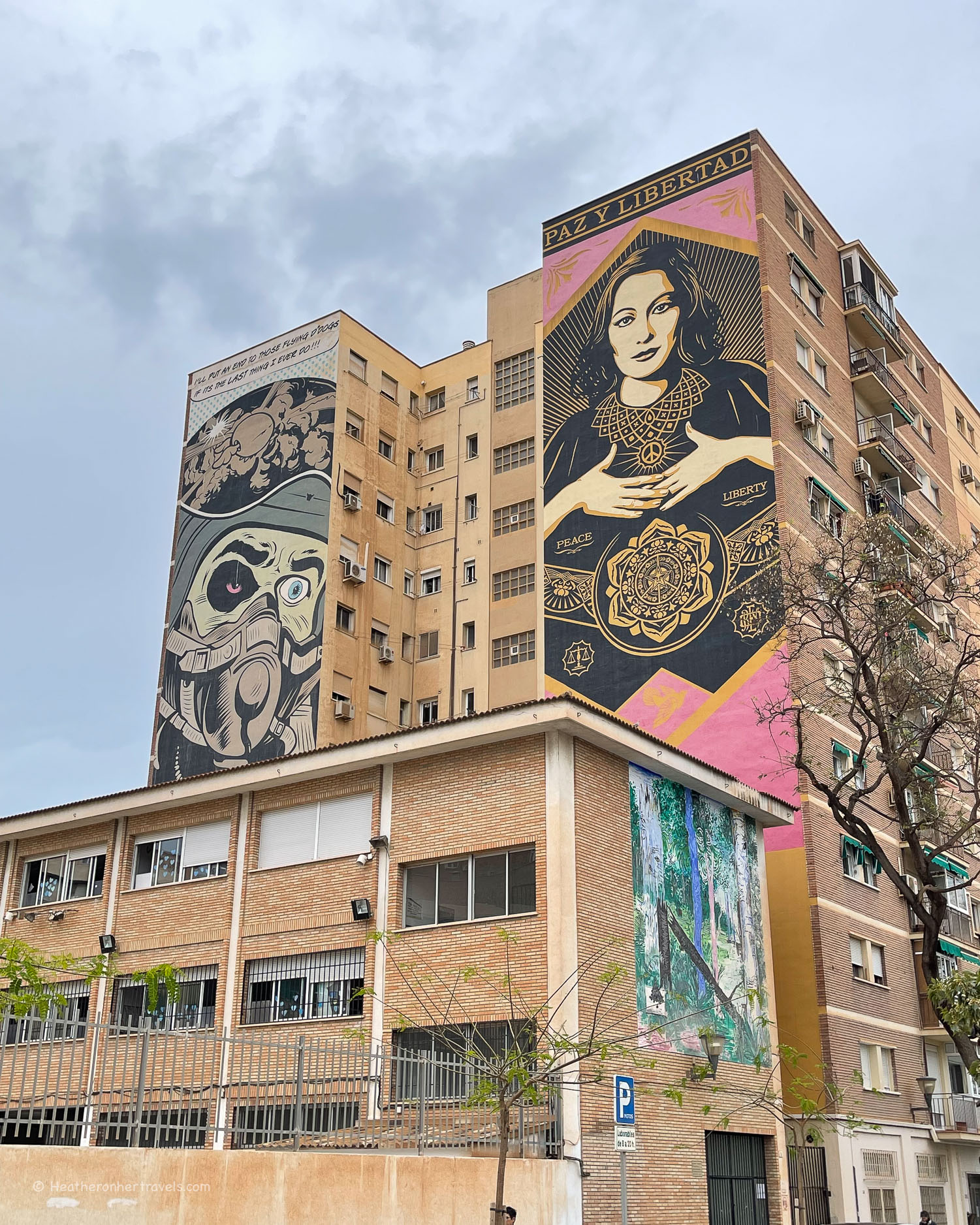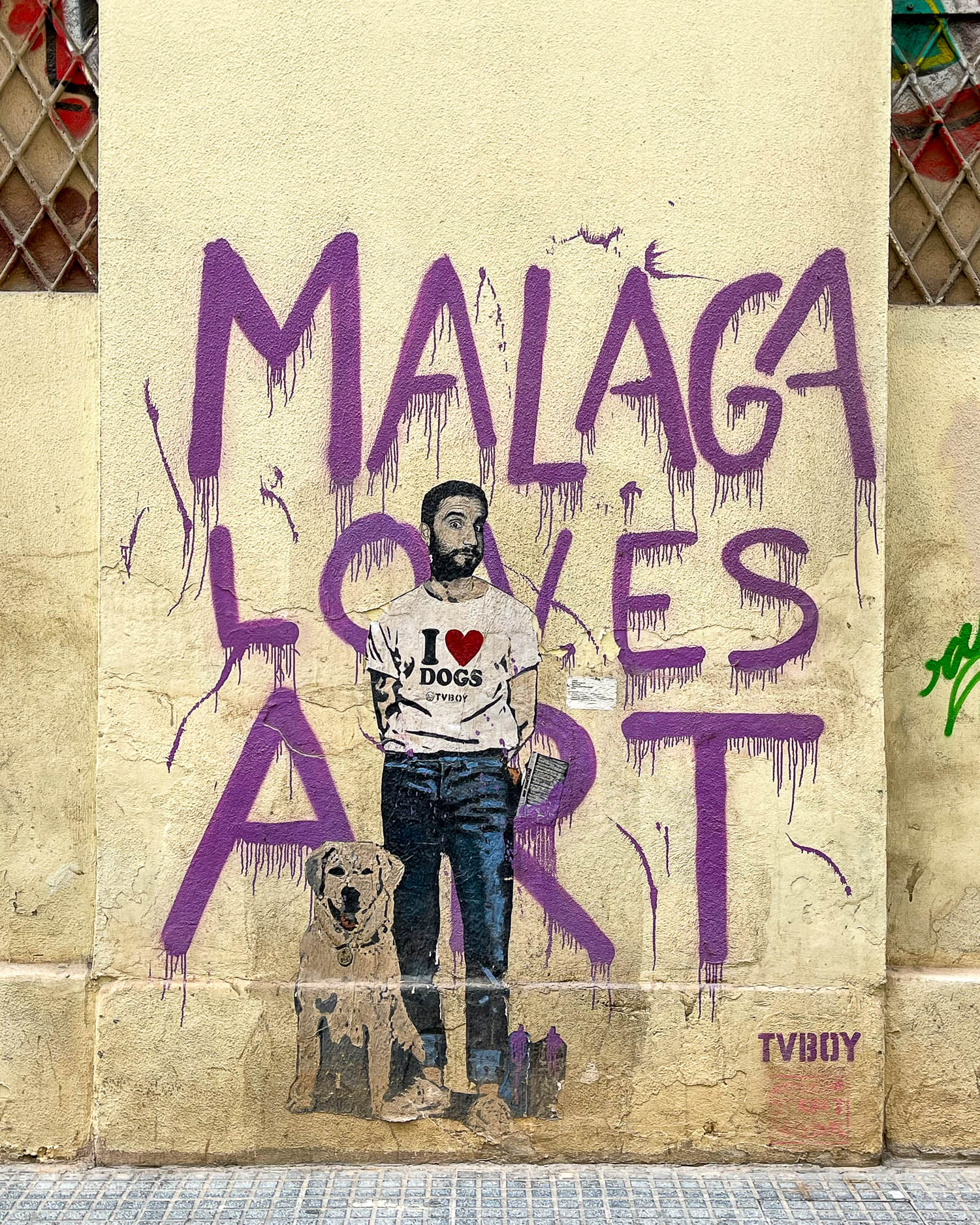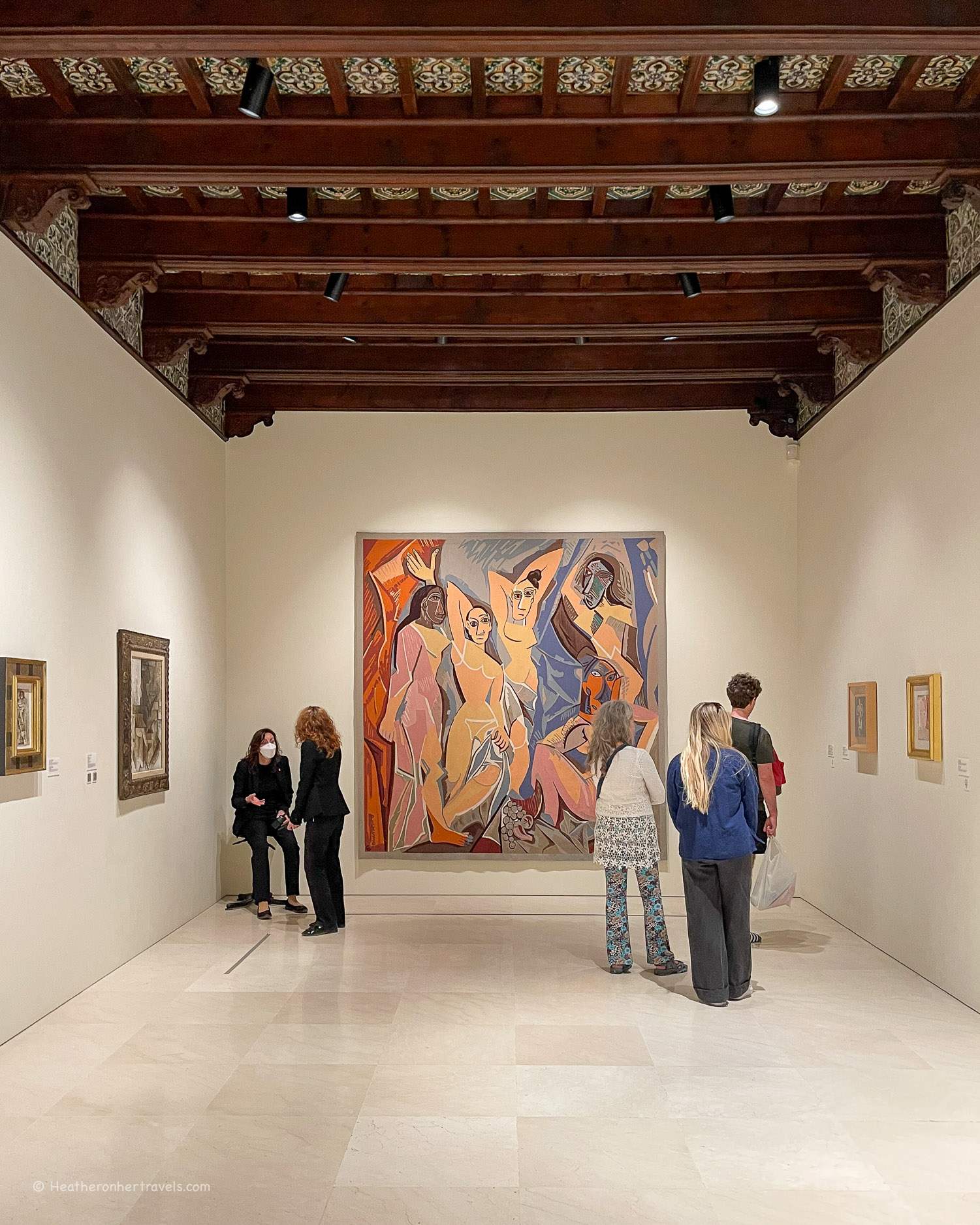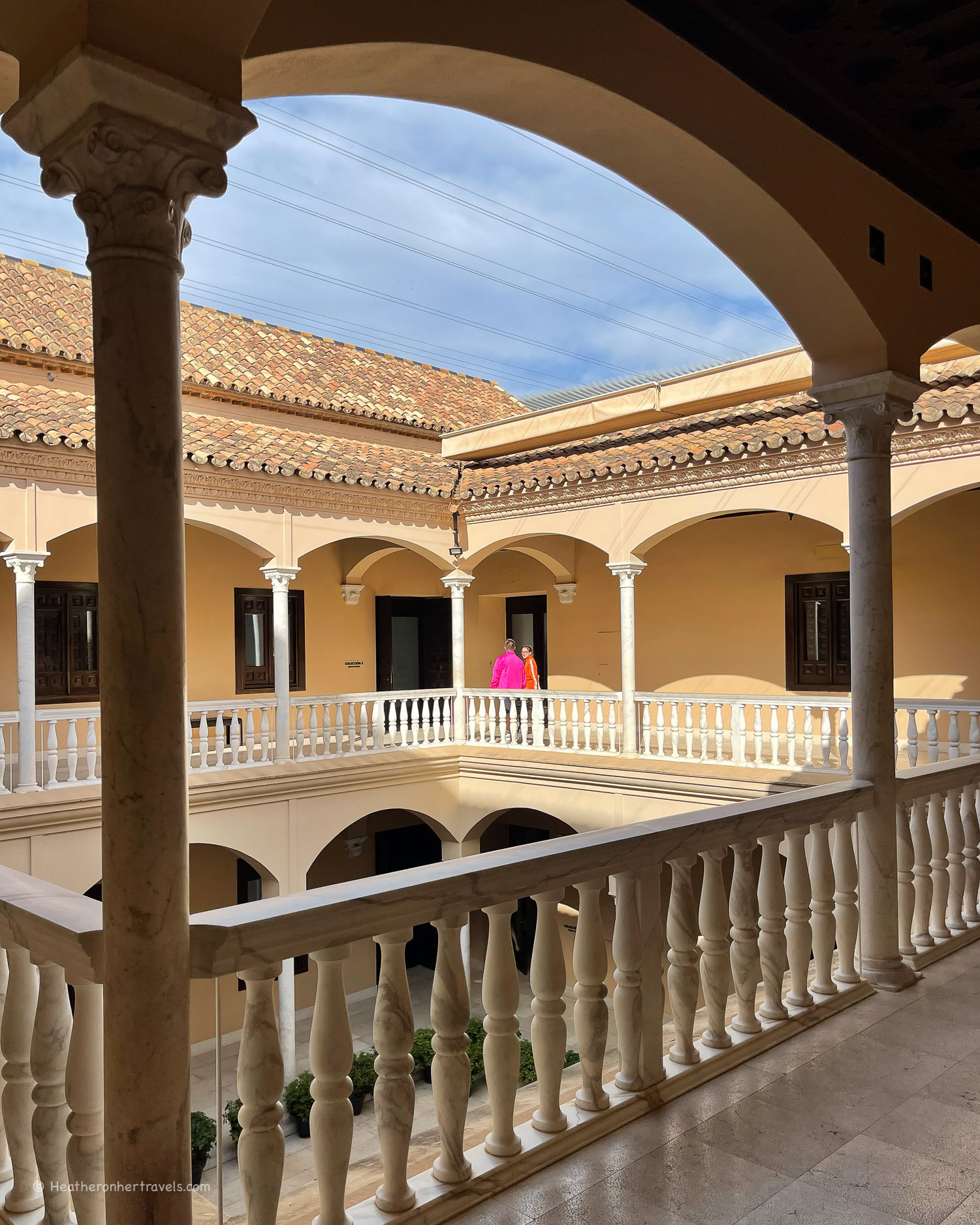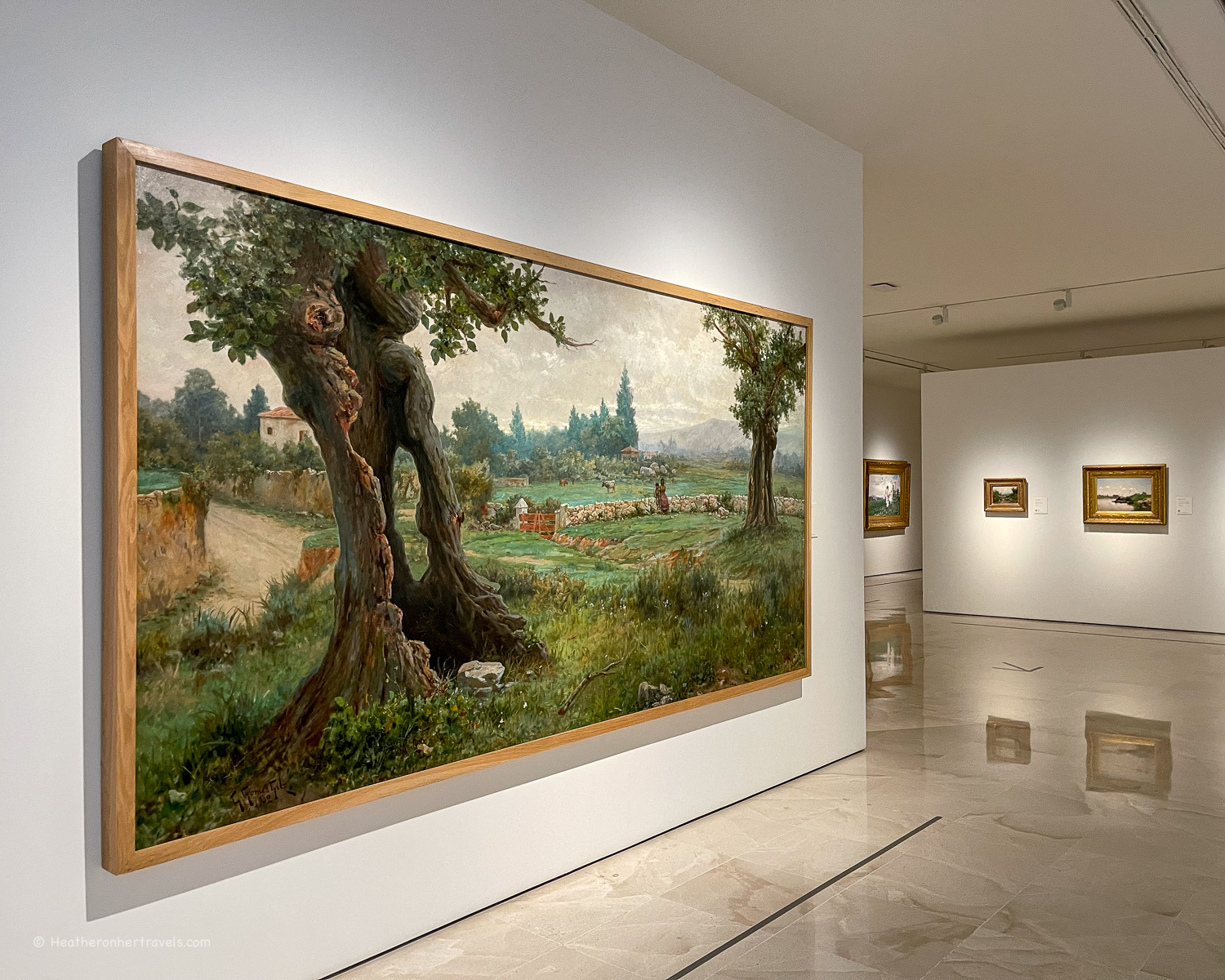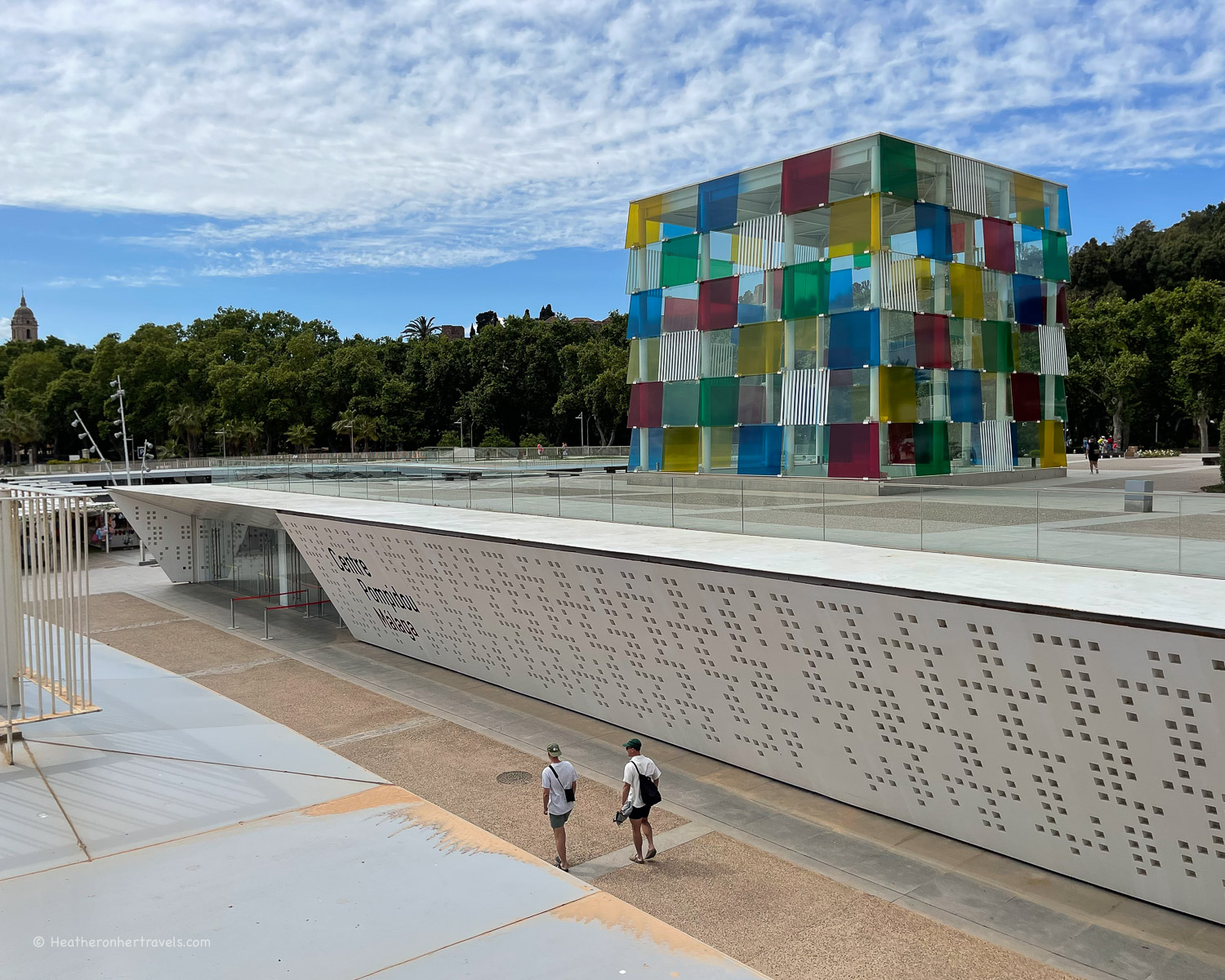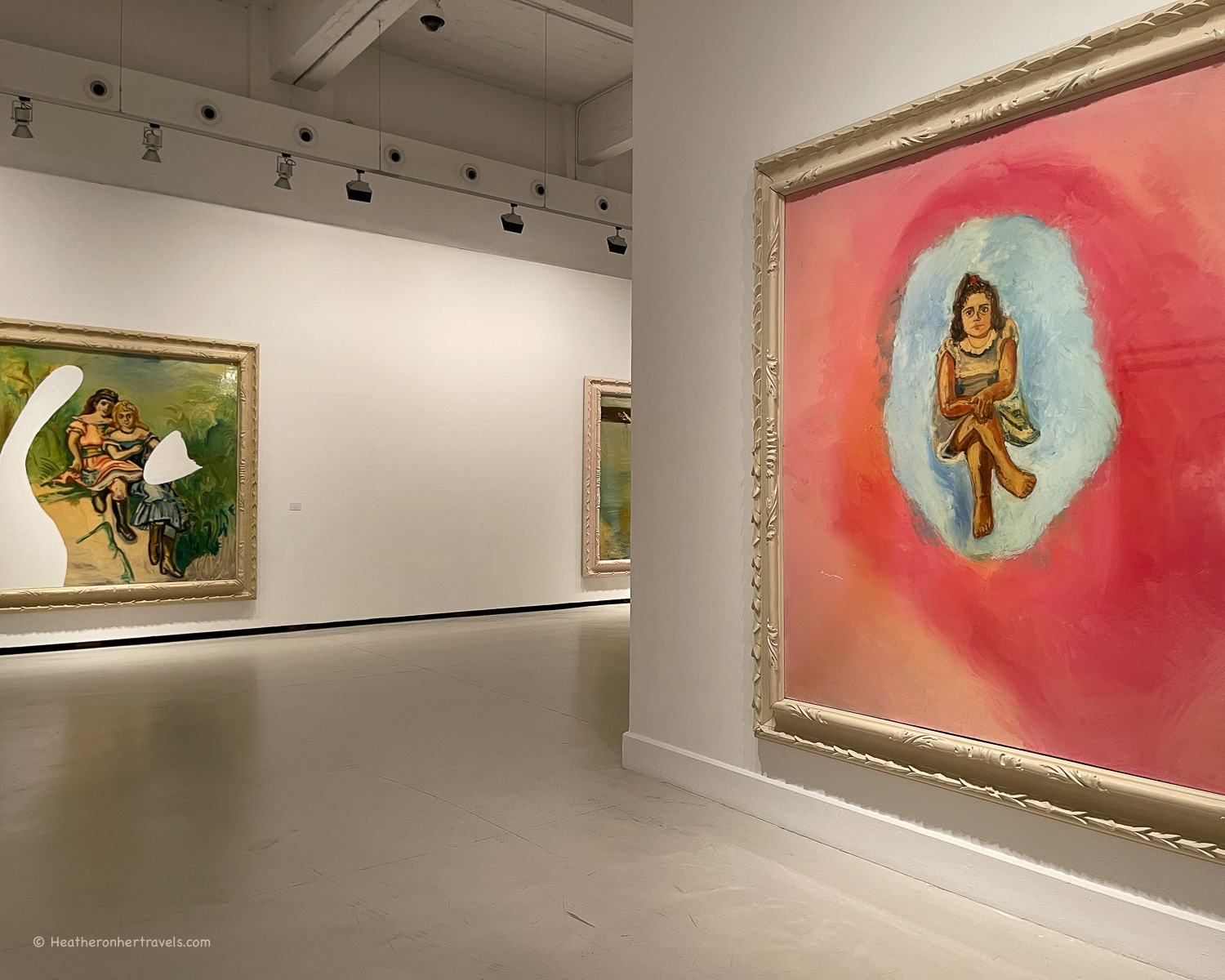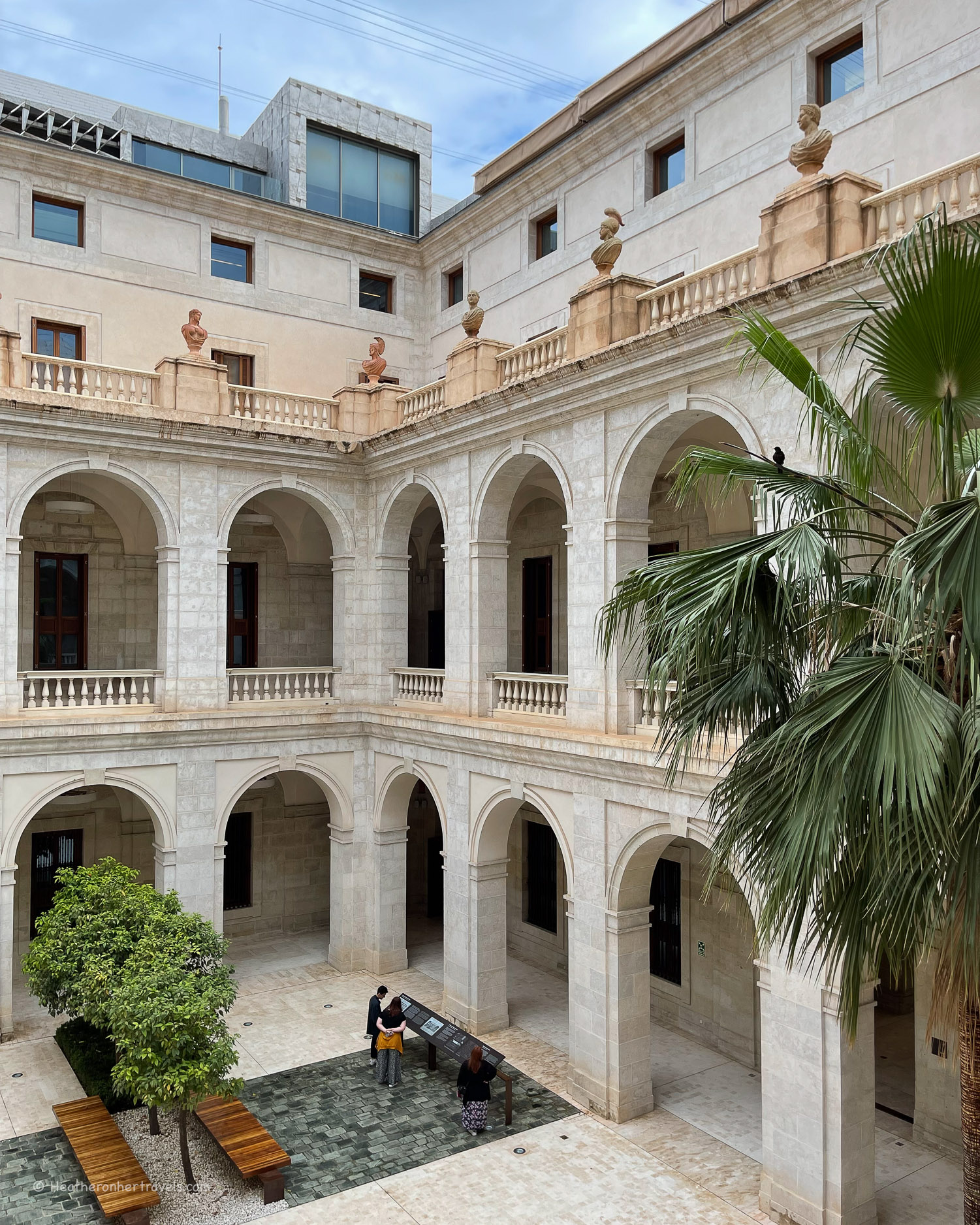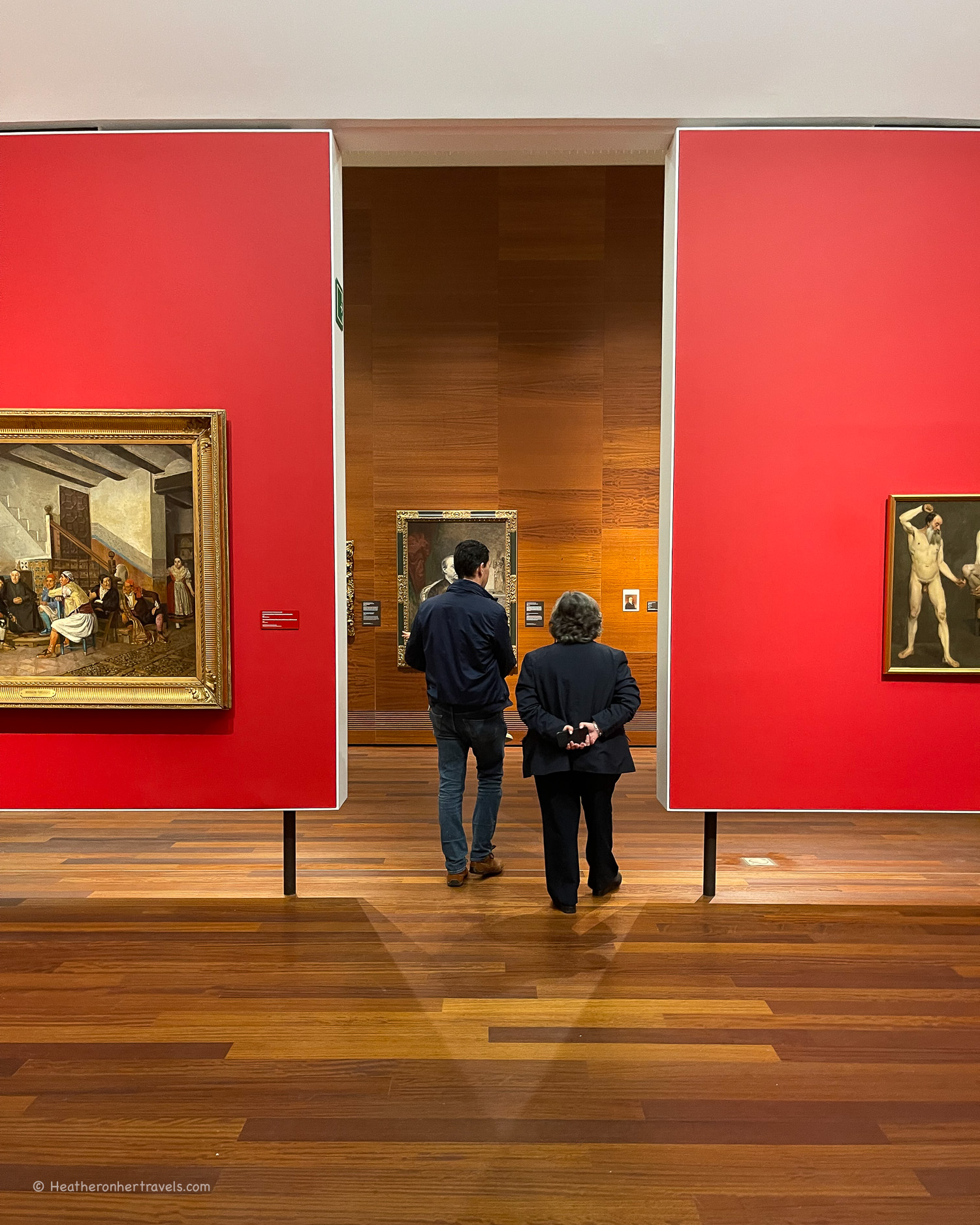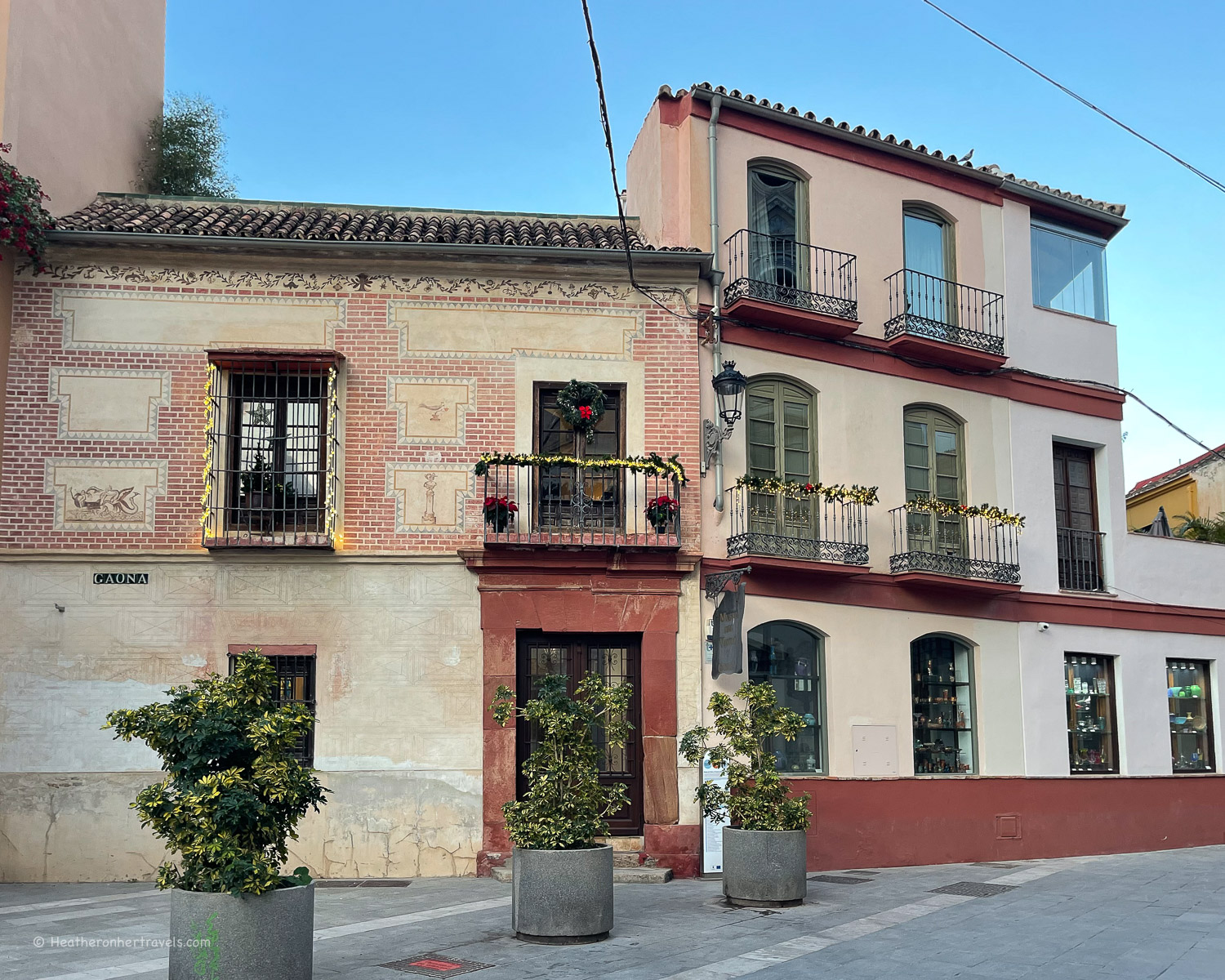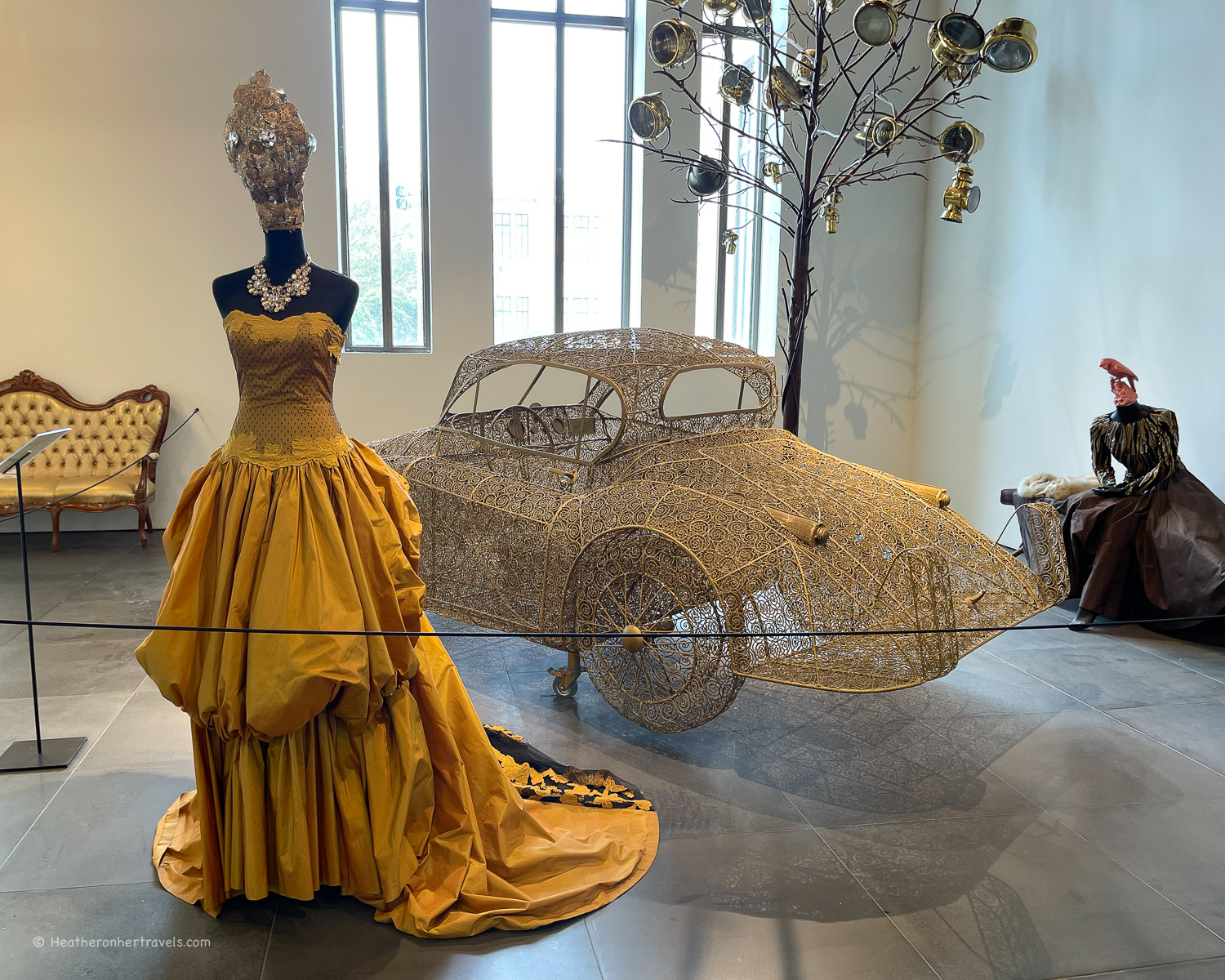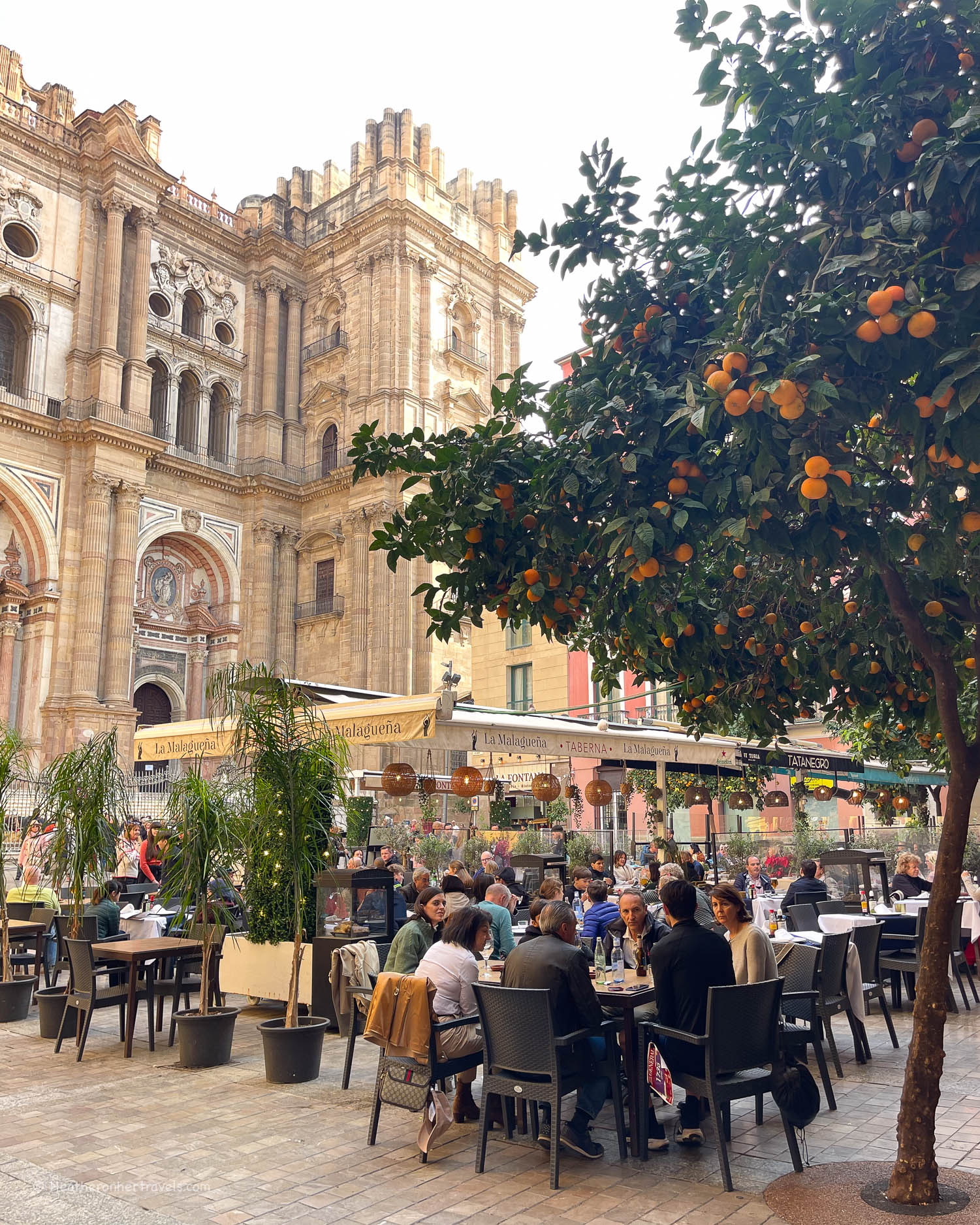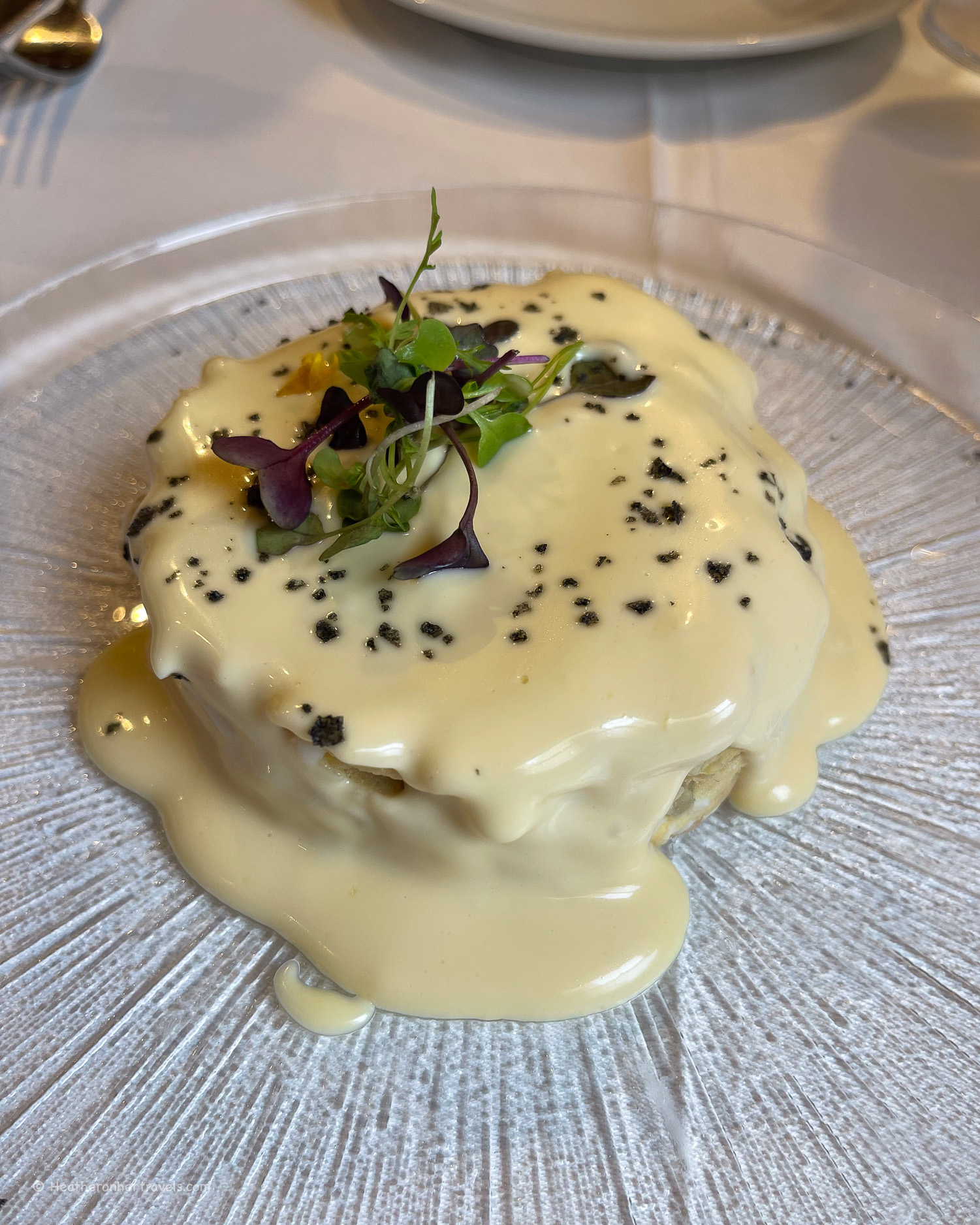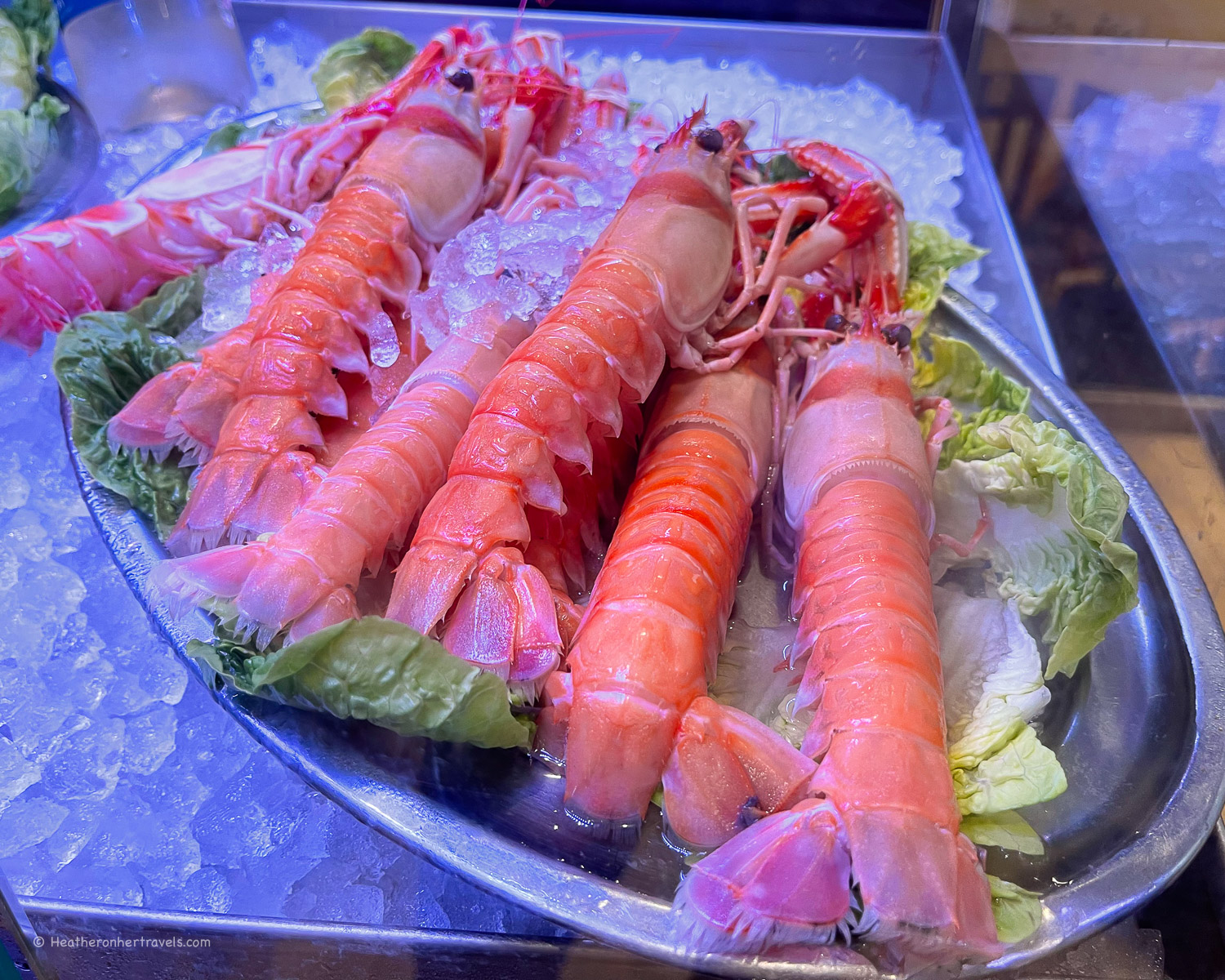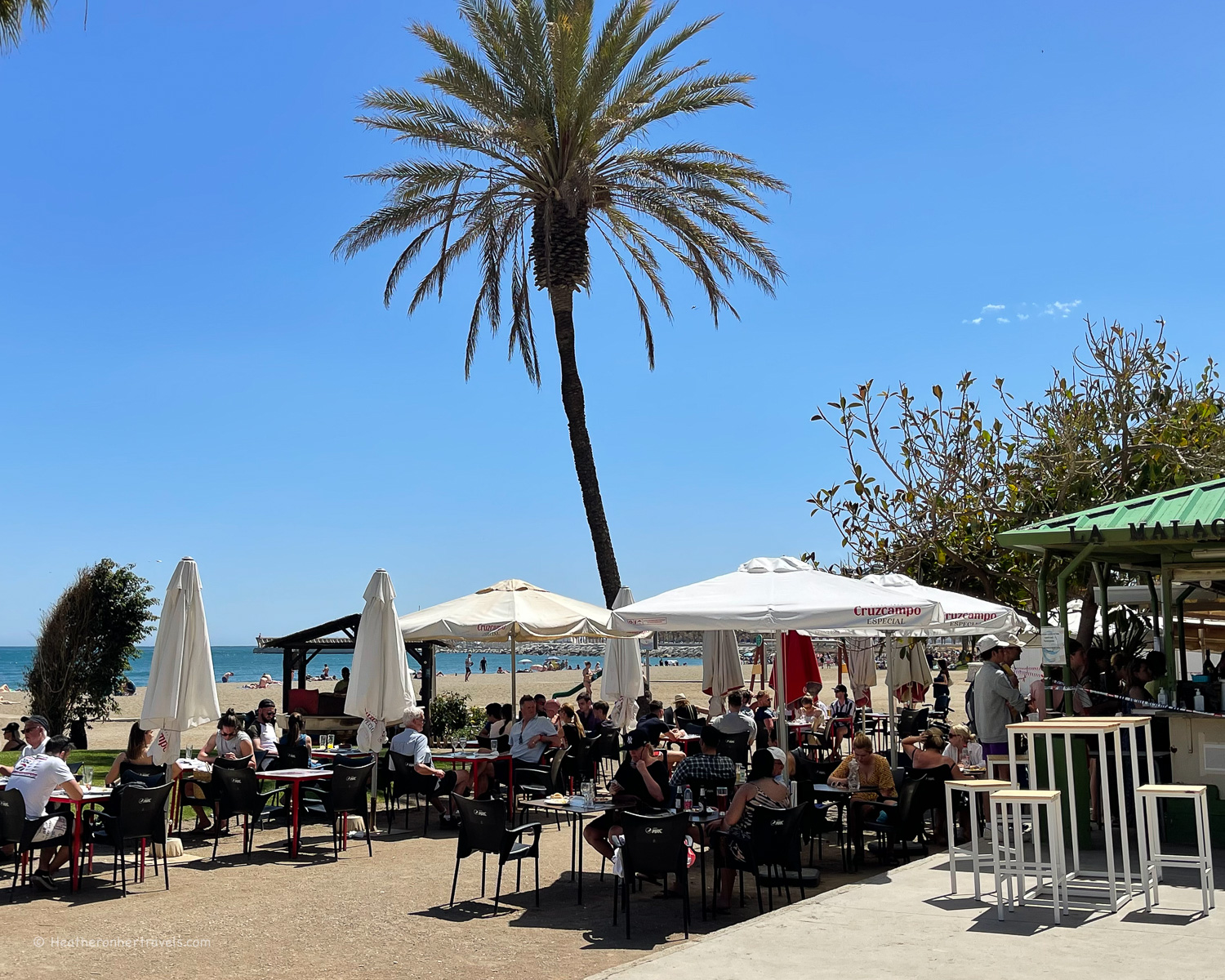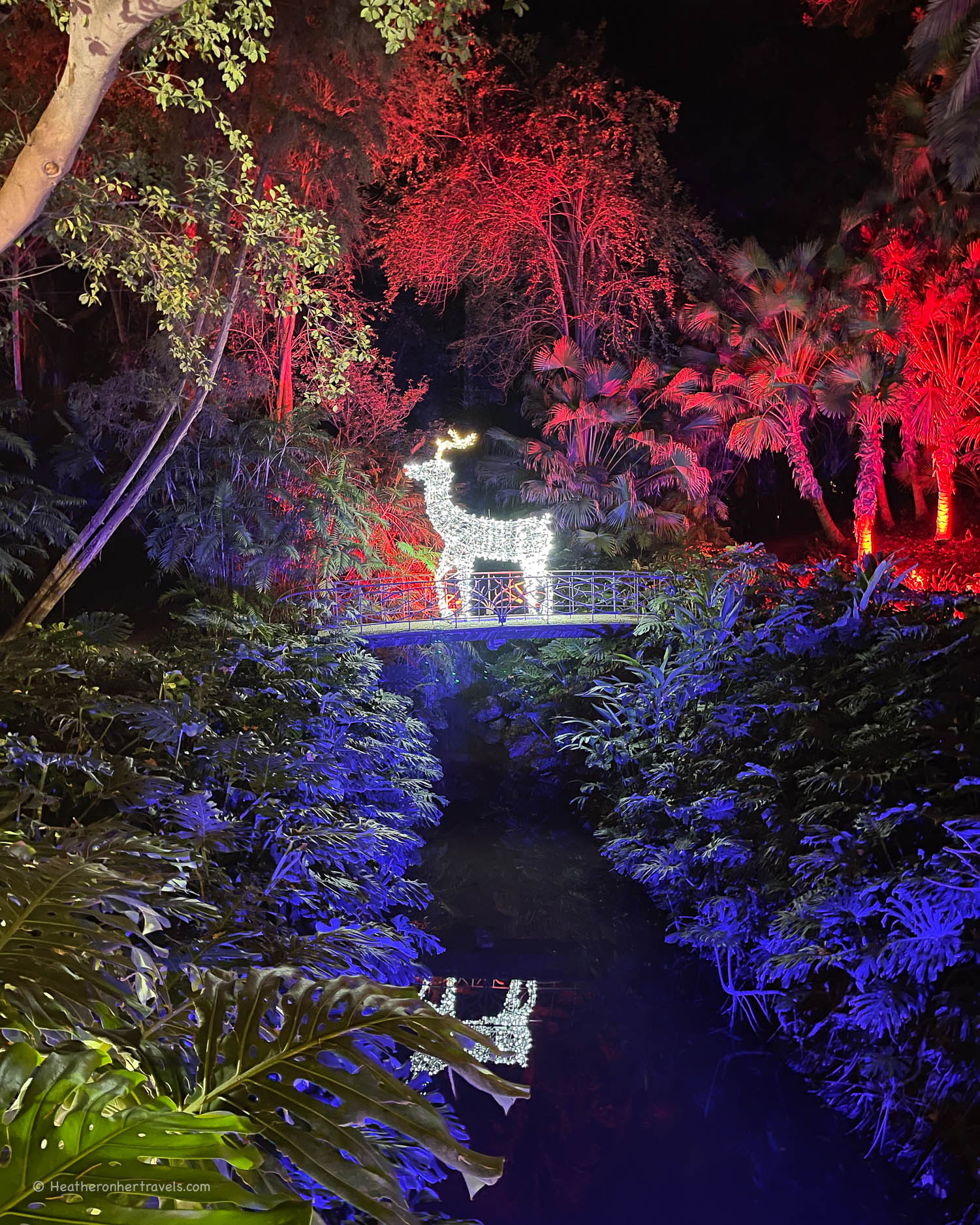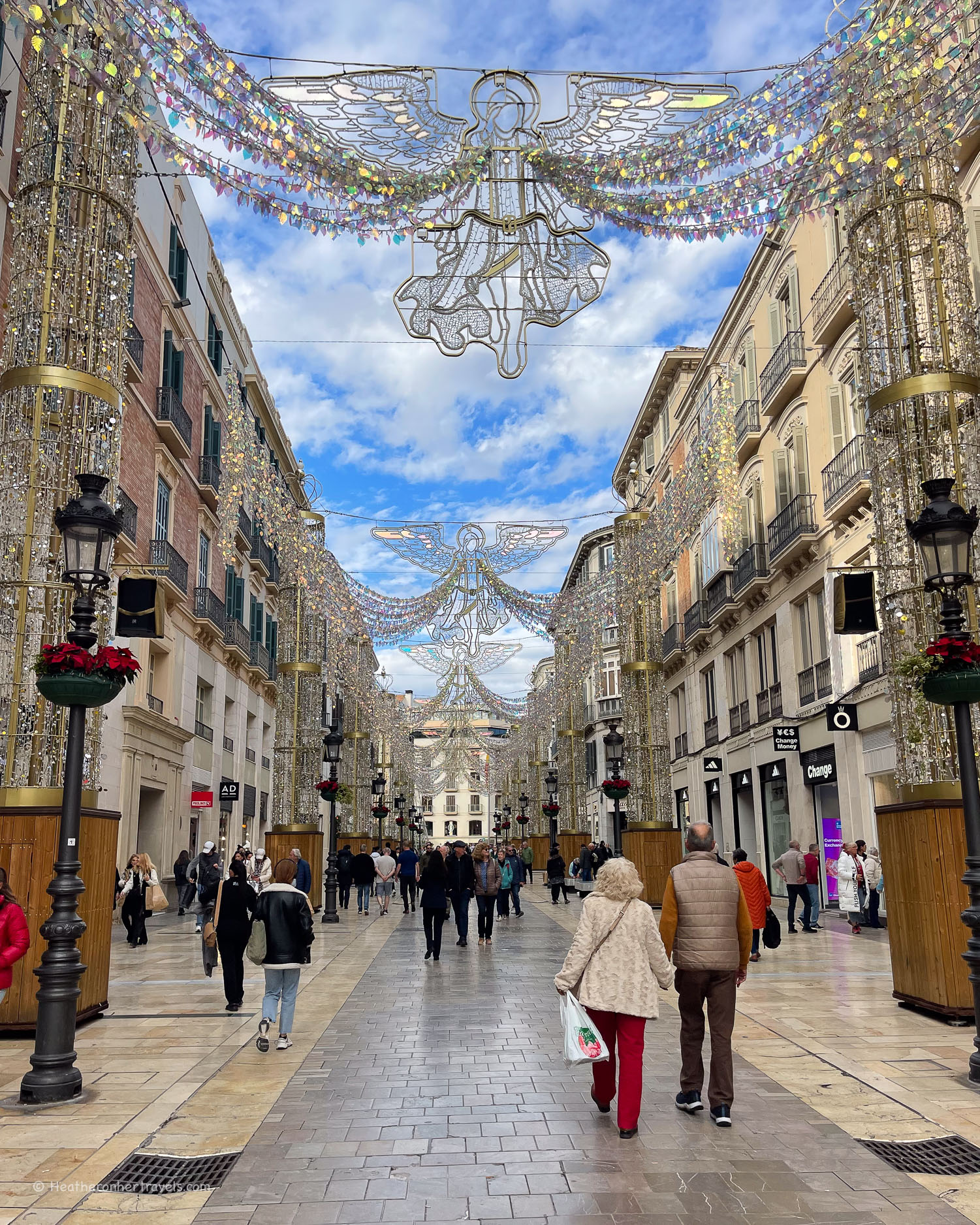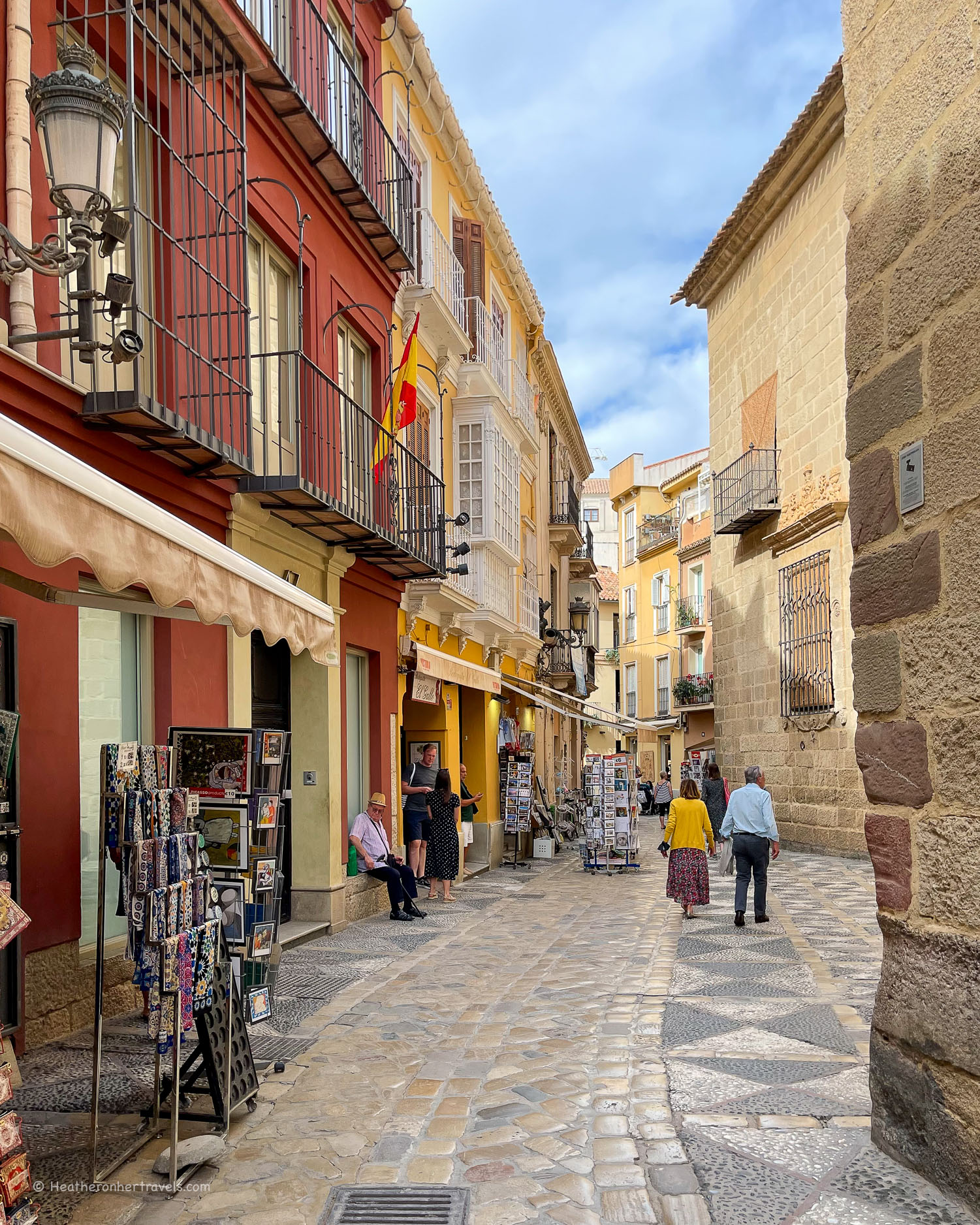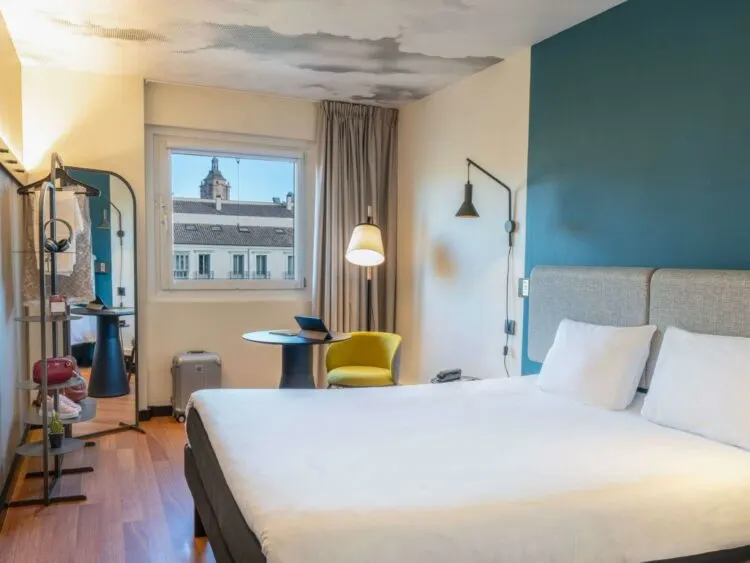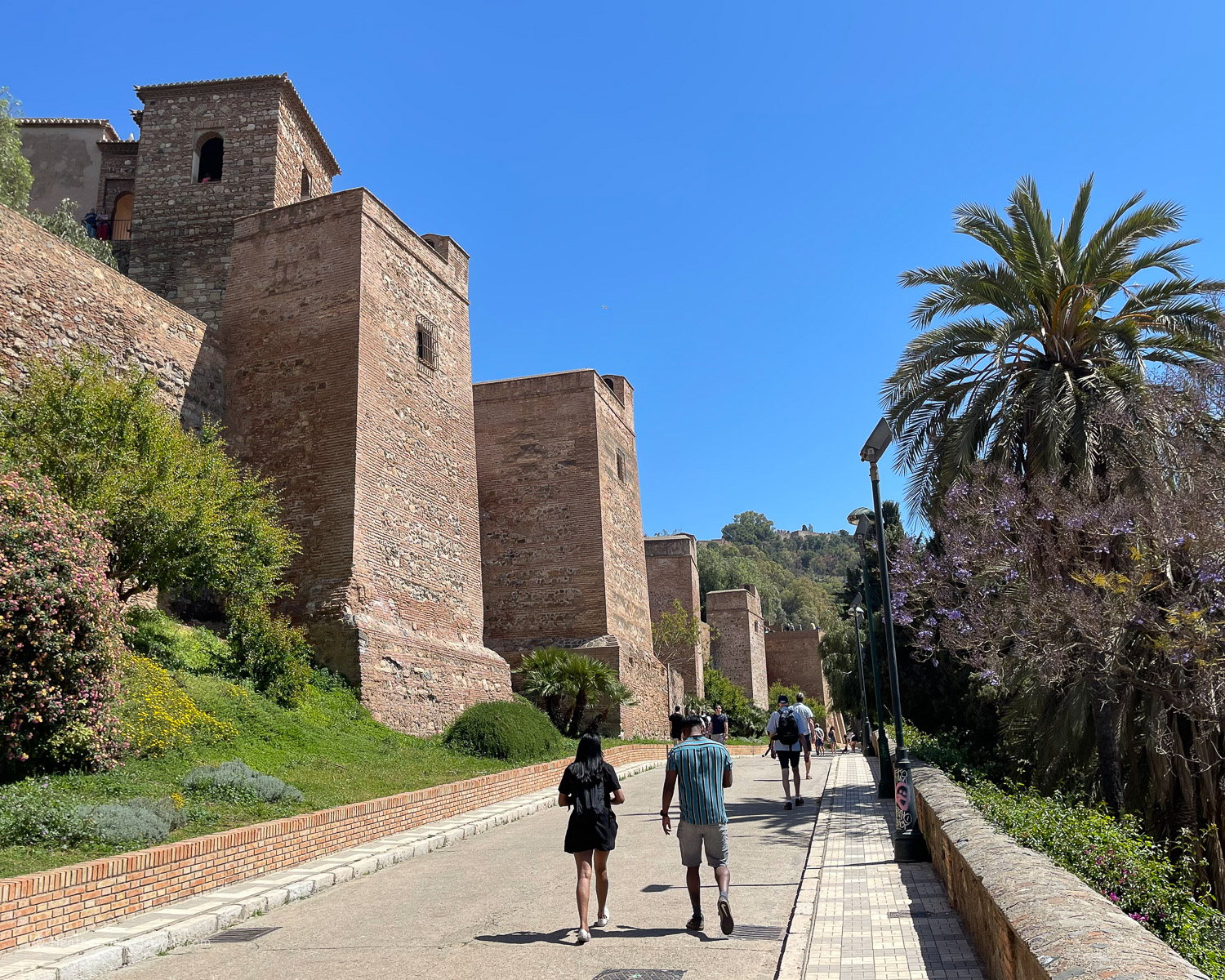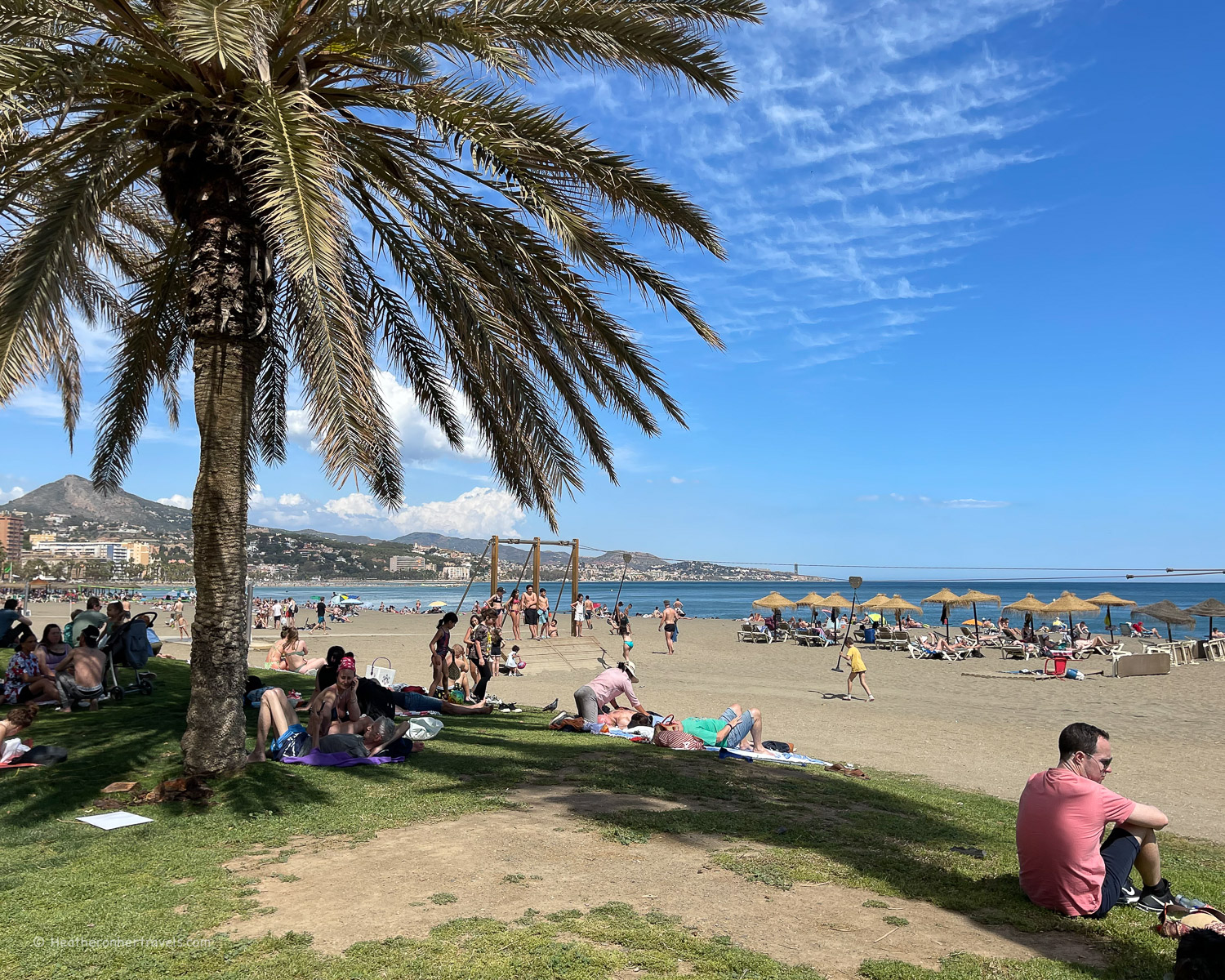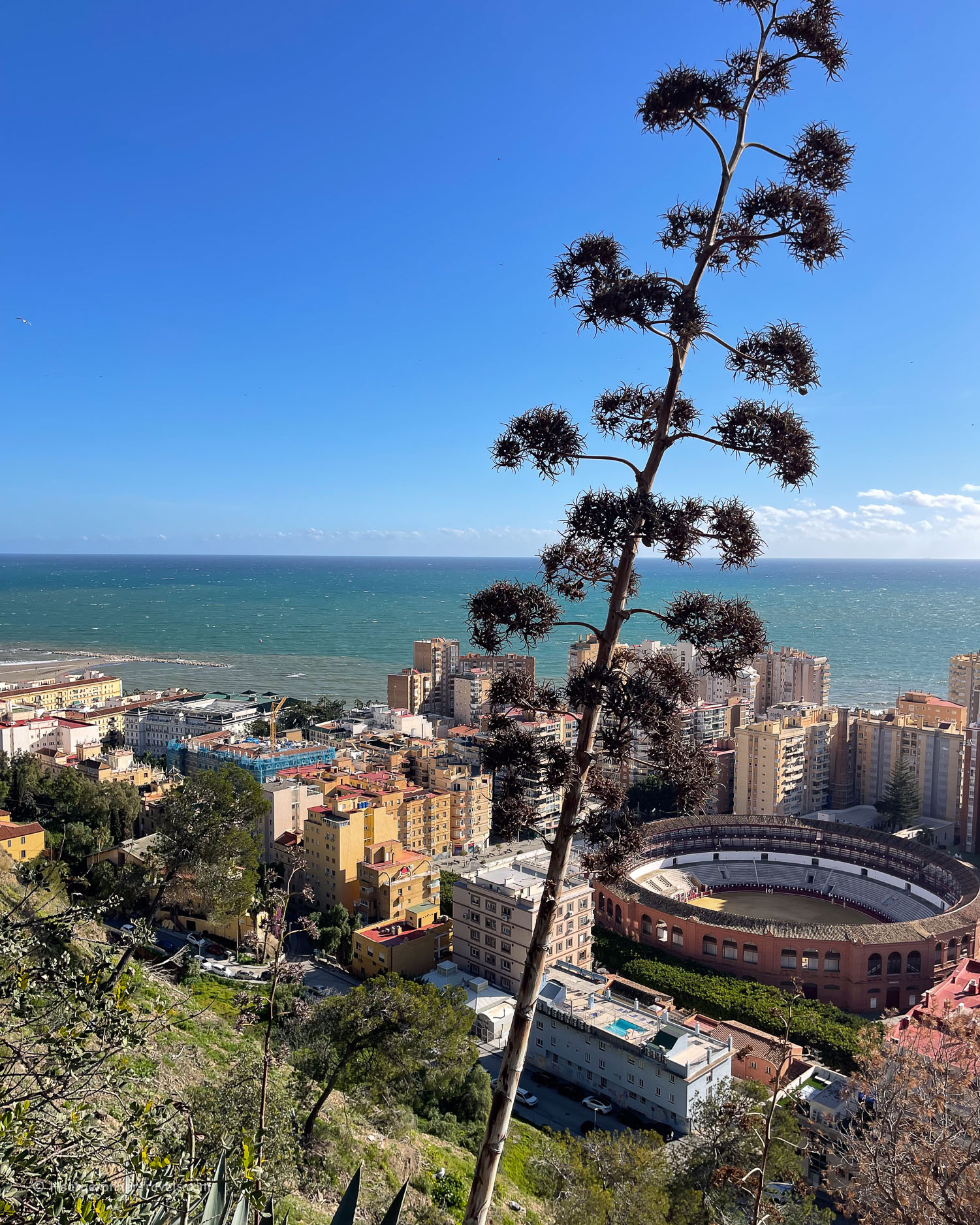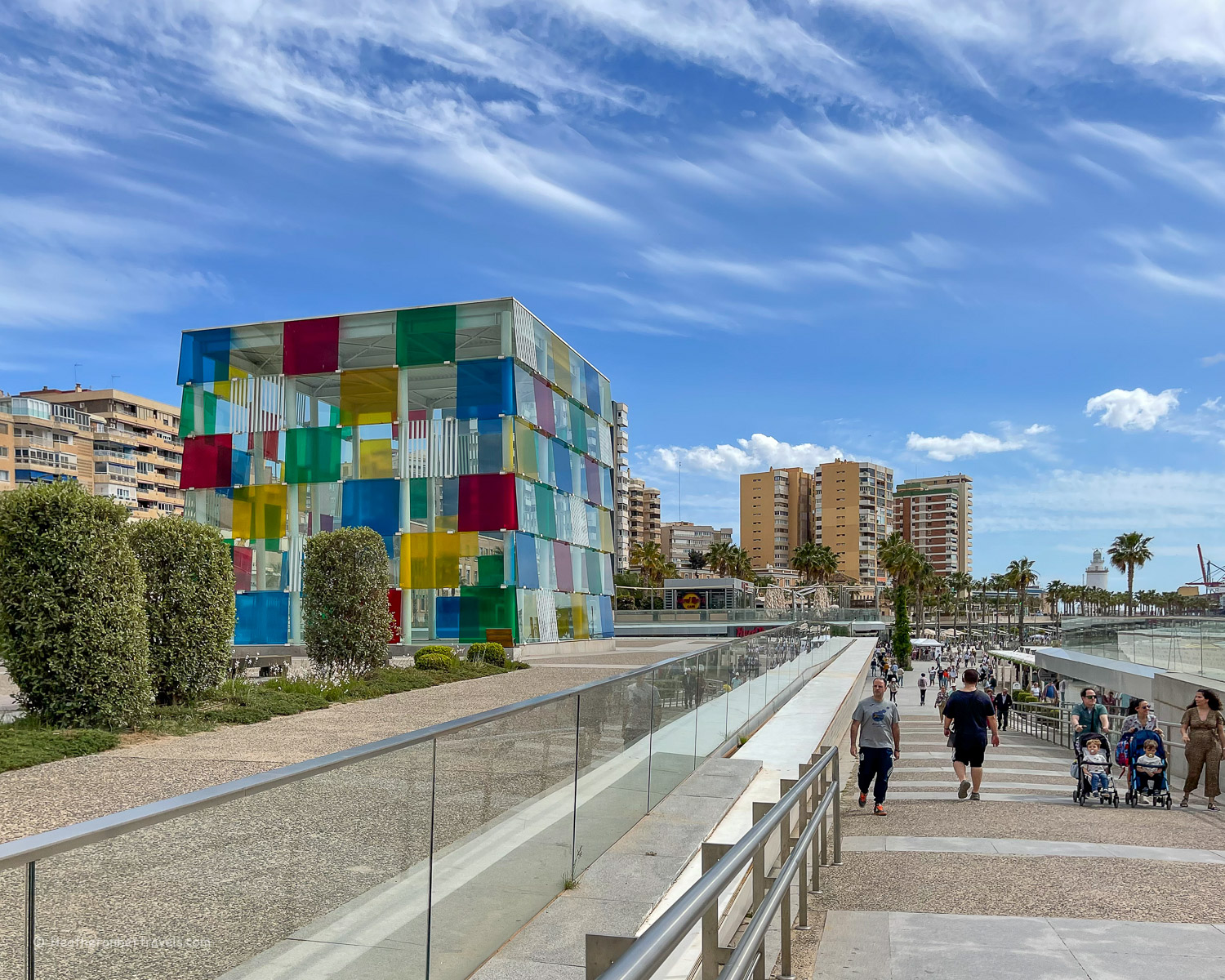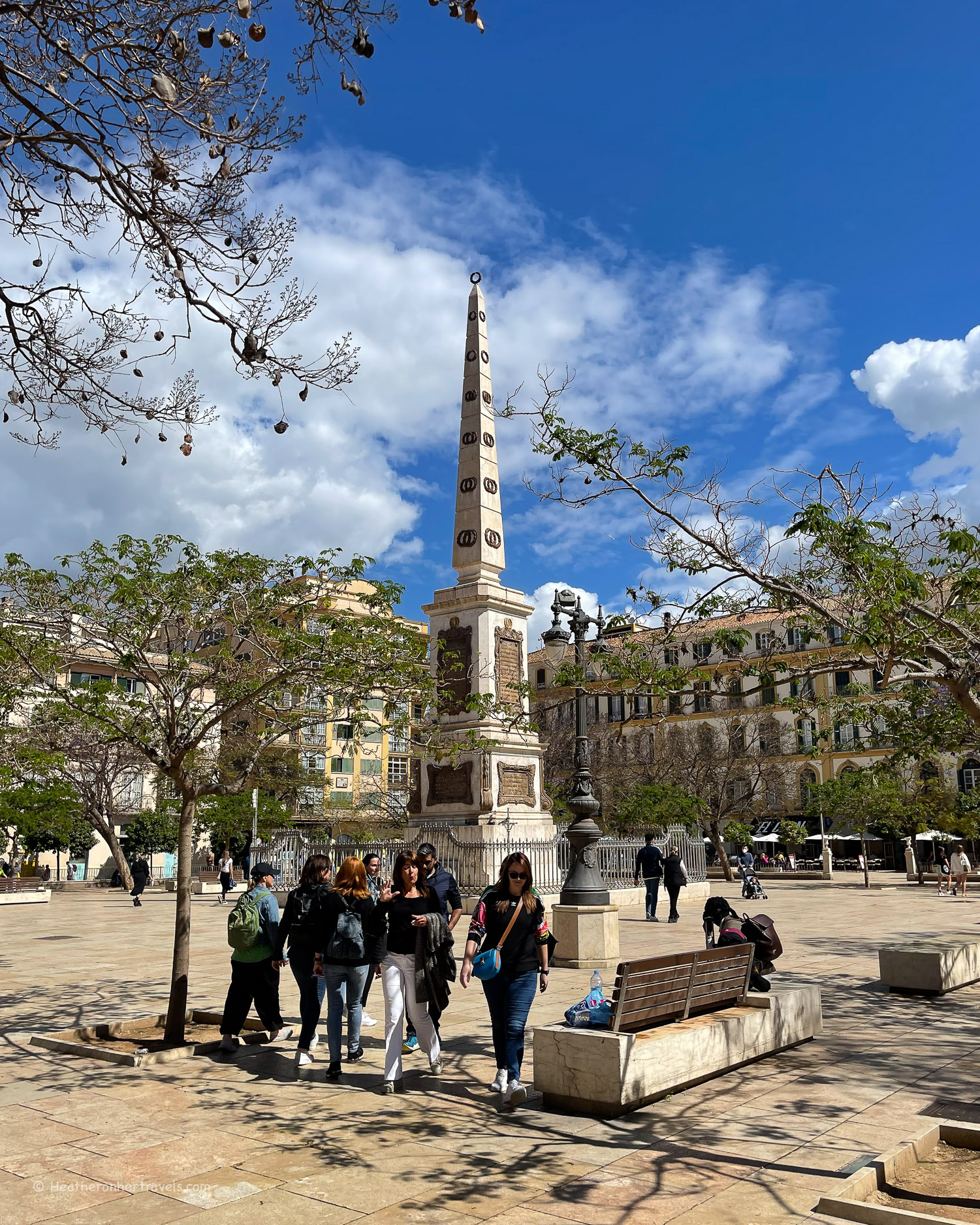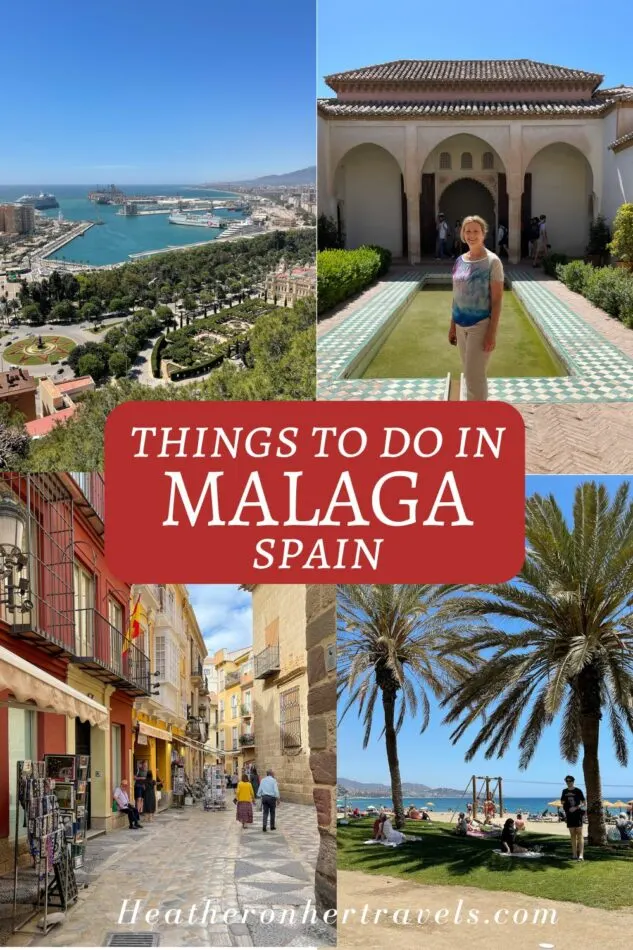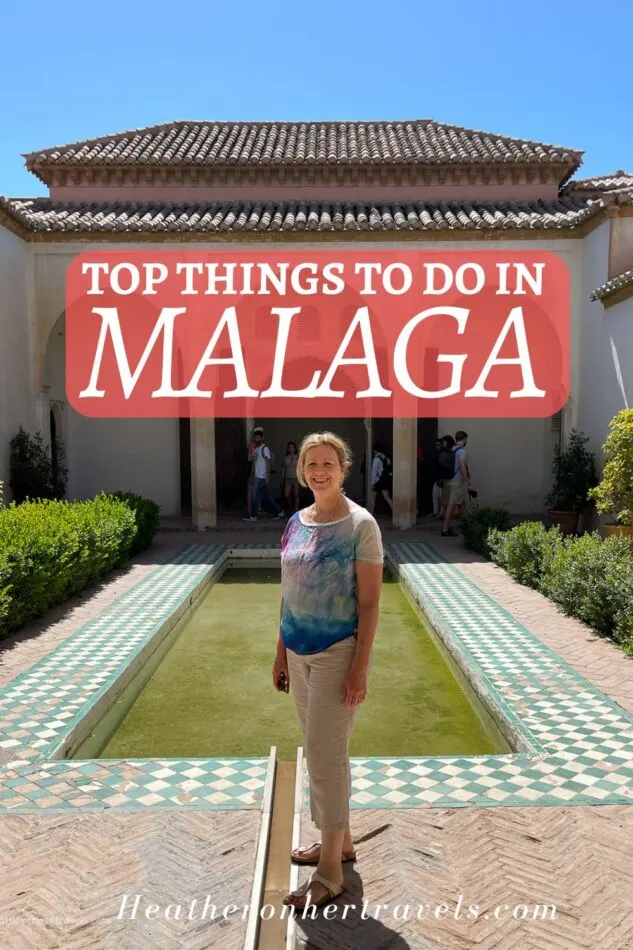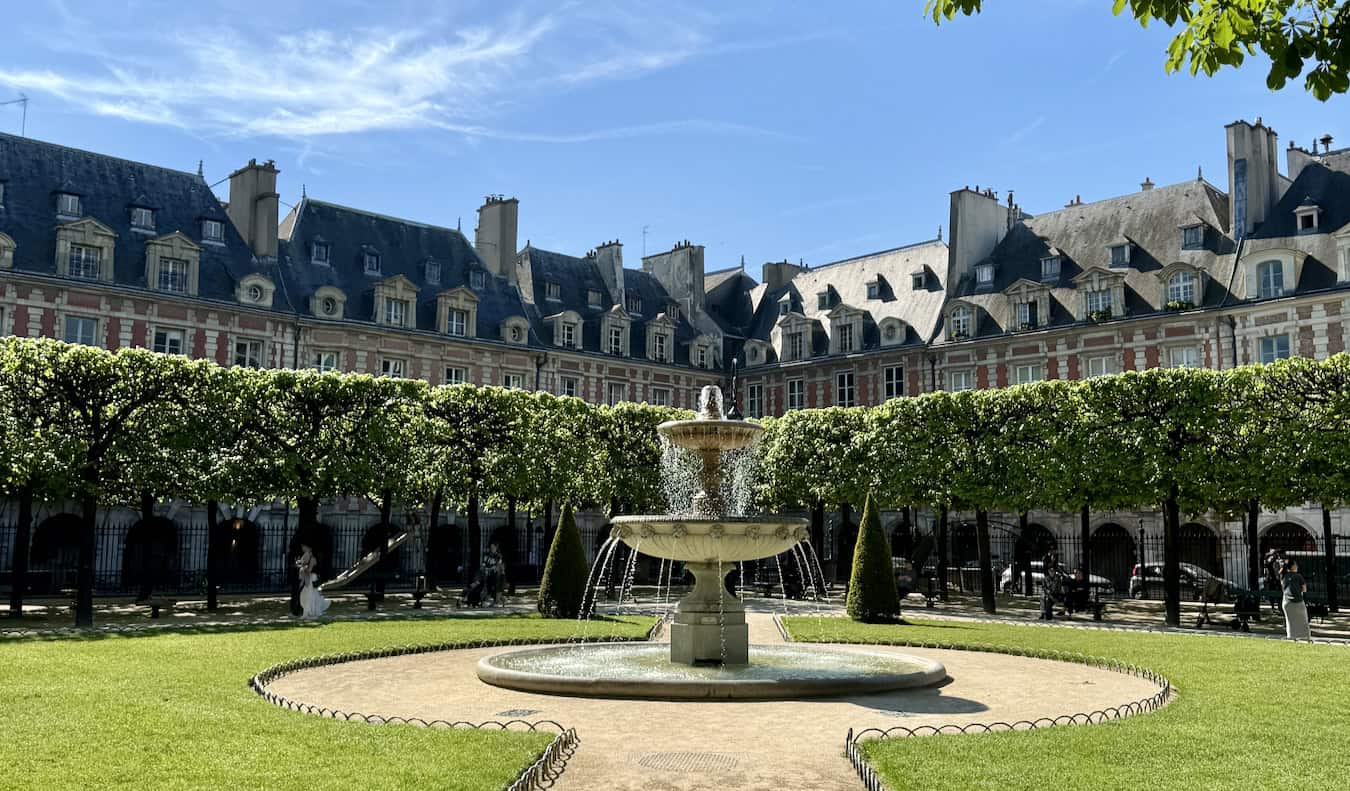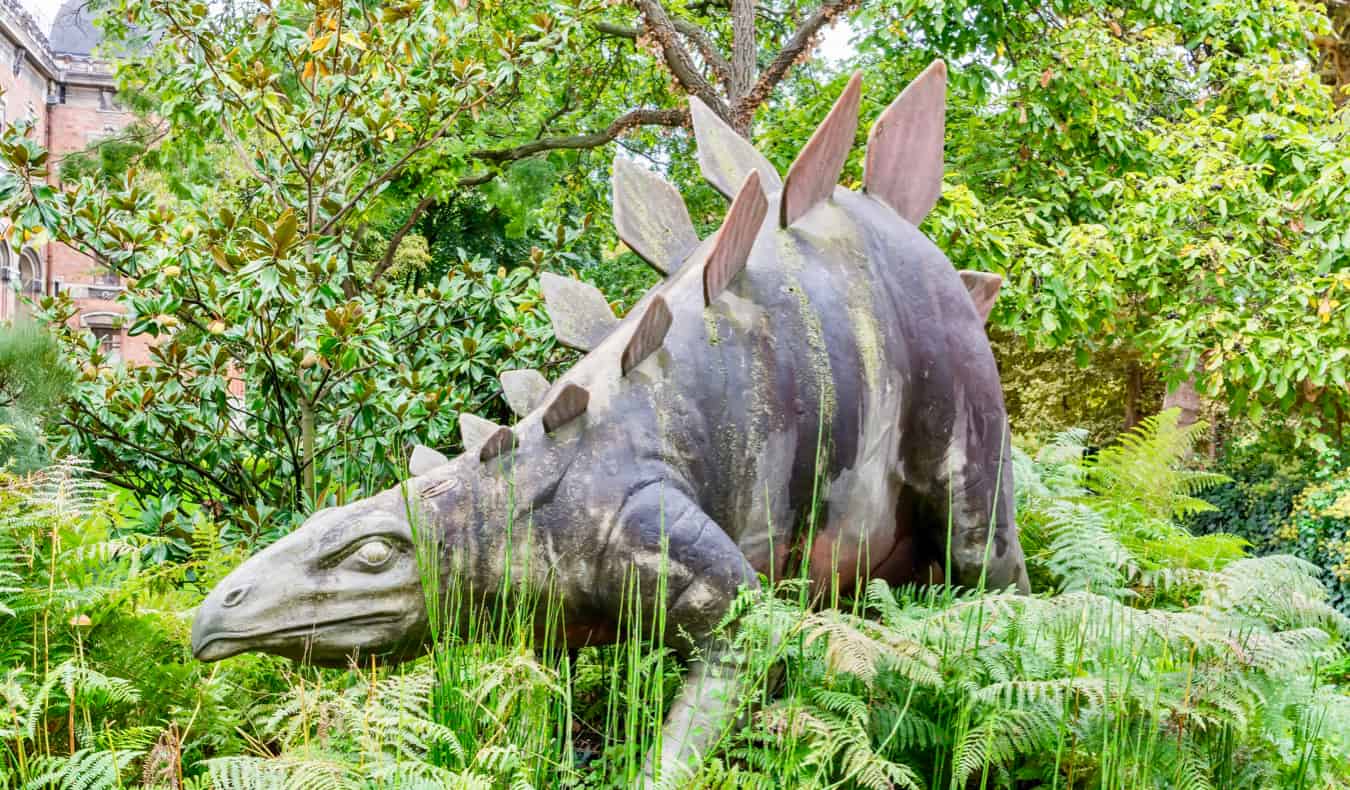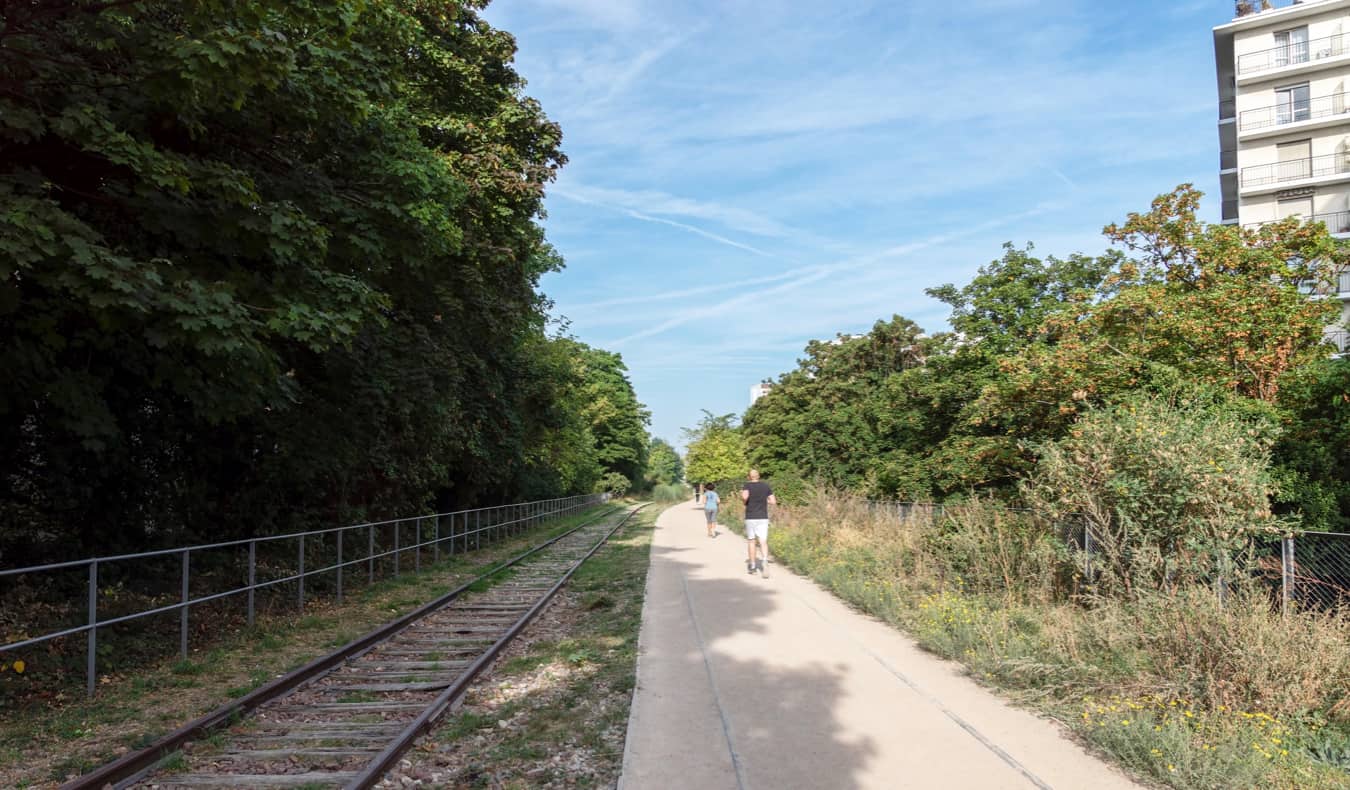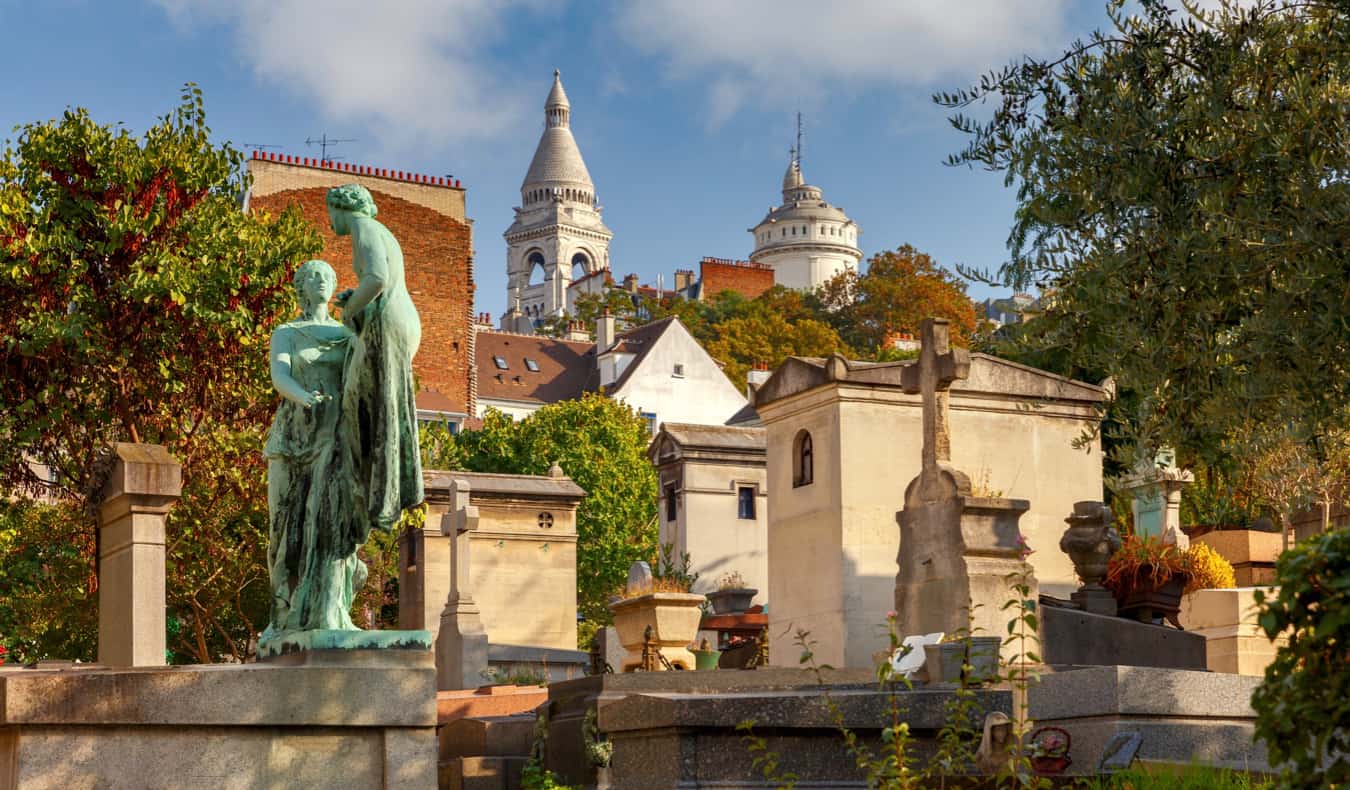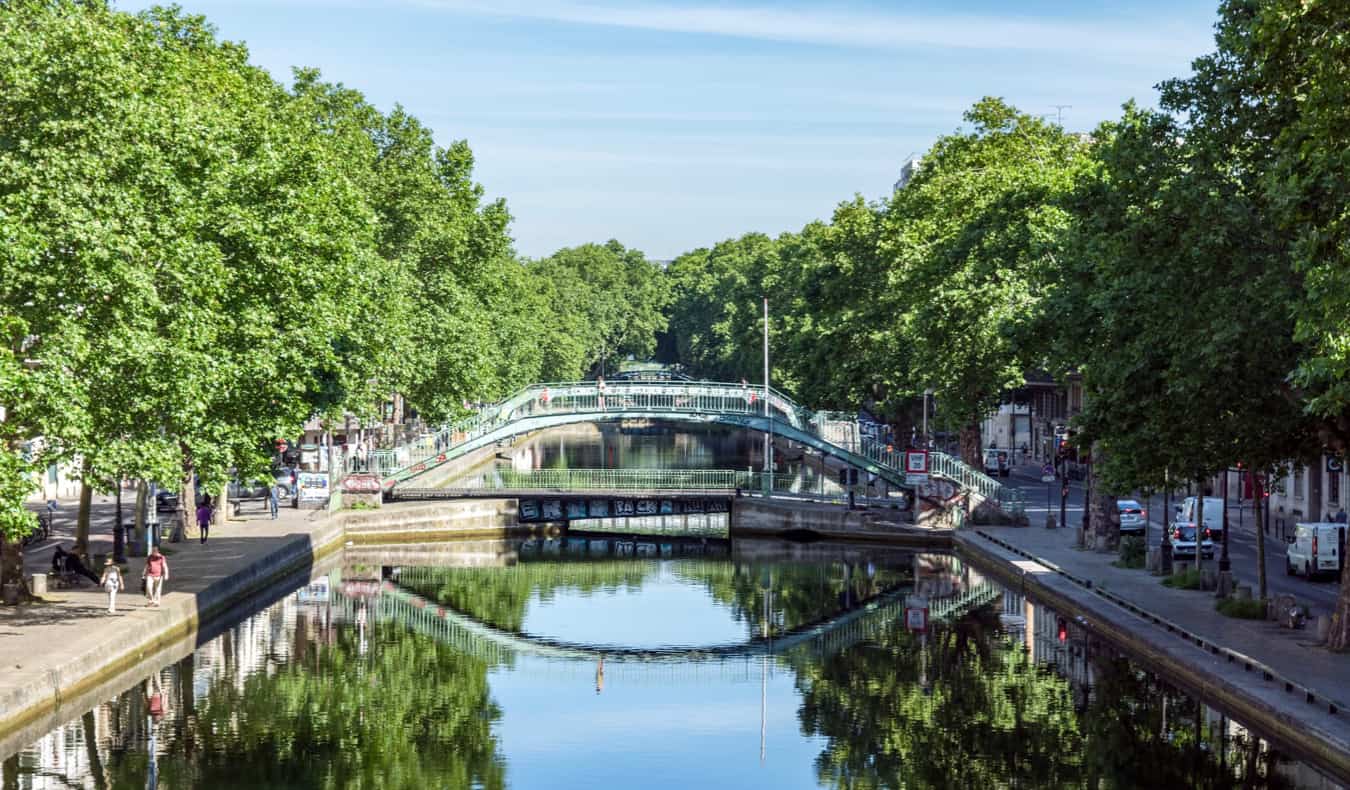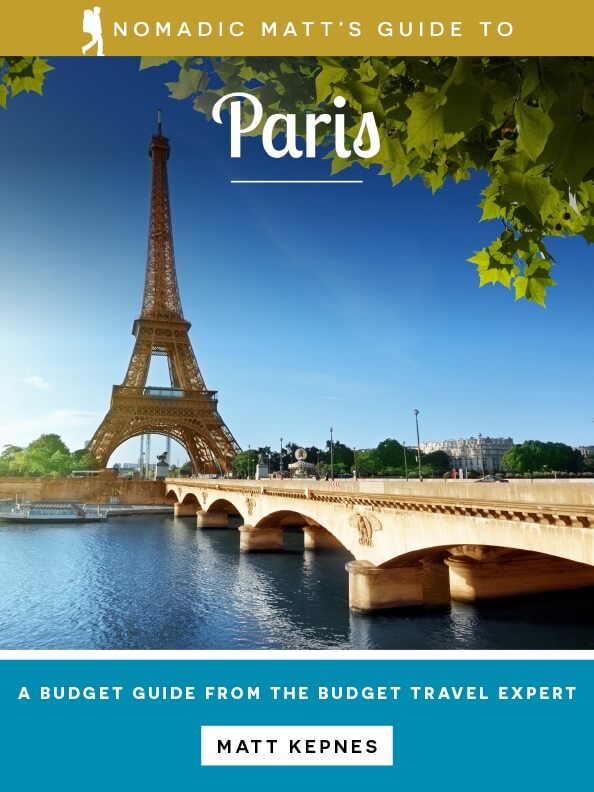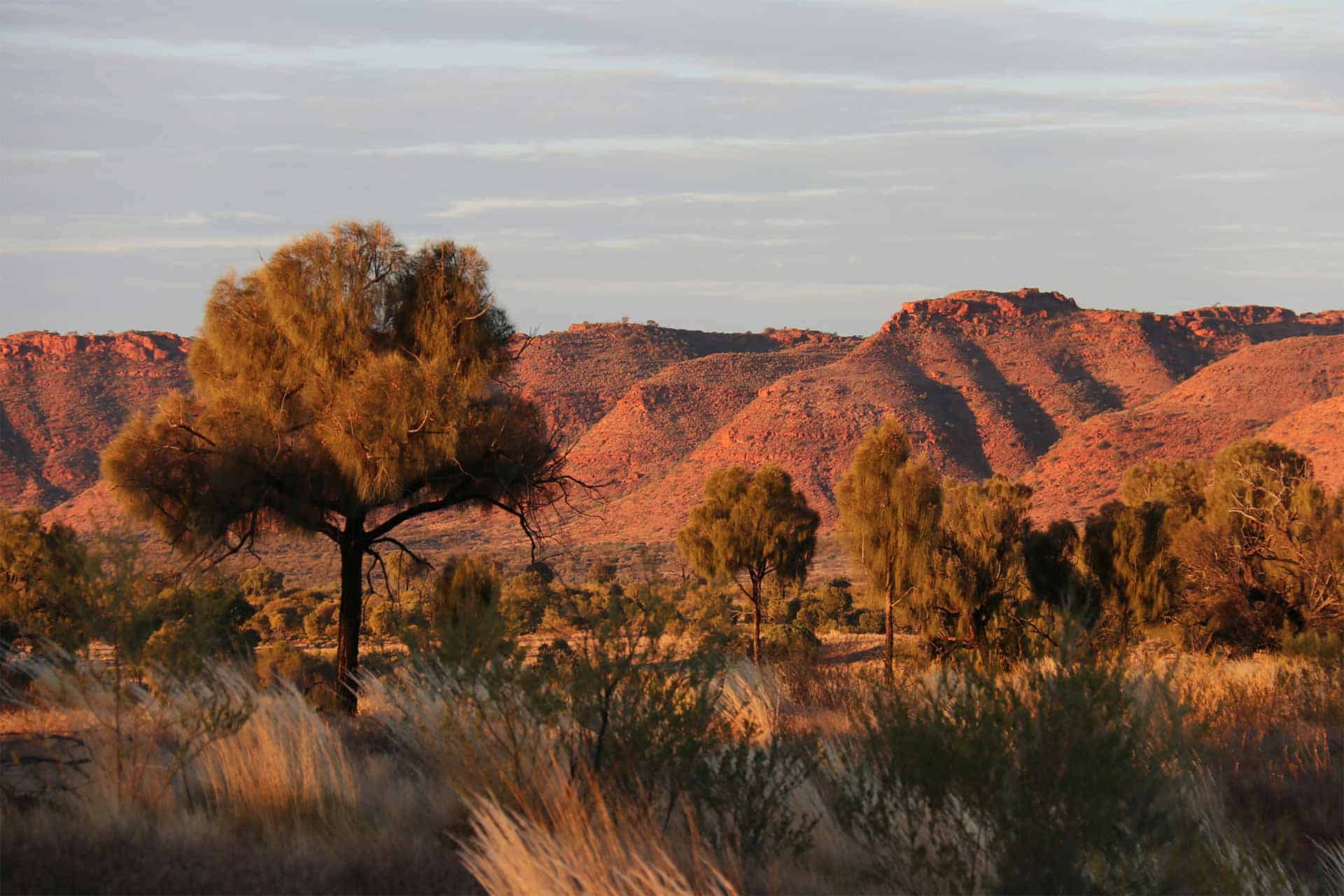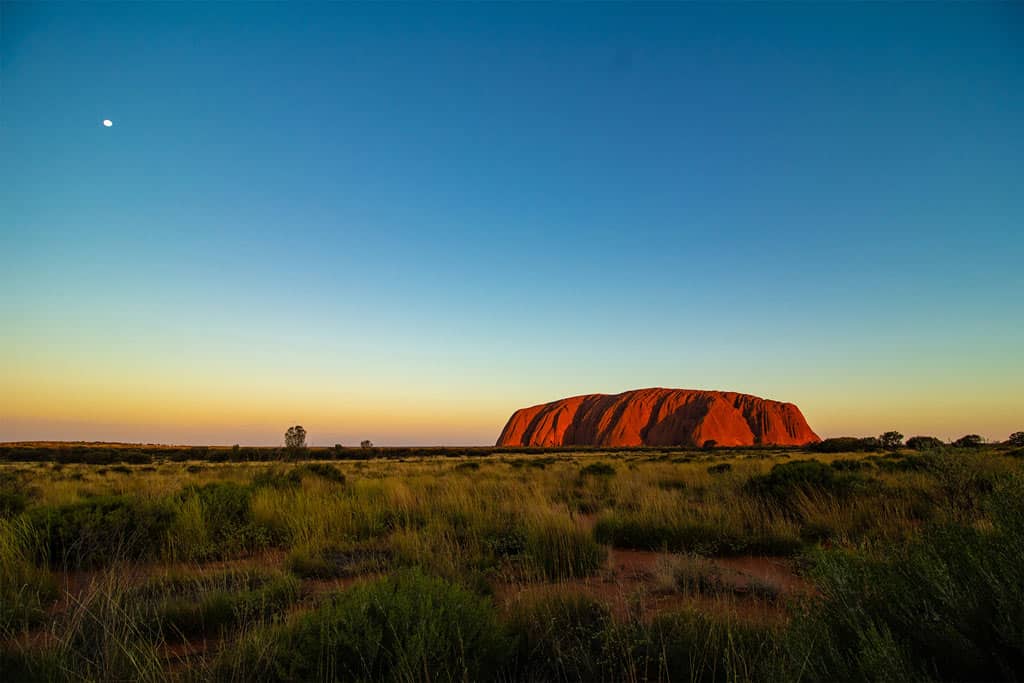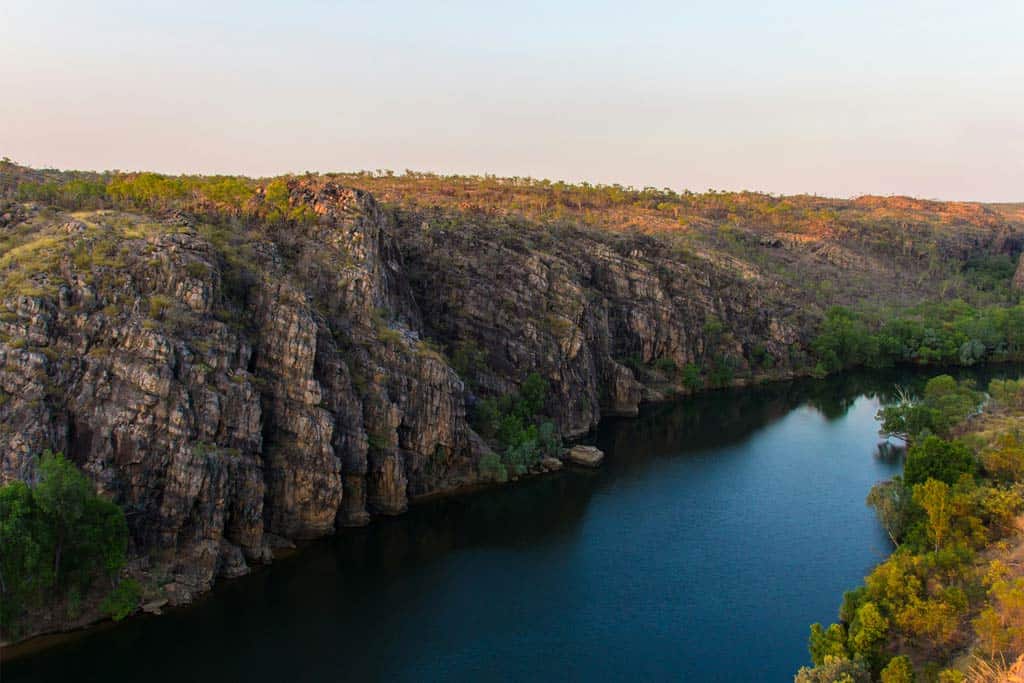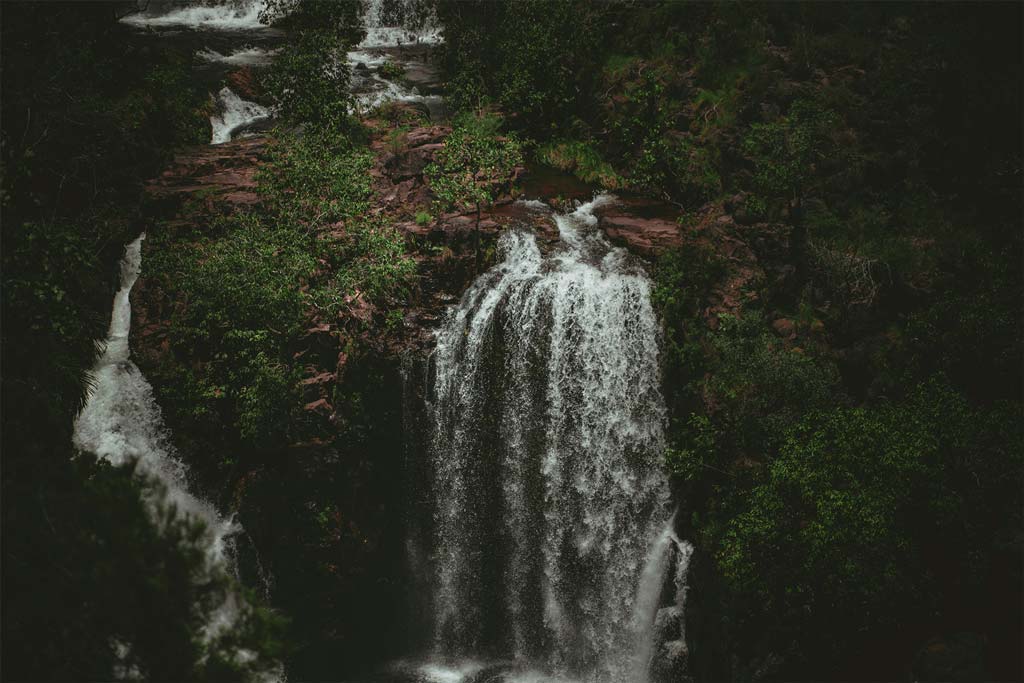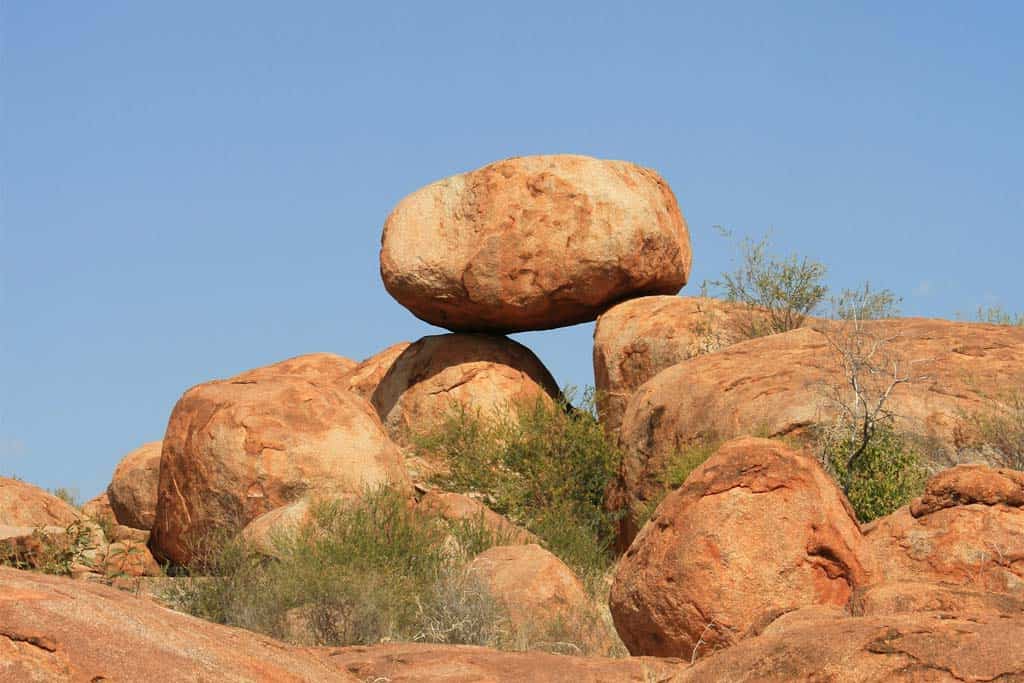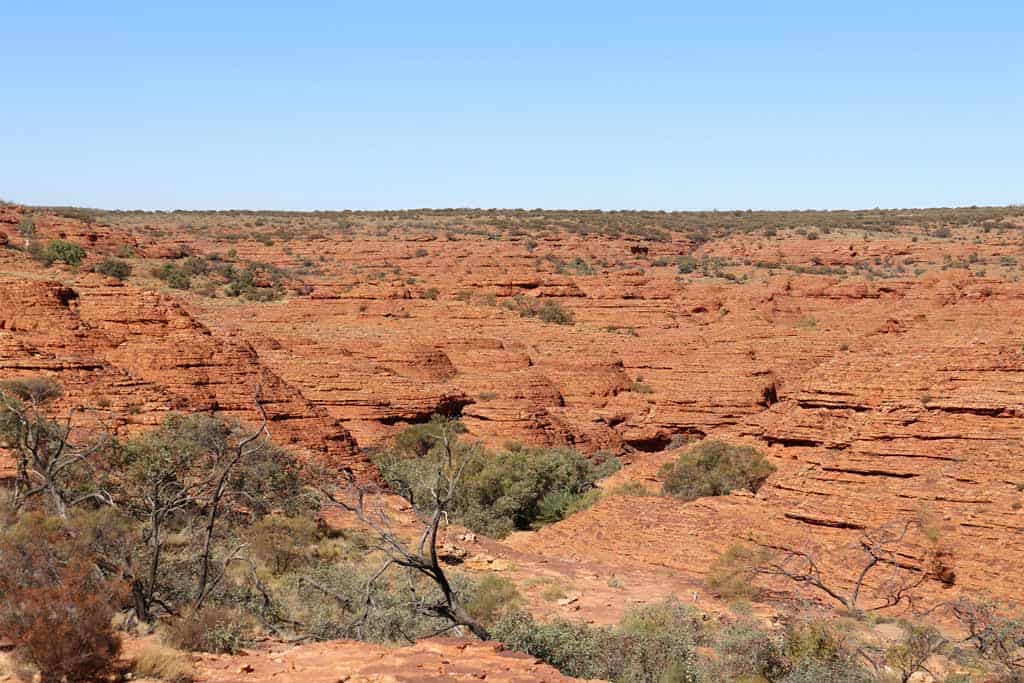Most travellers think of Piraeus as the main port of Athens, with ferries plying back and forth to the Greek islands, or cruise ships visitors taking a quick tour of the Acropolis. Once described as gritty and rundown, Piraeus has smartened up in recent years, with seafood restaurants, bustling harbours, cultural highlights and stylish hangouts that may tempt you to stay longer.

We’ve combined the top things to do in Piraeus into a 1 day itinerary, that can be walked in a day. It’s ideal for cruise visitors or anyone with some time to spare between ferries. But our itinerary can easily be extended if you want to slow down and explore Piraeus over a couple of days.
This article may contain affiliate links that provide commission on purchases you make at no extra cost to you. As an Amazon Associate I earn from qualifying purchases.
Where is Piraeus?
Piraeus is the port city closest to Athens, located 12km to the south-west of Athens. It takes around 30-60 minutes to drive from central Athens and around 60 minutes by bus or train.
Piraeus is also the gateway to the Athenian Riviera, the coastal area south of Athens, which extends through Glyfada and Voulagmieni to the Cape of Sounion.
At the end of this article, you’ll also find an interactive map of all the places to see in Piraeus that we recommend in this article. We also have a FREE downloadable 1 page guide to accompany this article, for you to follow on your mobile or print before you visit.

Top 10 things to do in Piraeus
If you only have one day, here’s a quick overview of the top things to see in Piraeus.
- Admire the glass roofed 1920s station and visit the delightful Electric Railway Museum (free)
- Wander the atmospheric streets of the Old Market area, with traditional food shops like Mandragoras
- Go shopping around Sotiros Diros – we loved the Greek made natural body creams at Laouta
- Relax in an outdoor cafe on Paleologou overlooking the tree shaded Terpsithius Square
- Explore the Archaeological Museum – cool marble discoveries from Ancient Greece
- Walk around the circular port of Pasalimani, admiring the super-yachts in Marina Zea
- Relax on Votsalakia beach, the main beach in Piraeus
- Head to the charming marina of Mikrolimeni for a seafood lunch overlooking the sailing boats
- Climb the Kastella hill for views over sea and city
- Stroll by the Rocks of Piraeus at sunset and dine in the seafood restaurants of Piraiki

Start at the Old Railway Station
Our walk starts at the railway station, built in the 1920s, when the railway was developed between Athens and the port of Piraeus. This is where the Overground Line 1 (green) starts and ends, but if coming on the Line 3 Metro (Blue) you’ll need to come up to street level. Take a moment to admire the elegant glass roof of the train hall and the atmospheric ticket hall.

Electric Railway Museum
Within the station is the small Electric Railway Museum, which is free and staffed by railway enthusiasts. If open it’s well worth a quick look, and you can borrow an English language guide to all the exhibits at the entrance.

We enjoyed a look at an original wooden railway carriage that has been restored, as well as old photos and railway memorabilia, relating to the development of the railway in Athens since the 1920s. Unfortunately, no photos are allowed within the museum, but it’s worth taking a look.
Piraeus Port
Piraeus main port is just across the busy main road from the station. If you haven’t already come from there, you might like to walk up onto the pedestrian bridge by the station, to have a look at the ferries coming and going to various Greek Islands.

Mandragoras – the food shops of Old Piraeus
Make your way a few blocks from the station to the main road of Dim. Gounari and cross over to discover the lovely traditional grocers of Mandragoras.

It’s a fine example of the type of shops that were to be found in this area of the old municipal market, which was demolished in 1969 to make way for the Piraeus tower that overlooks the port.
Walk down the pedestrianised Nikita Street, and other nearby streets, for a flavour of some of the food businesses that still remain in the area.

Rakadiki Stoa Kouvelou
Turn the corner onto Karaoli ke Dimitriou street to discover the attractive covered arcade of Rakadiko Stoa Kouvelou, with traditional kafenion (coffee shops) and tavernas, where the old Greek men love to gather for a chat with their friends.

Built in 1890, this was originally an inn, and the airy space with its glazed roof entwined with vines, has been nicely restored with original tiles for a feel of Old Piraeus. All the businesses were closed for holidays when we passed by, but it looked like a good place to try a Greek coffee or traditional lunch.
Agia Triada – Cathedral of the Holy Trinity
On the edge of this neighbourhood, you’ll probably notice the imposing Agia Triada, the cathedral of Piraeus, which faces the port. An original church on this spot was constructed in 1839, but was destroyed by a bomb in WW2.
The church building we see today was reconstructed in the 1950s in Byzantine style, using beautiful painted iconography and incorporating whatever remained of the older church.

Dimotiko Theatro Square
Now walk around 10 minutes to Dimotiko Theatro Square, where there’s a Metro stop, the final stop for Metro Line 3 (Blue) from Athens. It’s an alternative place to get off if you are coming from central Athens, but is a little further from the port area.

The square above the metro is a green and pleasant place to watch the world go by, with a view of the renovated neo-classical Municipal theatre that gives the square its name.
When we were there on a Saturday, there was a craft and farmer’s market in full swing on Korai Square, with local honey and other specialties on sale.

Sotiros Dios – shopping in Piraeus
Continue through Korai Square for a couple of blocks, until you cross Sotiros Dios. This pedestrian street is considered the heart of the shopping district in Piraeus, so you may want to check out some of the stores here.
I enjoyed window-shopping in some of the independent fashion boutiques, and treated myself to some body cream and soap at Laouta (Kountouriotou 153). Their sustainable skincare, sun-care and soap products are made in Greece, using herb extracts and virgin olive oil, and they smelled gorgeous!

Plateia Terpsitheas – a coffee stop overlooking a green square
Just a few blocks from the shopping district, you may come across Plateia Terpsitheas, a square that’s separated into four separate parks by the roads that run through the middle. These four squares offer a shady oasis, with trees and paved areas, and along one side we discovered the pedestrianised street of Paleologou.

This seemed to be where most of the coffee shops were located, with terraces where you can sit overlooking the park. It’s a great place to stop for a coffee, as you can take your pick from numerous different cafes, from the more traditional like Liberty (Paleologou 5) to trendy coffee spots like East Coast Concept Store (Paleologou 9) and Coffee Tales (Paleologou 7).

Archaeological Museum of Piraeus
After coffee, we walked 10 minutes to reach the Archaeological Museum of Piraeus, one of the city’s highlights. It’s housed in an imposing neo-classical style building, next to the archaeological remains of the Ancient Theatre of Zea.

The museum on two floors is full of cool marble statues, funeral monuments, plaques telling stories from Greek mythology, and painted ceramic vases and jars. The highlights for us were;
- Interesting weights and measures at the entrance, illustrating how Piraeus was such an important trading hub.
- The lion of Piraeus, a copy of statues that stood at the entrance to Piraeus port until the 17th century, until they were looted and taken to Venice, where they remain today.
- Larger than life bronze statues of the Goddess Athena and Artemis, with their spookily realistic eyes.
- A bronze theatrical tragedy mask with curly hair and beard.
- Mycenean amphora, with their elegant painted scenes from daily life.

The museum costs €10 entrance (cash only) and is a good way to see some of the ancient archaeological finds of the coastal area around Athens, without the crowds of some of the larger museums in Athens.
Hellenic Maritime Museum
We would have liked to have visited the Hellenic Maritime Museum, located near the Pasalimani Port, but it was not open at the time of our visit. The museum showcases collections relating to the Maritime History of Greece, from ancient times until the present day. If you only have a day or less to explore Piraeus, you may not have time to visit both museums, so choose according to your interests.
Pasalimani port and Marina Zea
Next walk the short distance to Pasalimani, also known as Zea, the circular natural harbour that was used by the ancient Athenians as a naval base and centre for shipbuilding. The area around the harbour is heavily developed and Marina Zea provides plenty of mooring for larger super yachts.

If you follow the promenade around the harbour, you’ll arrive at the small square of Plateia Kanari. Look out for the clock of PIraeus, a local landmark and meeting place, that’s lit up at night.
Around this square are a number of cafes, and we enjoyed a coffee stop at Belle Amie, with its pretty vintage style terrace and elegant neo-classical interiors.

There are plenty more restaurants, bars and tavernas around Marina Zea, most with terraces on the pavement overlooking the water. However we pressed on to the smaller Mikrolimani harbour, which we thought was a more attractive lunch spot.

Votsalakia Beach
Continuing past the mouth of Pasalimani, we followed the coastal promenade above Votsalakia Beach, the main ‘organised’ beach of Piraeus, meaning it has facilities like sunbeds, cafes and toilets.
While we didn’t venture down to the beach, we could see there was plenty going on, with sports pitches, swimming pool and an outdoor summer cinema as well as a beach cafe. If all you want is a day to swim and relax by the sea, this is your best option in Piraeus.

Mikrolimano Marina
Passing the beach we arrived at the smallest of the ports in Piraeus at Mikrolimano. While the bigger expensive yachts tend to moor in Marina Zea, Mikrolimano seemed more of a place for the smaller sailing craft and fishing boats.

The road running around the port is lined with restaurant terraces, and we decided to stop here for lunch, with a nice view of the water.

Seafood Lunch in Mikrolimano Marina
We made a couple of passes along the boardwalk in front of the restaurants before deciding which to choose, as they all looked nice. Eventually we settled on a table at Ammos, a pleasant restaurant specialising in seafood and small plates, where we ordered some grilled sardines, kalamari and a Greek salad.

For something with more of a trendy cafe feel, you might try Istioploikos, at one end of the marina and a view over the water, while for Michelin star fine dining, a well known spot is Varoulko Seaside restaurant.
I got the impression that these mainstream seafood restaurants in Mikrolimano do well from the tourist trade, offering decent food at medium prices.
However, the seafood tavernas with the best reputation that locals favour, are more often tucked away in the backstreets, or the neighbourhoods of Piraeus like Pireiki that are a little less easy to reach.
Kastella – views over the marina
After our seafood lunch at Mikrolimano, we made the relatively easy climb up through the Kastella neighbourhood, to the top of the hill for views over the marina.

It was easy to find the steps up the hill behind the restaurants and make our way up through narrow residential streets, past pretty neo-classical houses. It’s not too arduous a climb, but in hot weather, take your time and pause every so often to look back and admire the sea views.

Kastella – views over Piraeus city
On reaching the top of the hill (there’s a well known seafood restaurant with lovely views called Panorama) we skirted around the outdoor Veakio Municipal Theatre. Walking up to the Church of the Prophet Elias, we saw guests heading in for a christening, so didn’t get a chance to look inside.

Continuing on through the small wooded park, named the Grove of the Prophet Elias, we came to the other side of the hilltop. The city of Piraeus spread before us, with the main port just visible in the distance.

A walk back to Dimotiko Theatro
From the hilltop, it was easy to follow the steps down the hill, in a straight line past the University of Piraeus and in 20 minutes we were back at Dimotiko Theatro Metro station.
This was a convenient place for us to end our day in Piraeus, but of course if you are heading to the port, you can take the Metro Line 3 one stop from Dimotiko Theatro to Piraeus, or just walk a further 10 minutes to arrive in the Port area.

Where to go for dinner in Piraeus
Piraeus is well known for its lively nightlife scene, and if you still have more time we have a few suggestions for dinner. We didn’t eat in Piraeus in the evening, but it would be a pleasant way to end the day, after following the route that we’ve covered above.
Che – we heard good things about Che, a colourful Latin American restaurant, with a pretty garden terrace. (151 Karaiskou) It’s centrally located close to Terpsitheus Square, where we recommended having coffee earlier.
Seafood Taverns of Piraiki
While it was a bit far to include in our walking itinerary, if you fancy dinner overlooking the sea, you could jump in a taxi and head to the Piraiki neighbourhood, which is known for its seafood tavernas.
It would be lovely place to stroll at sunset along the seafront promenade, past the rocky shoreline known as the “Rocks of Piraeus” and the inlet at Limanakia Strand. Along this coastal road, there are numerous seafood restaurants with views of the sea.
We heard good things about fish taverna Margaro (Leof. Chatzikiriakou 126), but other than this I’d pick any taverna that seems popular with the locals and has good online reviews. The 904 bus runs along the coast road and back to the port area.
Tip: Be aware that the fish tavernas of Piraiki are very popular with local Athenians at the weekend, so may be crowded if you go at that time.
Where to stay in Piraeus
If coming or going by ferry, you’ll want to be close to the port, however for a leisure break it’s better to be located close to the beach and marinas, and away from the bustle of the port.
Tip: Prices can fluctuate a lot, so compare prices between similar level hotels for your specific dates.
Here are our recommendations on where to stay in Piraeus. Our favourites are marked *
Budget
Twinn Downtown Piraeus * – Budget boutique hotel from the same owners as The Alex, located in the downtown Piraeus area, with breakfast included.
Piraeus City Hotel – Contemporary style hotel, close to the port.
Mid Range
Phideas Piraeus Hotel * – Colourful and stylish hotel with breakfast included, close to Pasalimani harbour / Marina Zea
Port Tower Piraeus Hotel – Comfortable, contemporary hotel close to the port.
Luxury / Boutique
Mitsis N’U Piraeus * – Luxurious and stylish hotel with restaurant and roof terrace, close to the port.
The Alex, Monte Kastella – Boutique hotel with rooftop restaurant close to Mikrolimano – best for a leisure break away from the busy port area.
Interactive Map of Piraeus
Click on this link or on the image below to access the interactive Google Map, showing all the places mentioned in this article. We’ve also marked our recommend walking route for a 1 day itinerary of Piraeus, taking in the city highlights.
Leaving your baggage in Piraeus
If you arrive in Piraeus port and want to leave your luggage to enable you to look around the town, you could leave it at In-Town Check-in, who have a left luggage service in their terminal by Gate E3 of the port.
There are also other left luggage services you can find on-line or signposted around Piraeus, where you leave your luggage at a local business, making the booking via an app or website.
How to get to Piraeus
Due to its busy port, Piraeus is well connected to central Athens.
Train – You can take either Overground train Line 1 (green) to Piraeus station or Metro Line 3 (blue) which stops at both Piraeus station and Dimotiko Theatro.
Tram – If visiting the coastal strip south of Piraeus, known as the Athenian Riviera, the T7 tram line runs along the coast to Piraeus.
Bus – The X80 express bus runs directly from Syntagma square to Piraeus, and the X96 bus runs from Athens airport to Piraeus.

If you are in Athens for a few days, we highly recommend buying an Ath.ena travel ticket from the machines at any metro station. The benefit is unlimited travel on train, bus and metro within the Athens network.
There are different types of Ath.ena cards and tickets, but we bought the 5 day Ath.ena ticket, which was a bargain at only €8.20 for 5 days unlimited travel. You can also use your debit card to tap on and off for single journeys.
How to get around in Piraeus
We found that much of Piraeus was very walkable, especially the promenade along the coast past the two marinas.
However, if you are tired of walking, the best option is to order a taxi via Uber or Bolt, or hale one of the yellow cabs that drive around the city. We also used Google maps to work out which buses operate around the city of Piraeus.
Read Next
Read all our tips for visiting the Acropolis in Athens
Pin it!


This article is originally published at Heatheronhertravels.com
